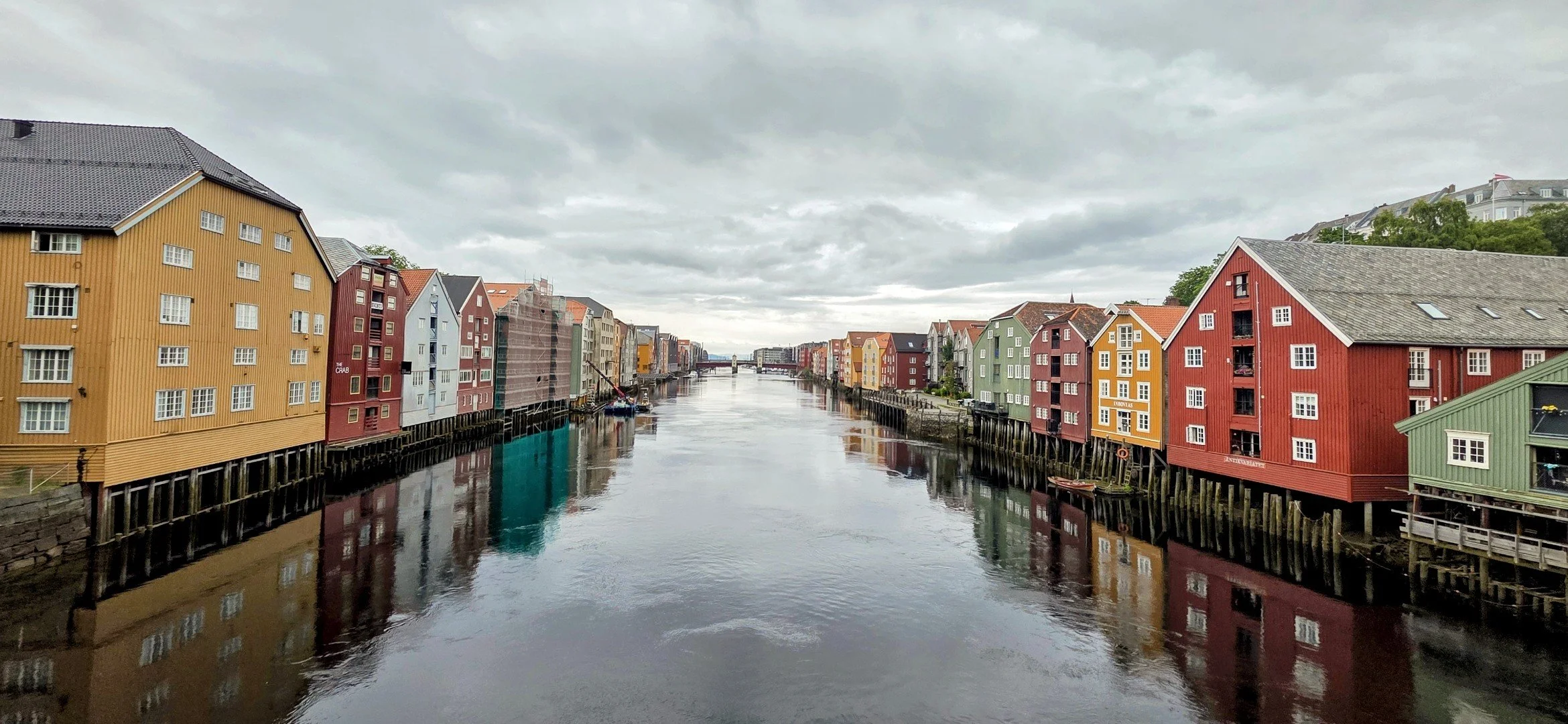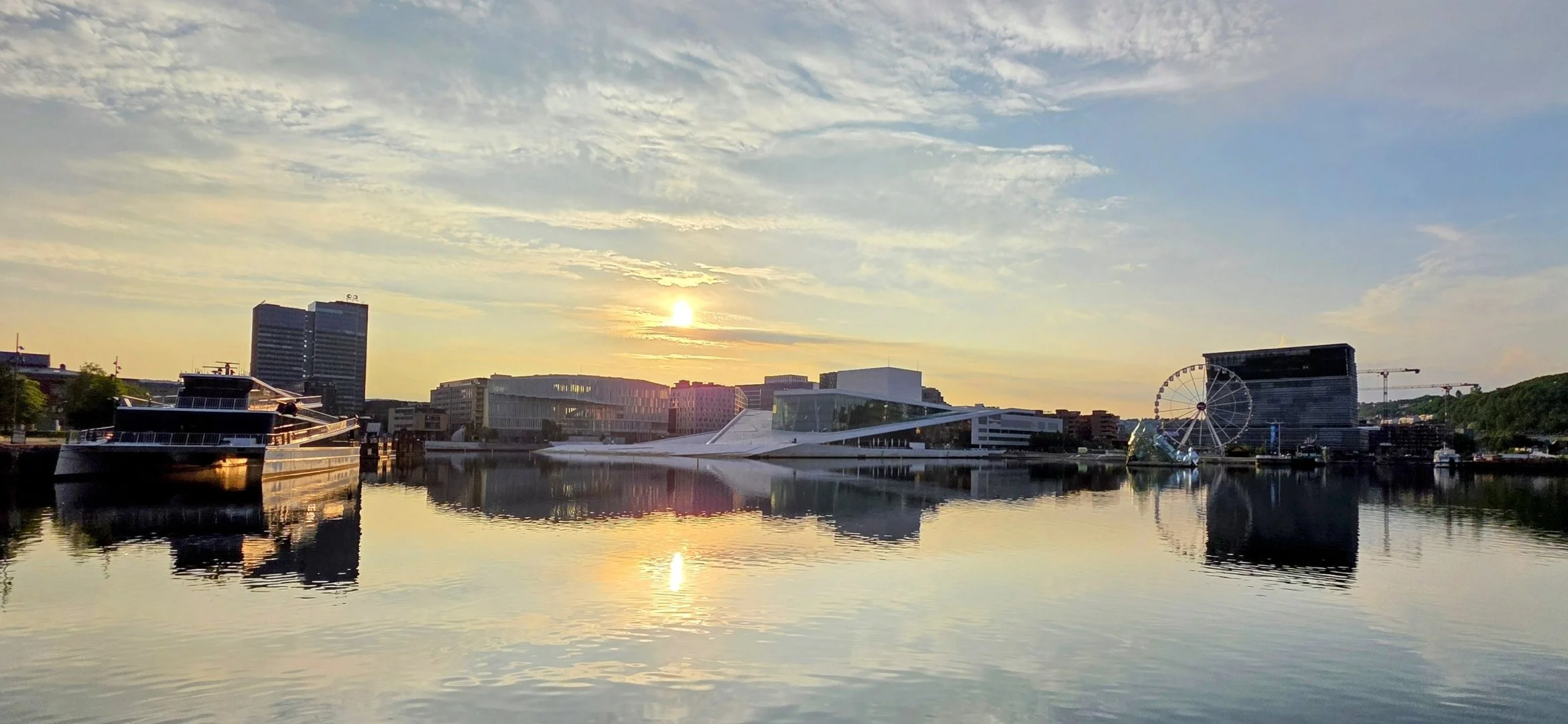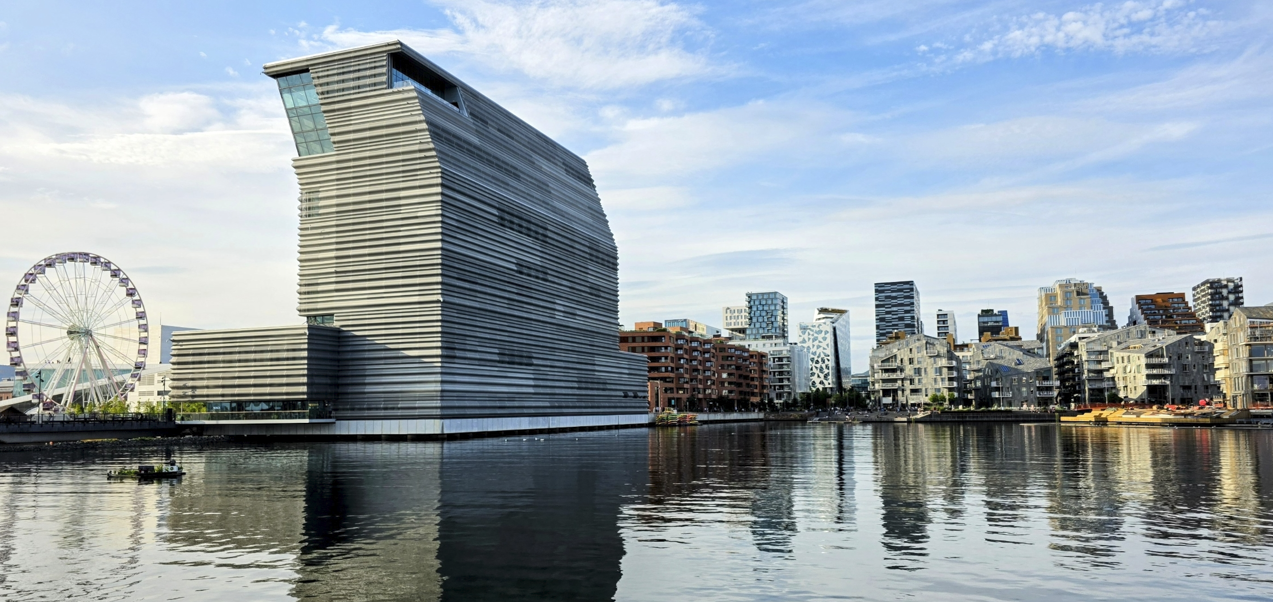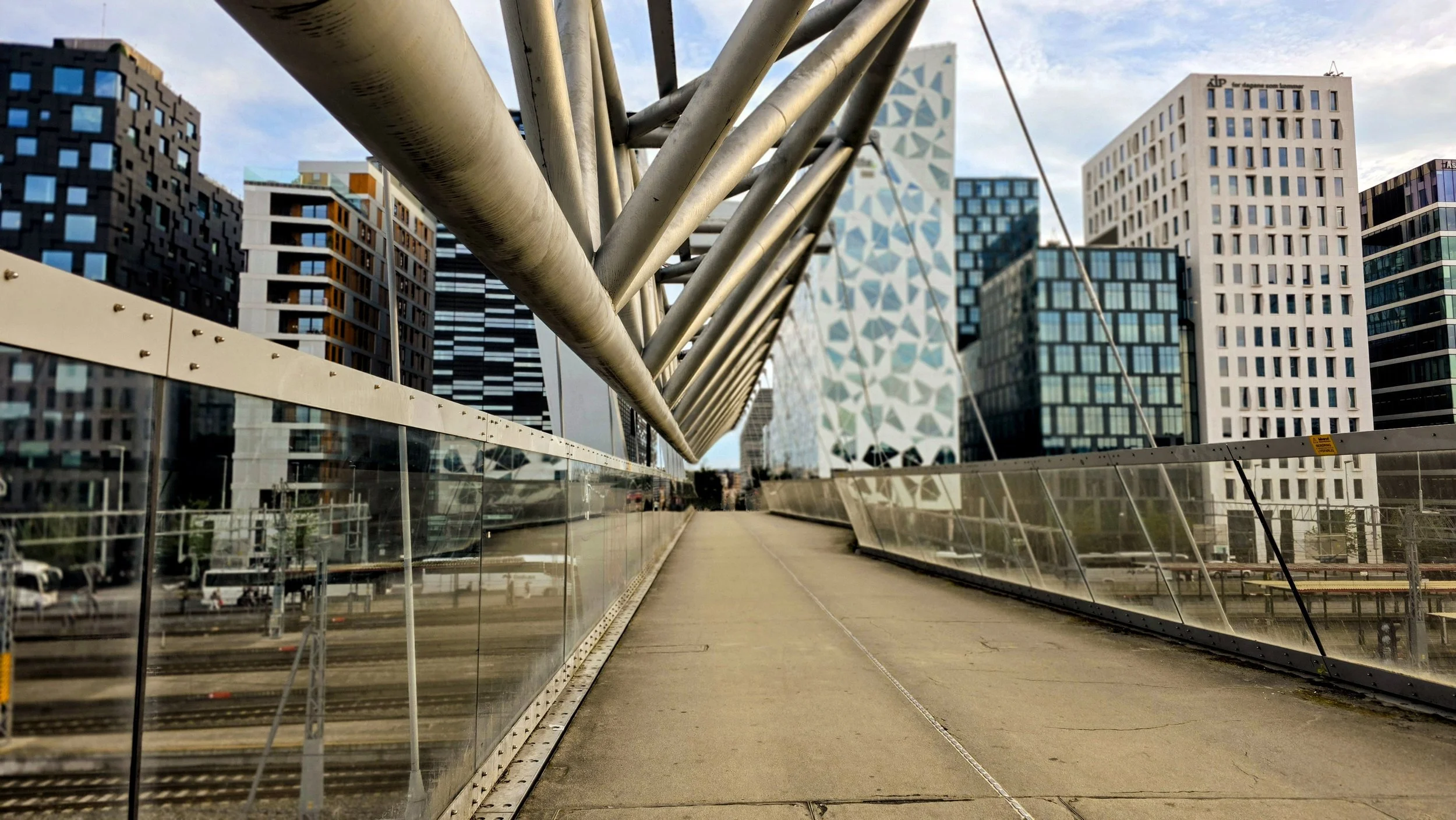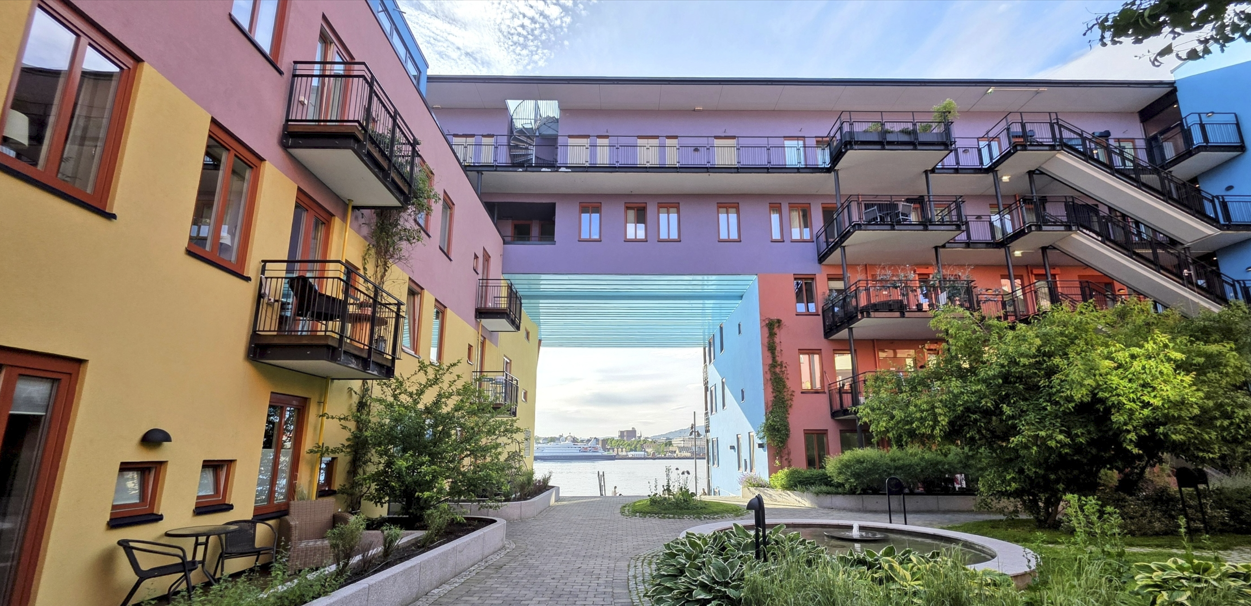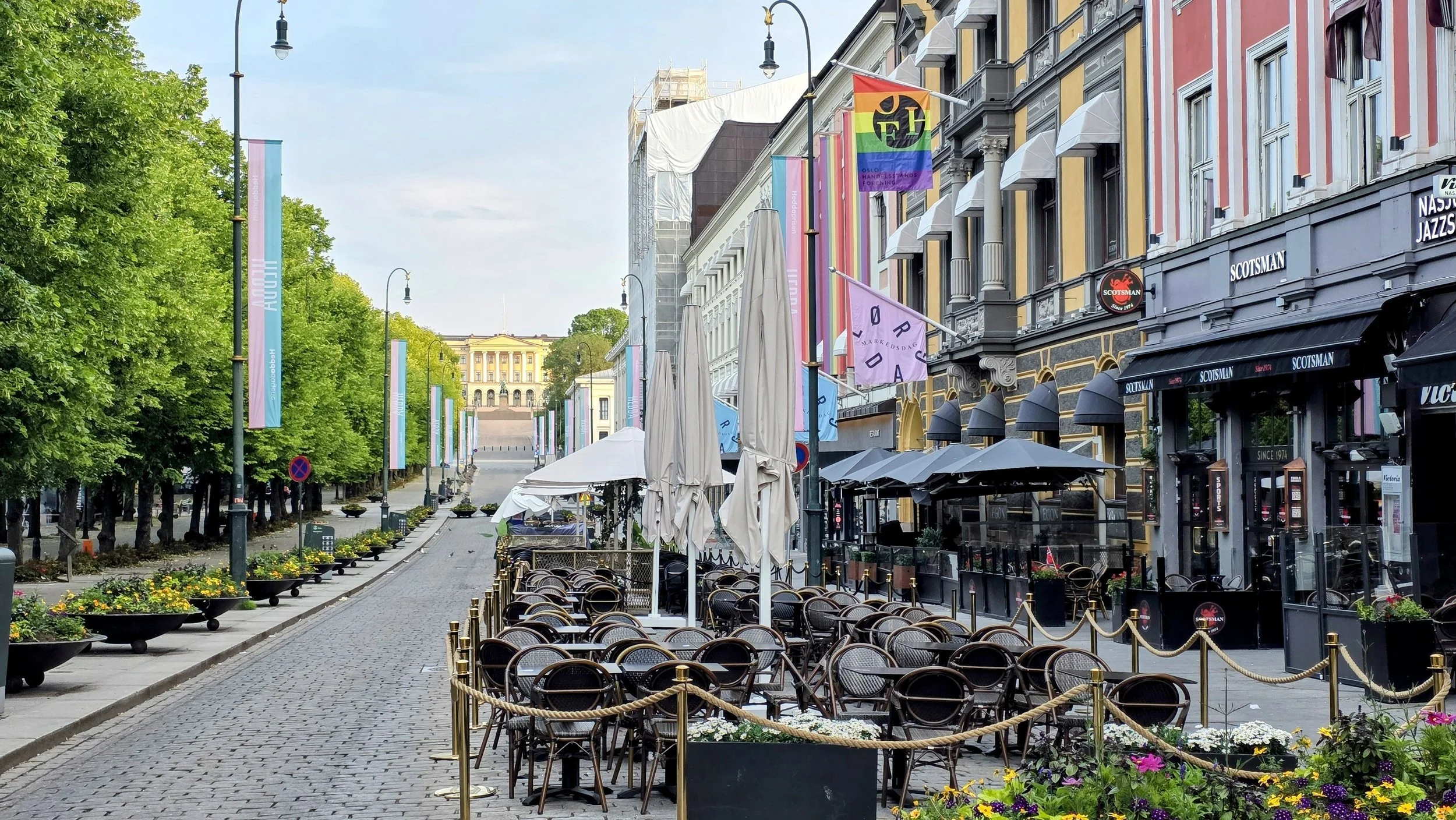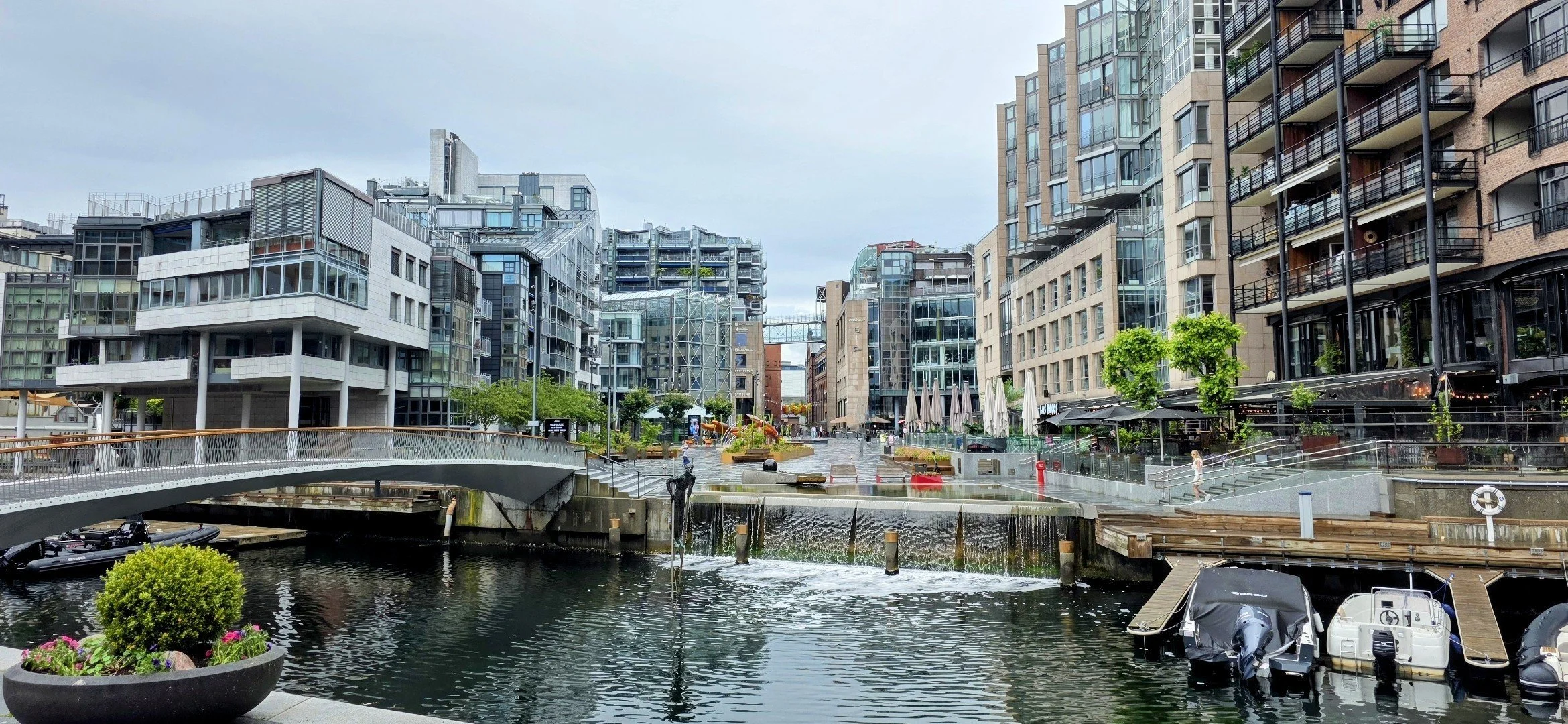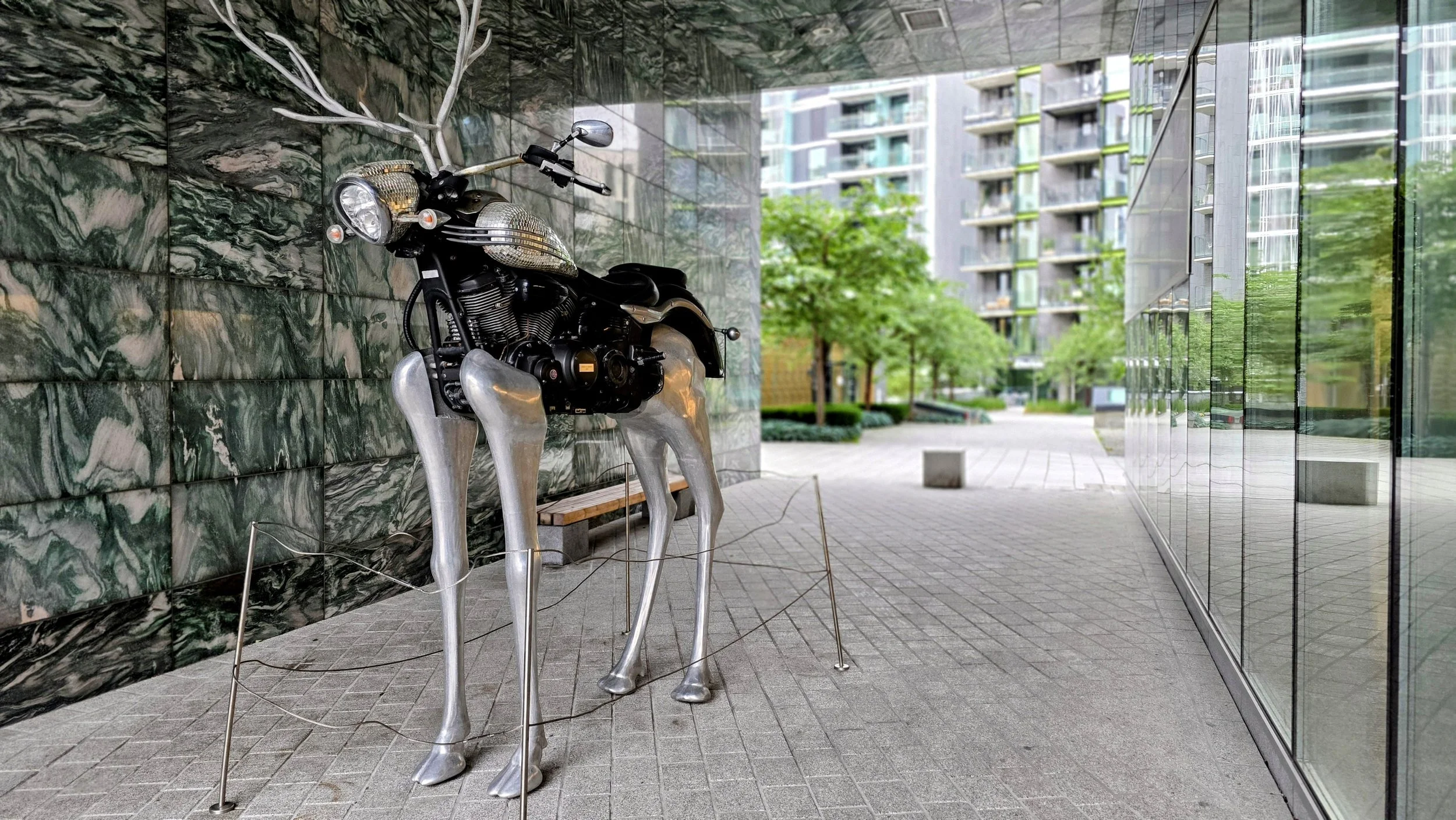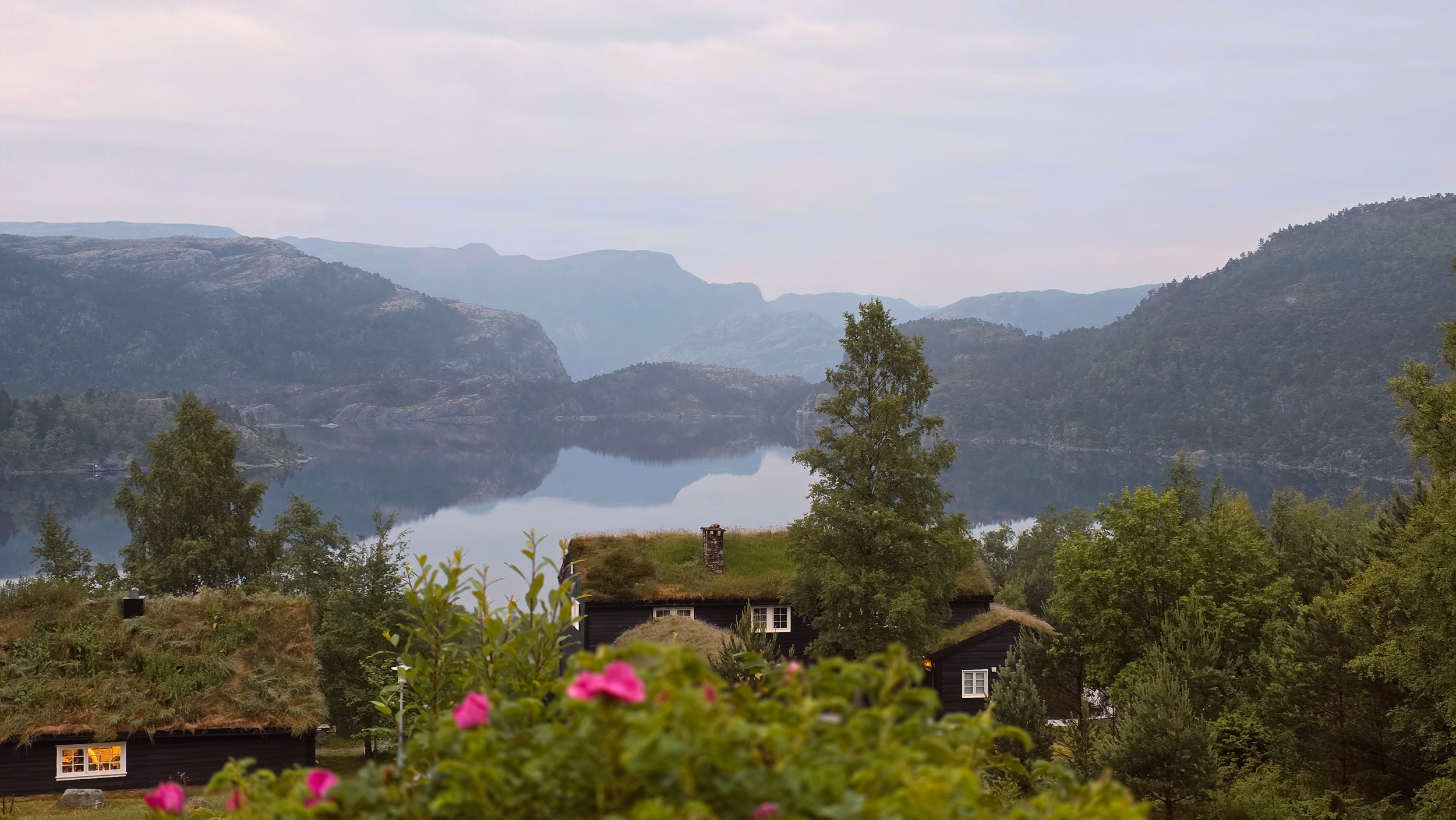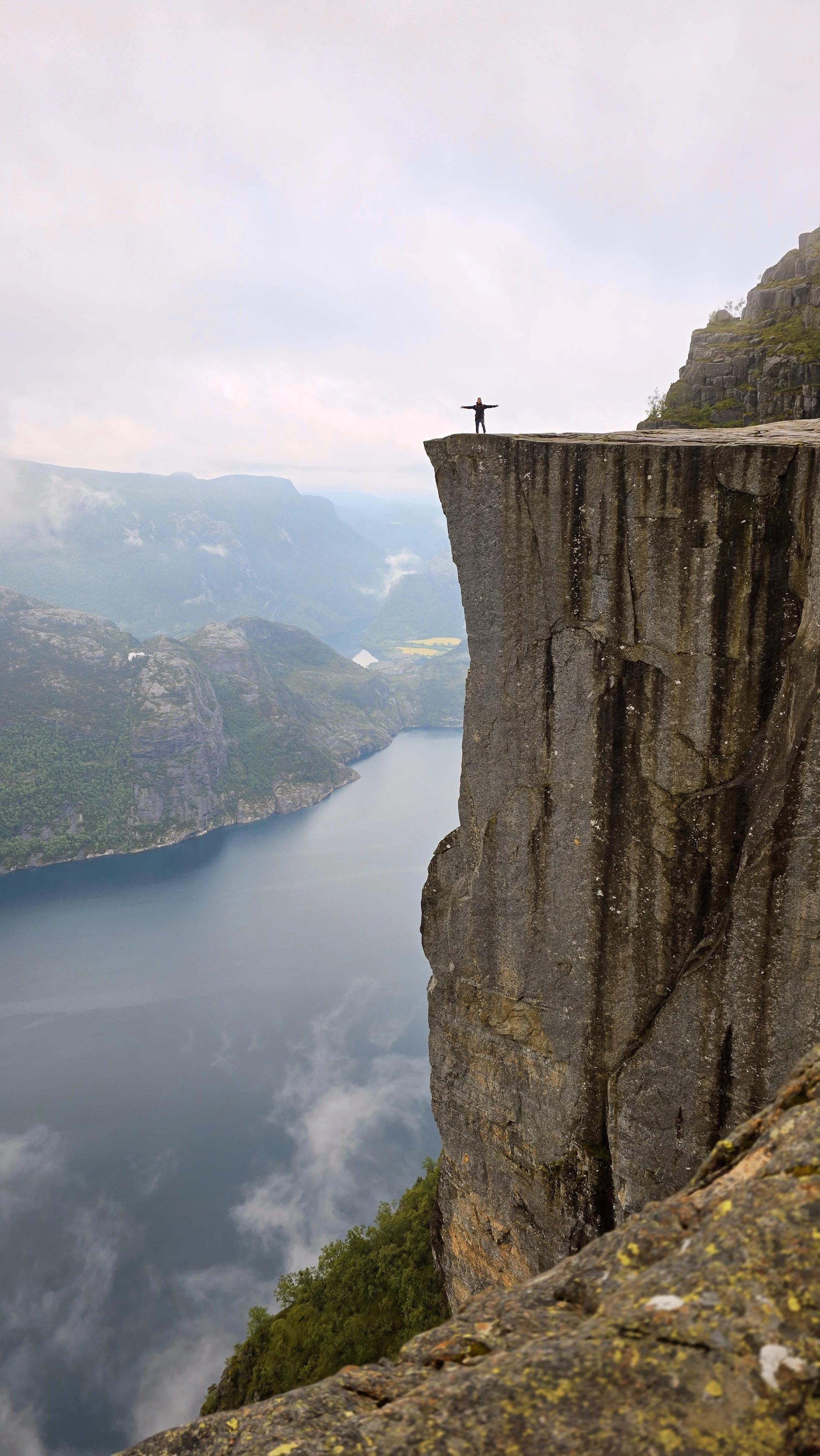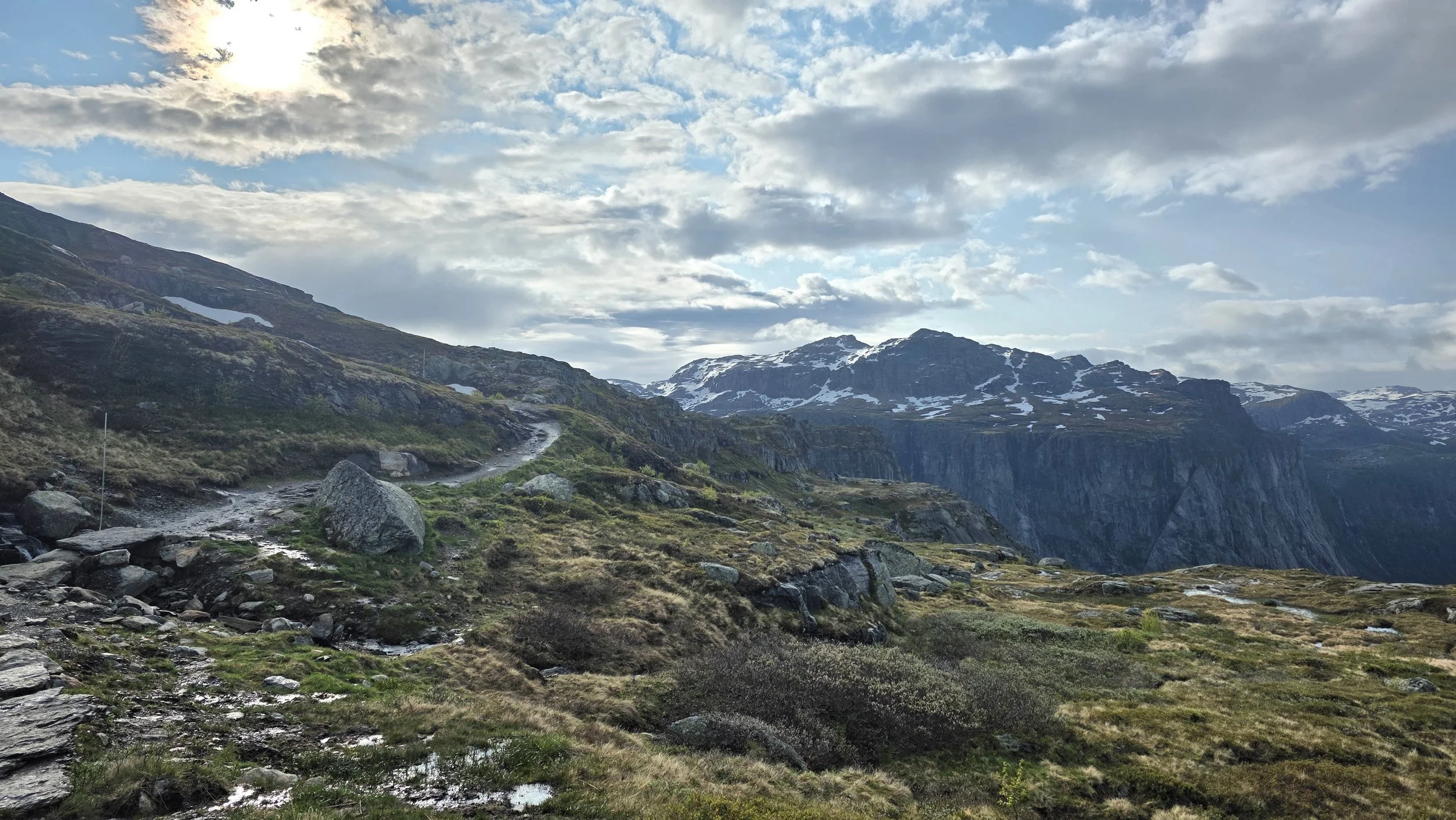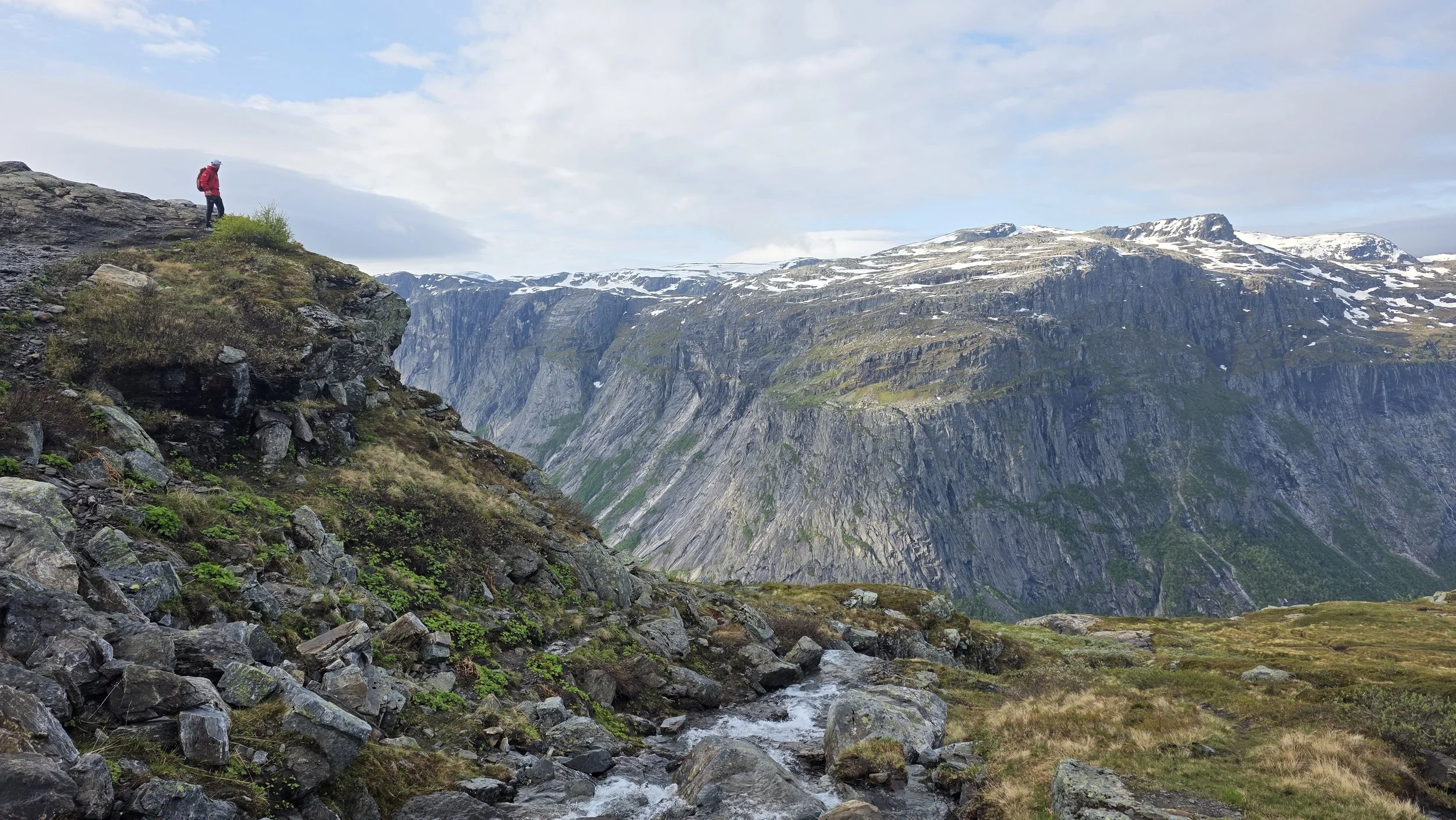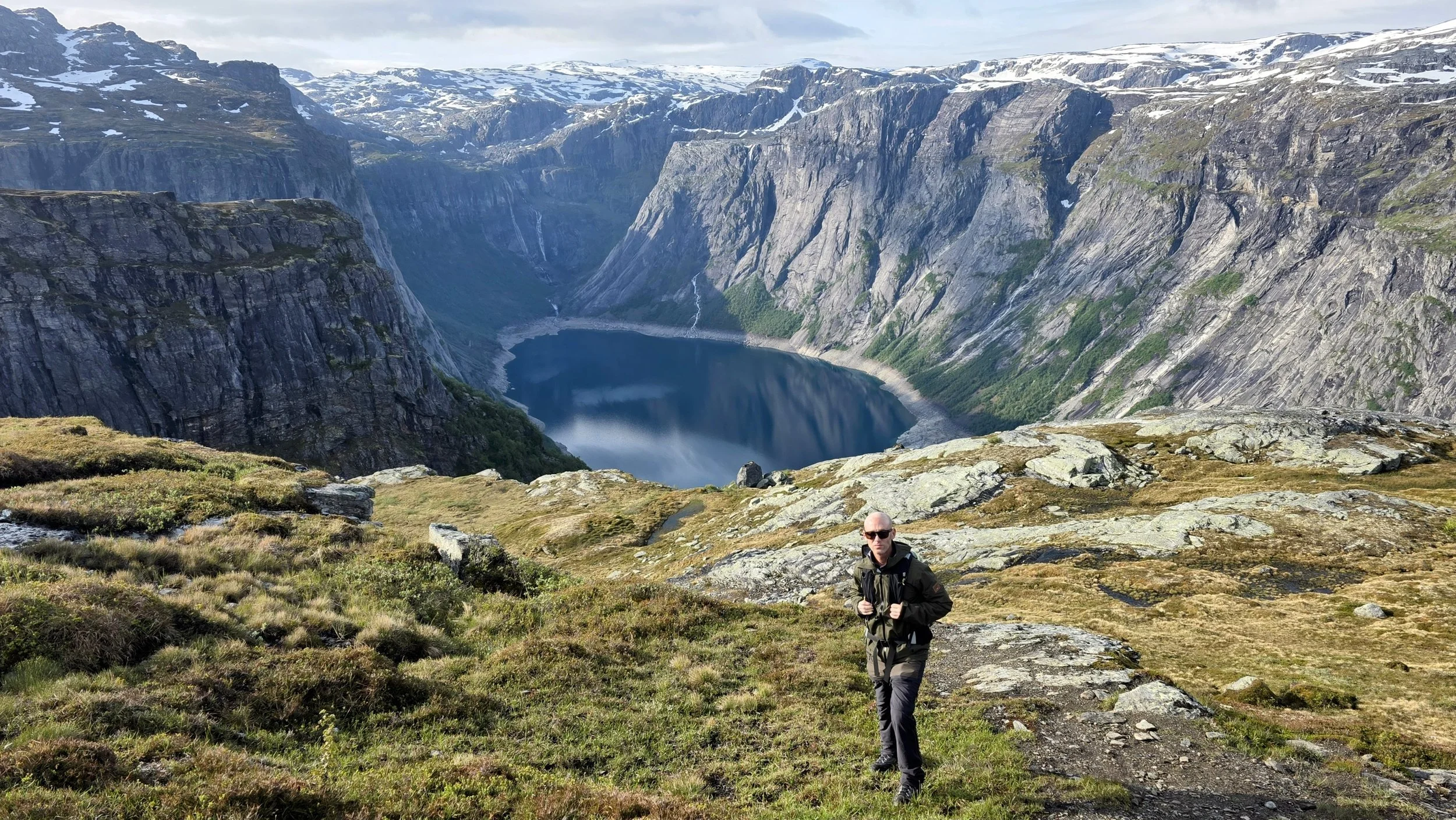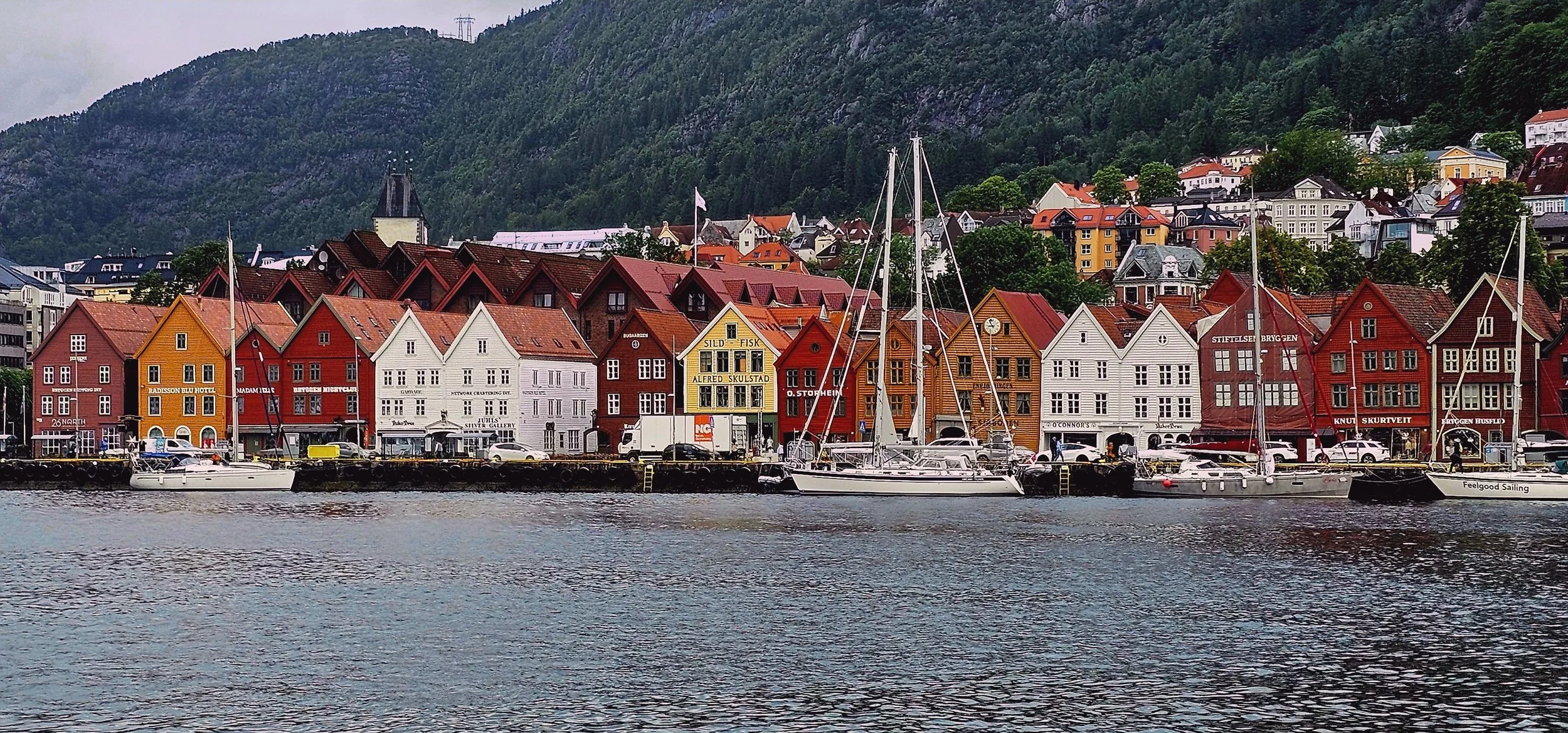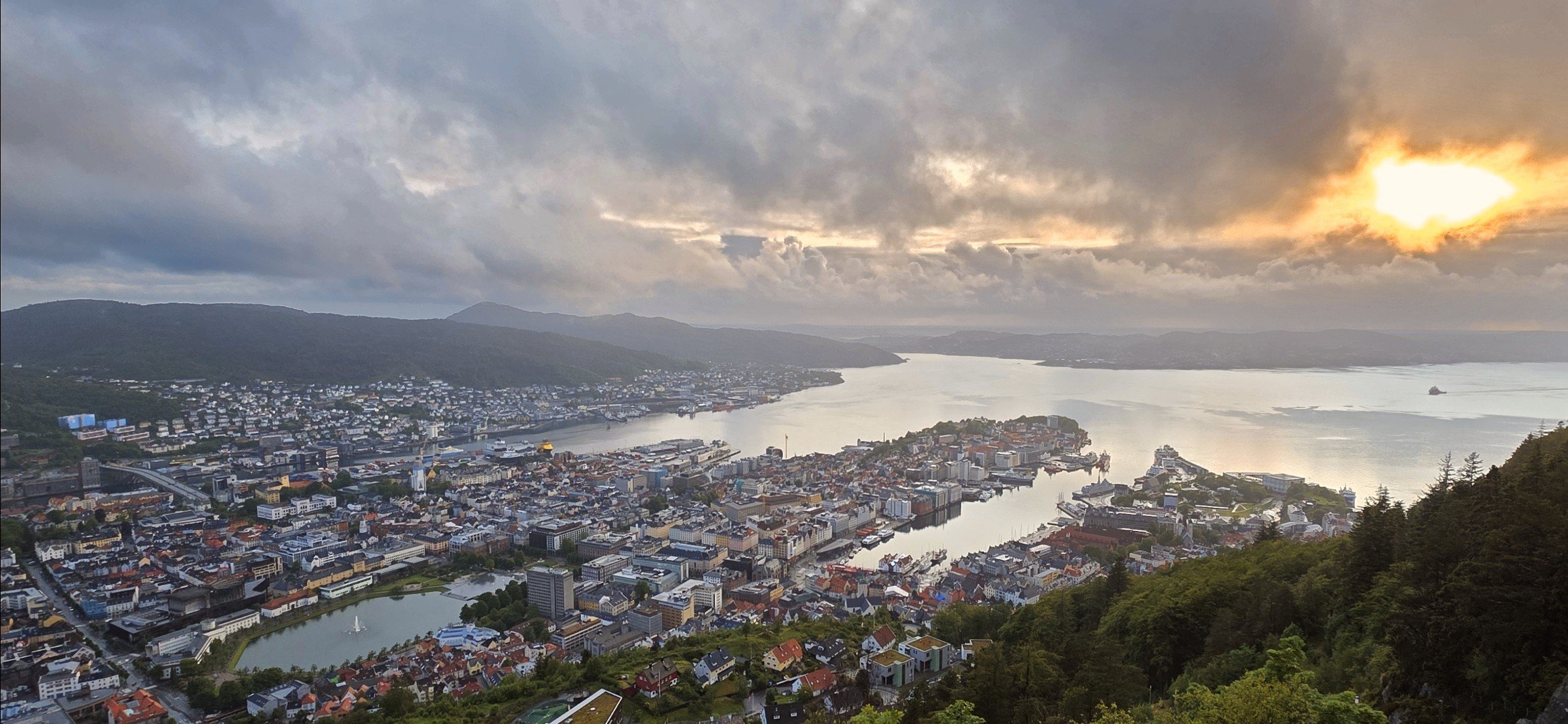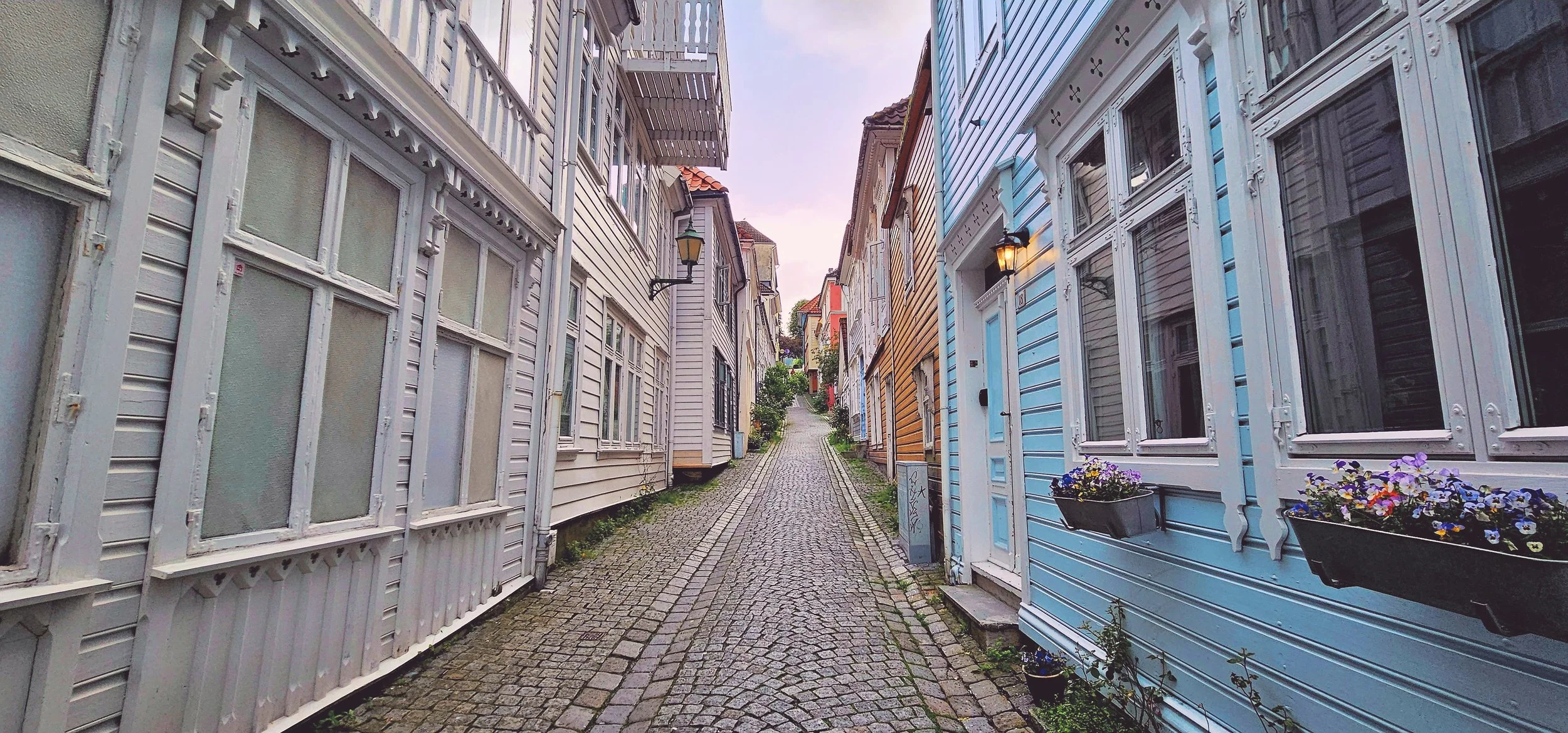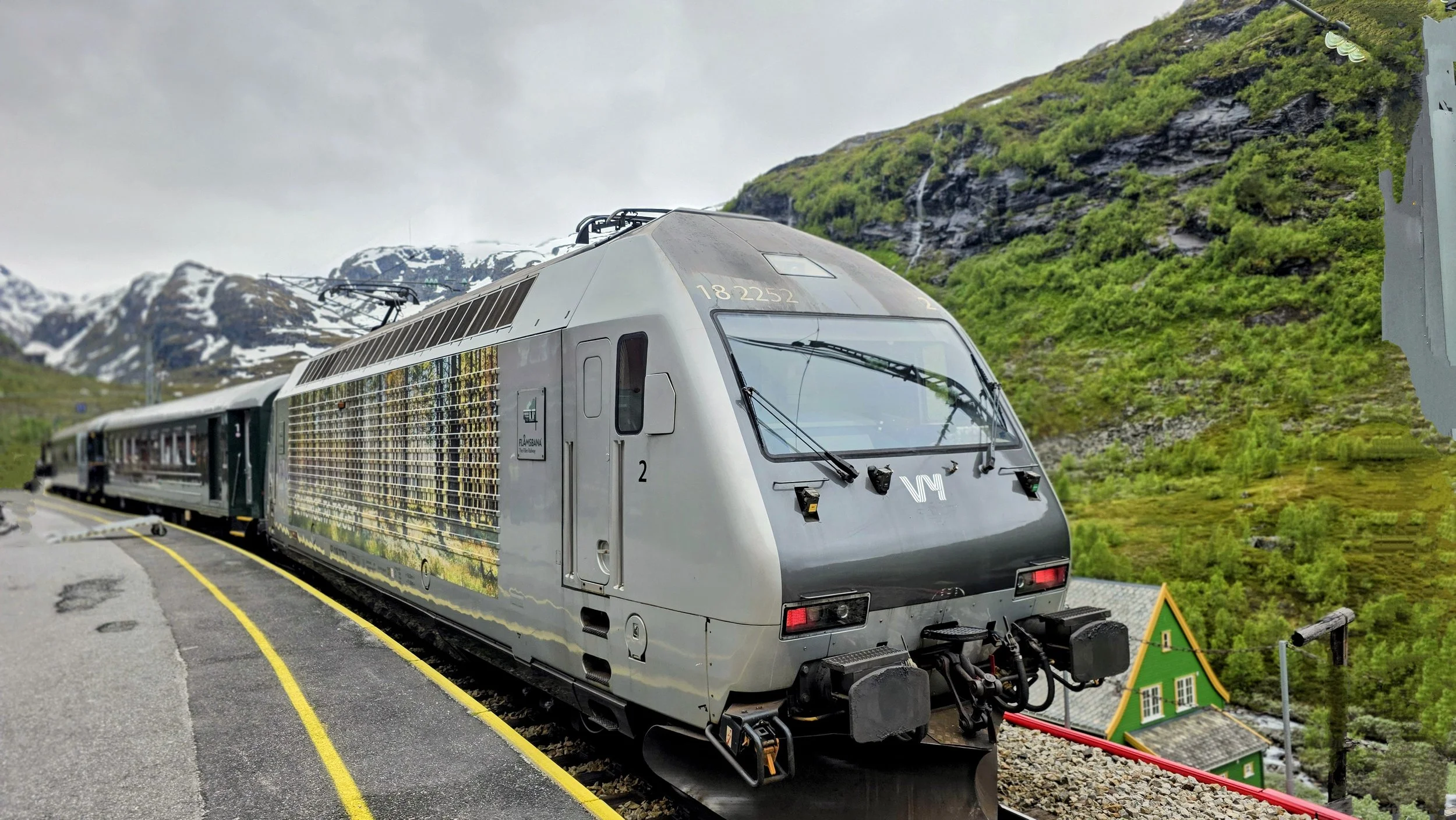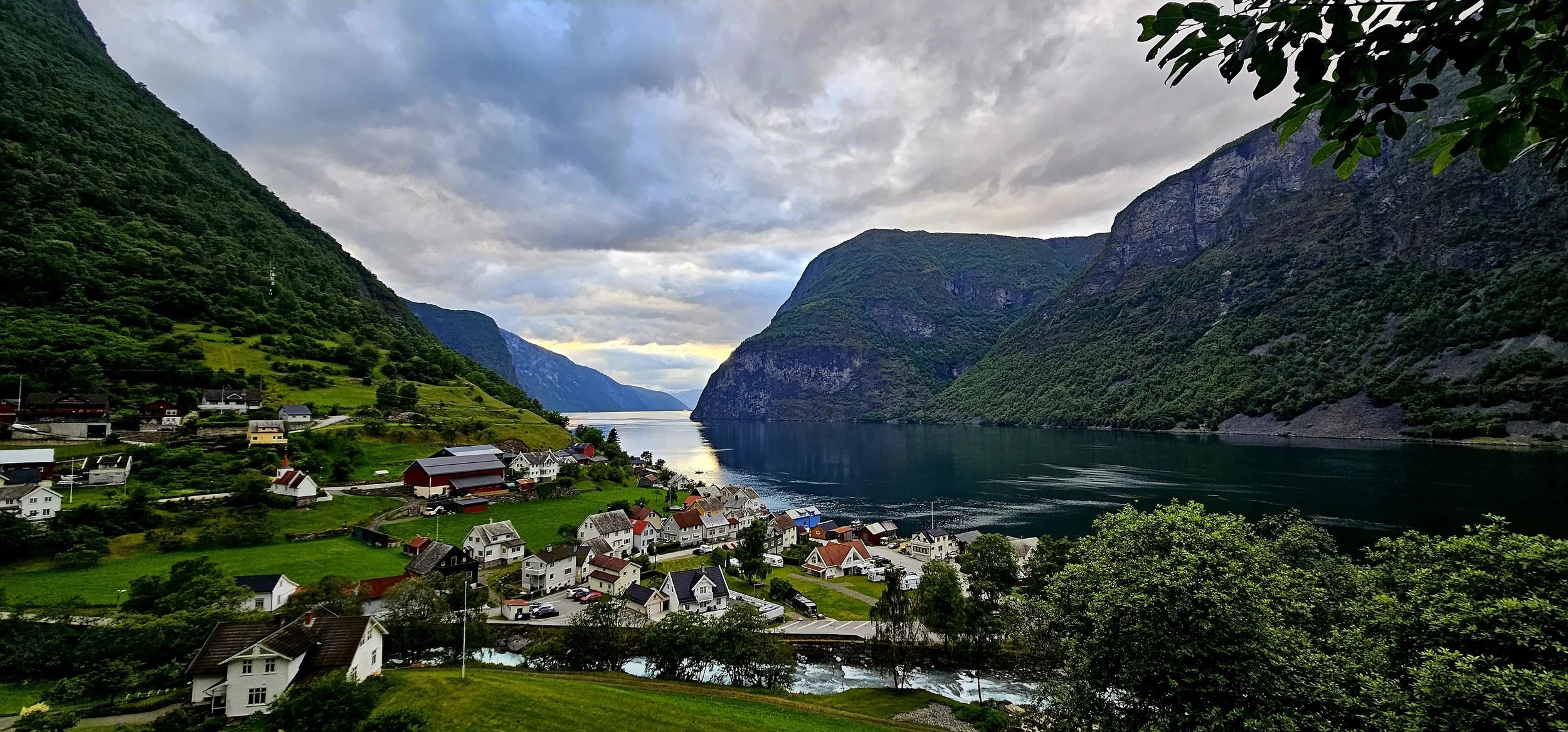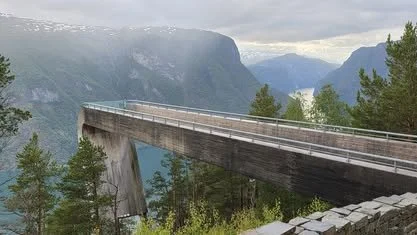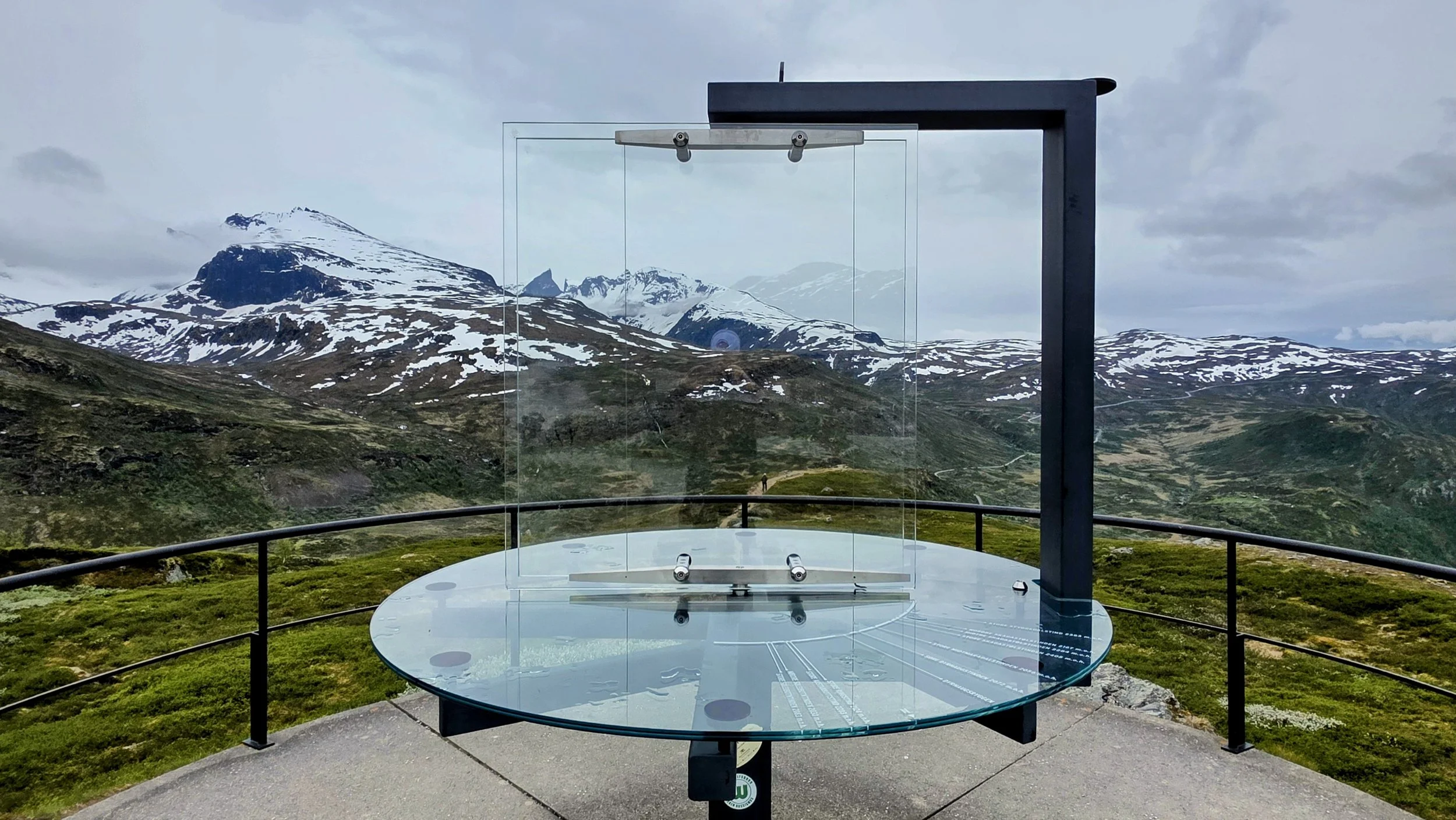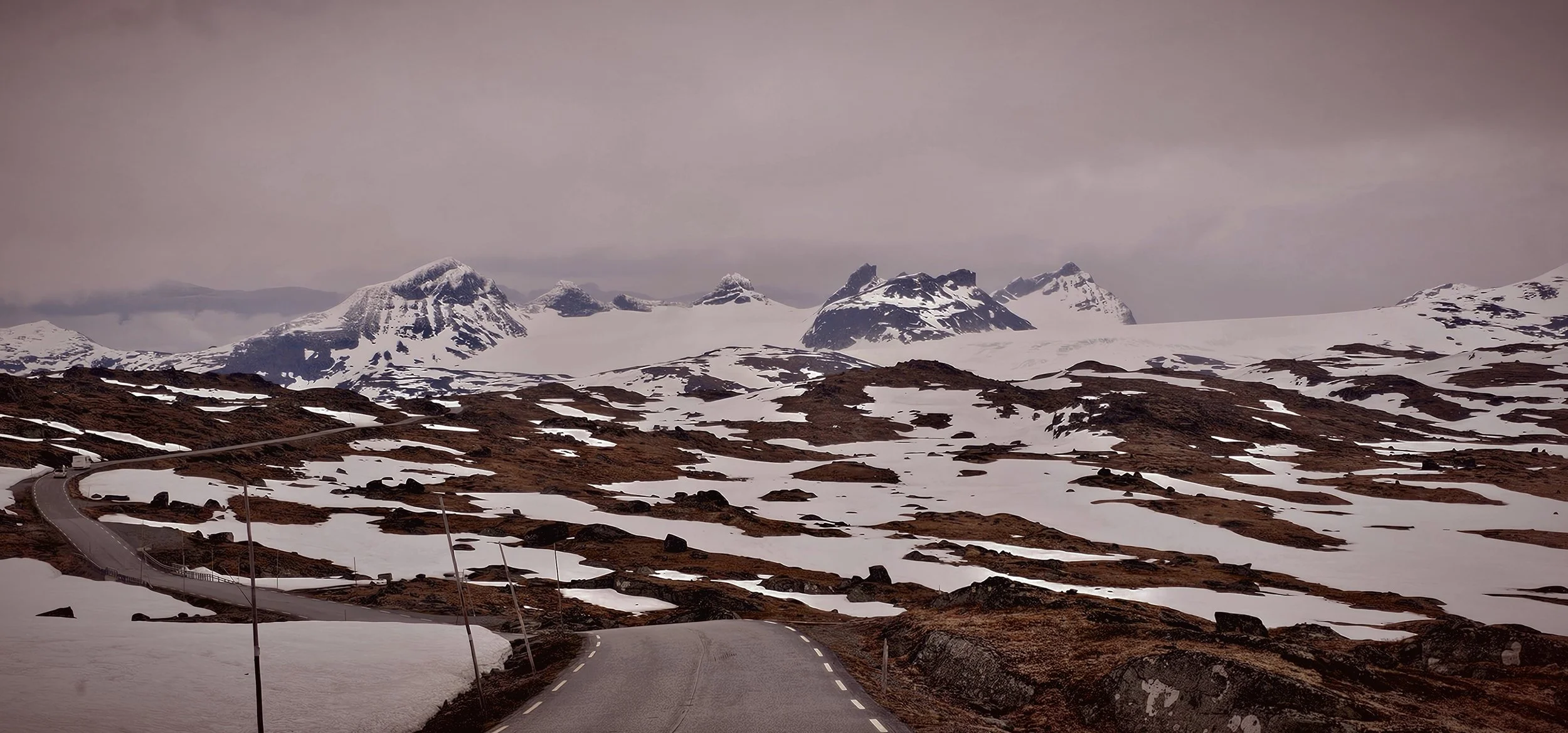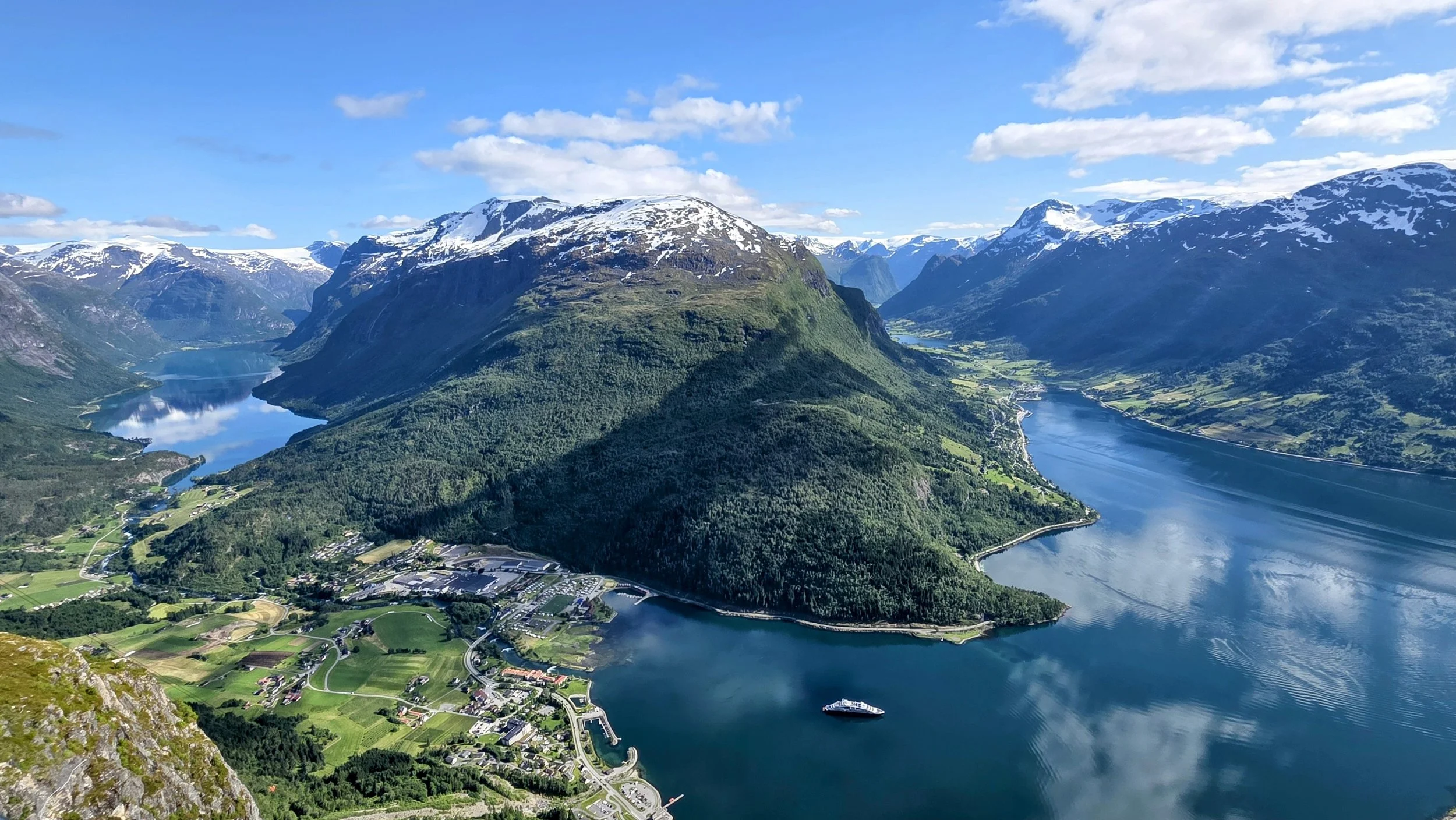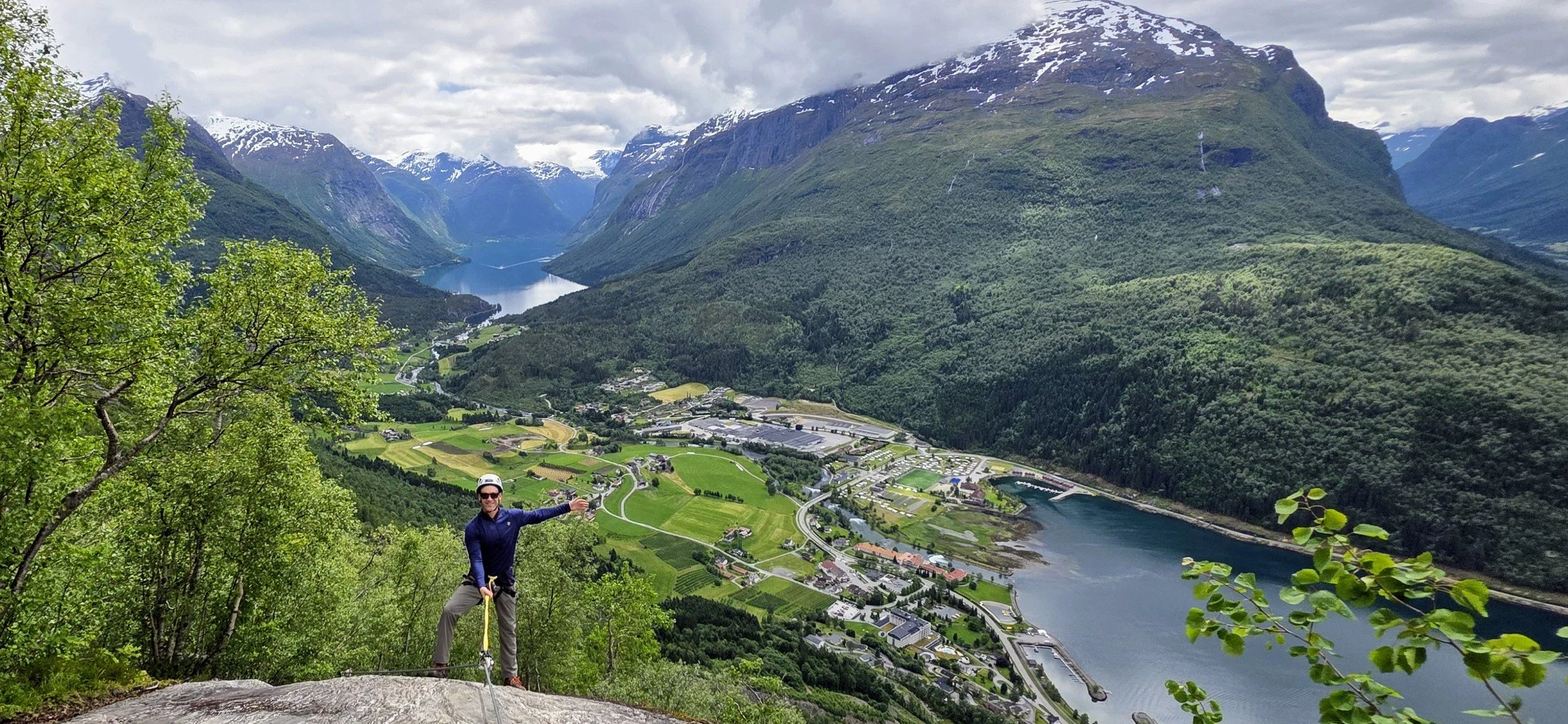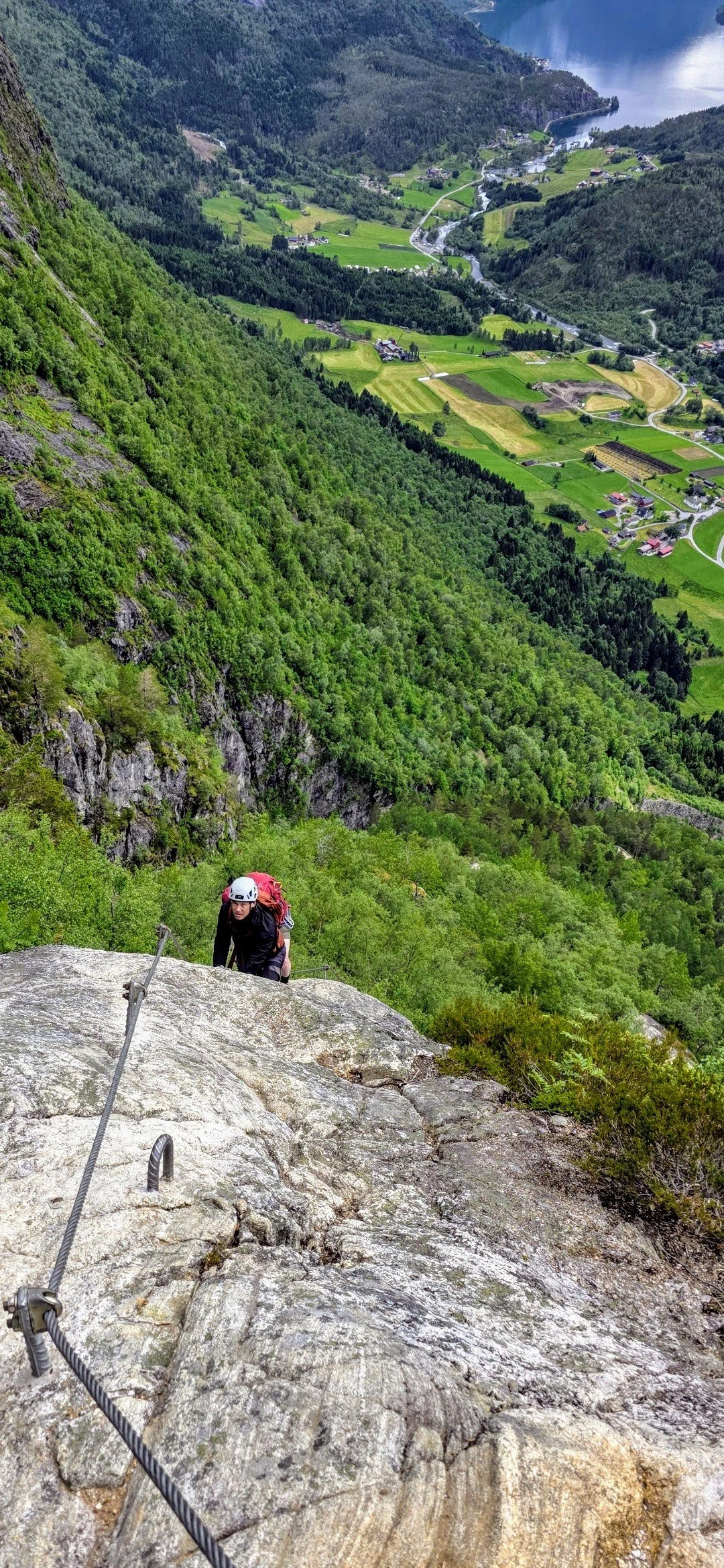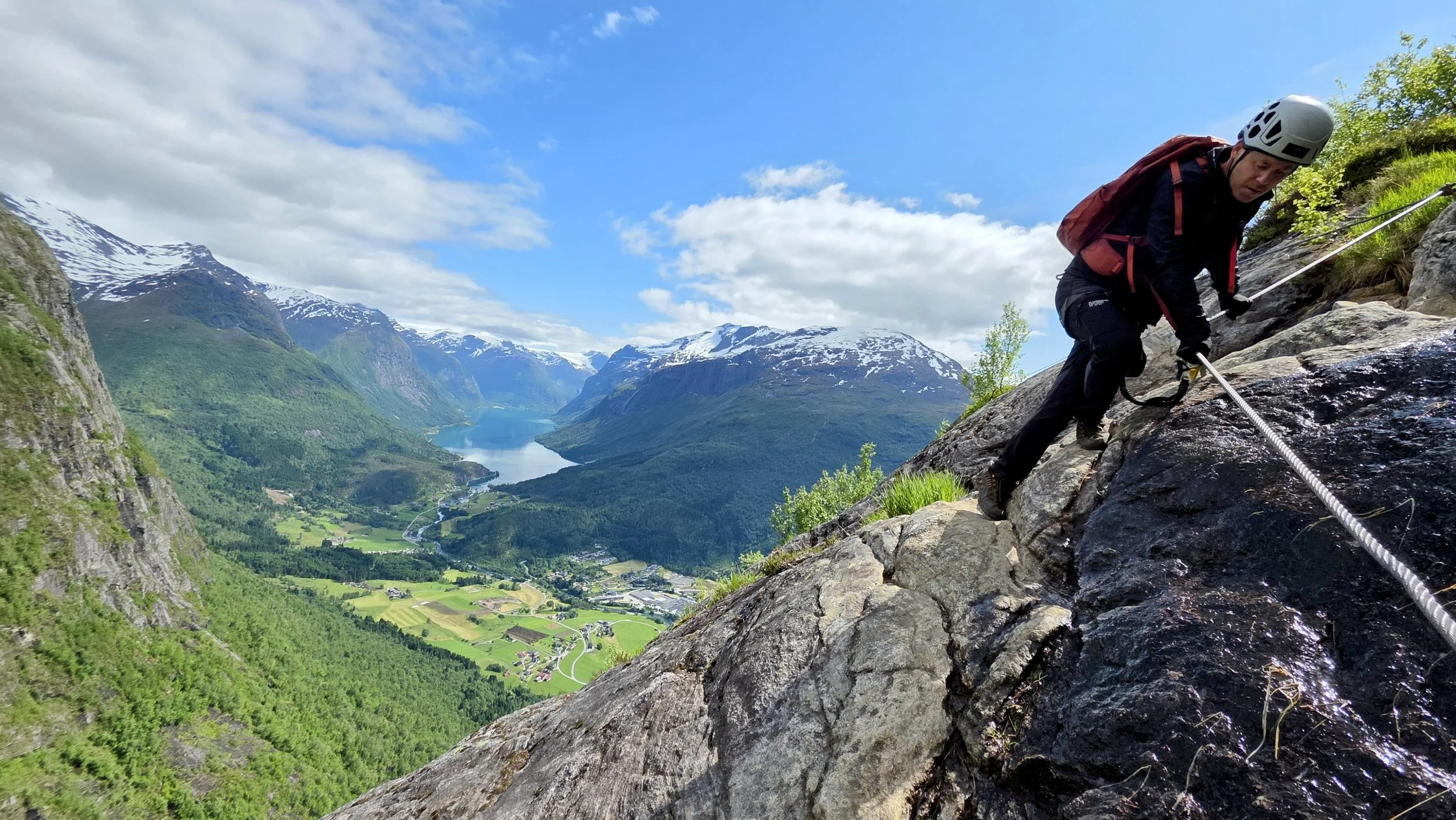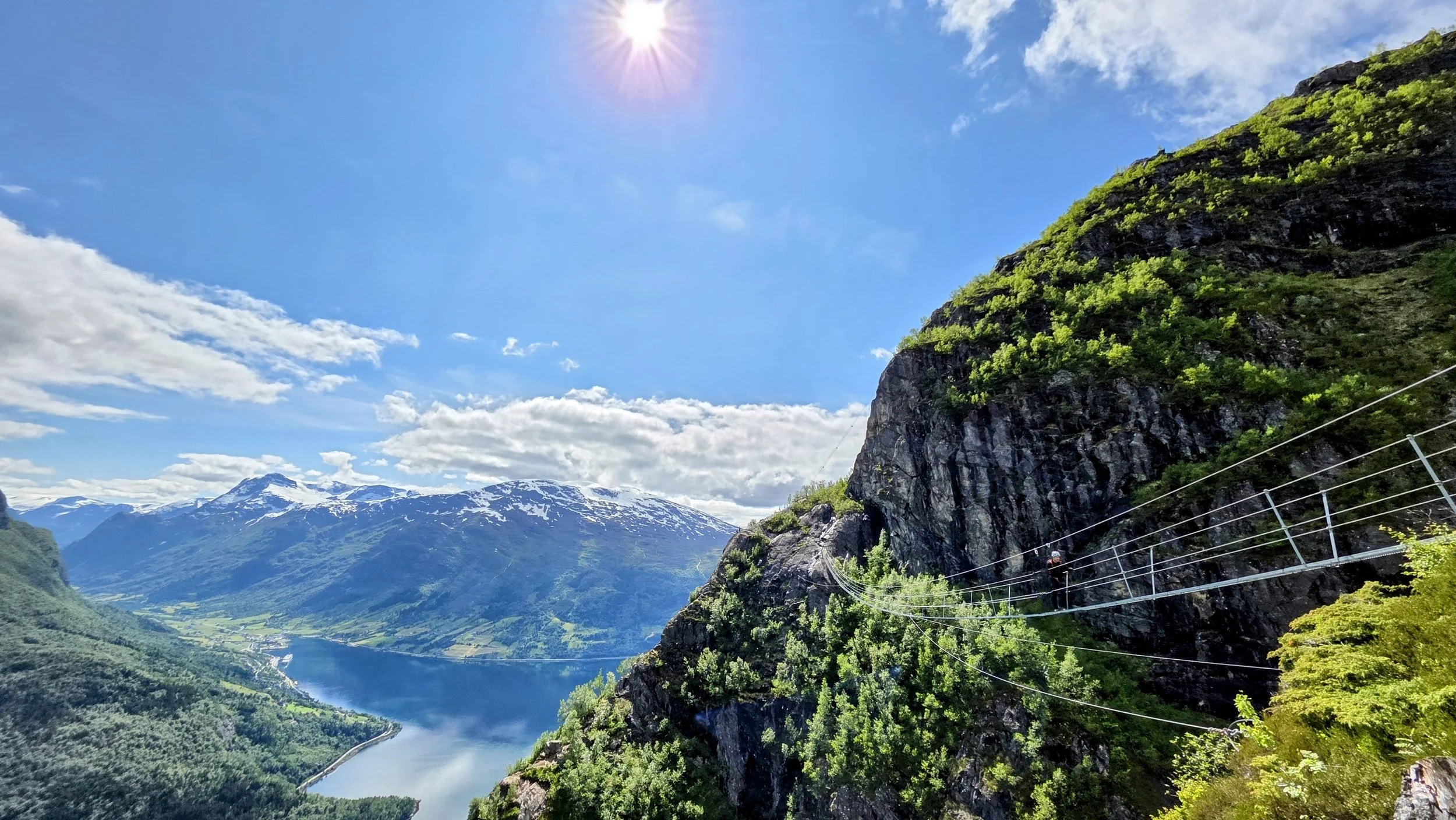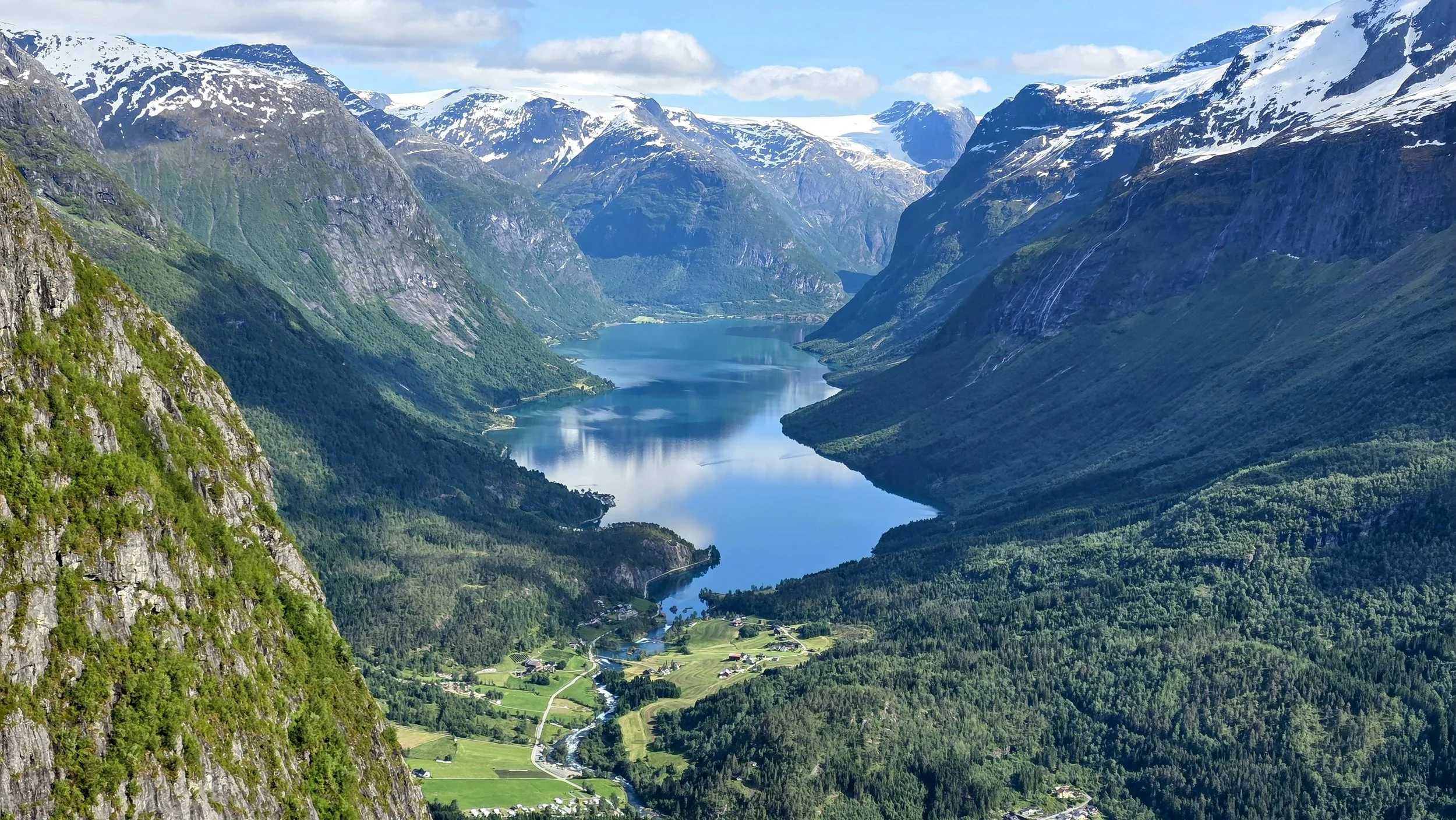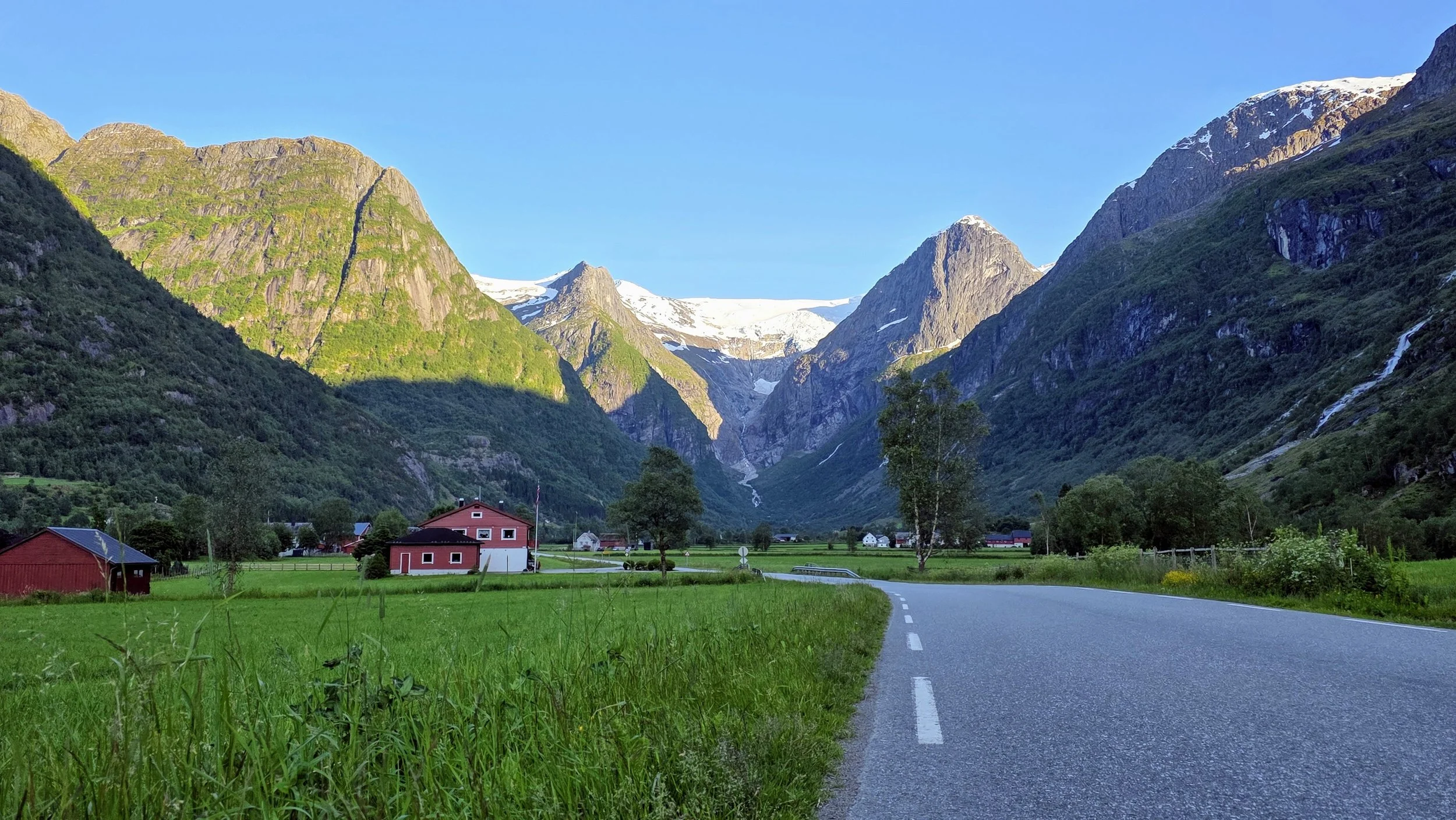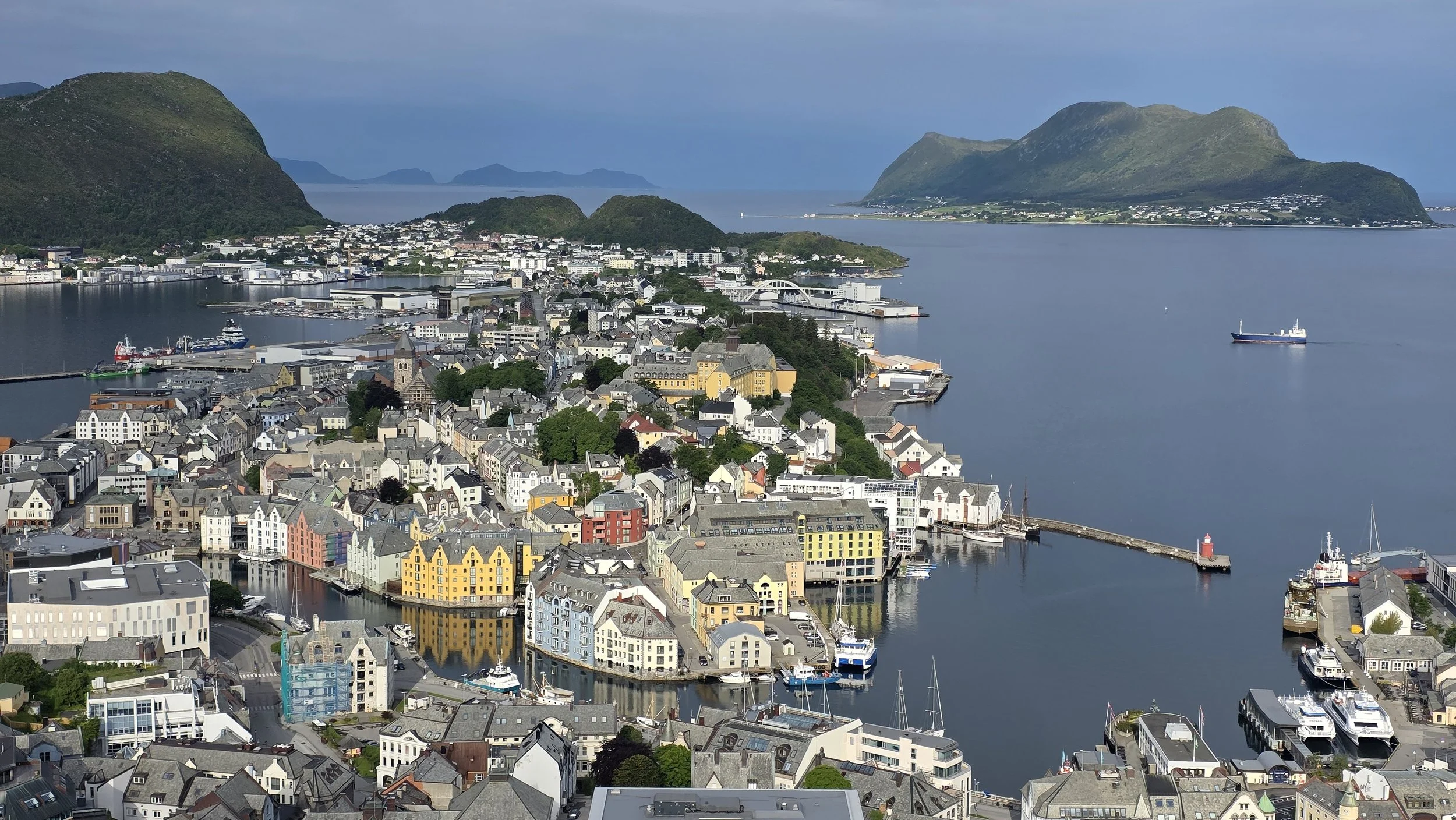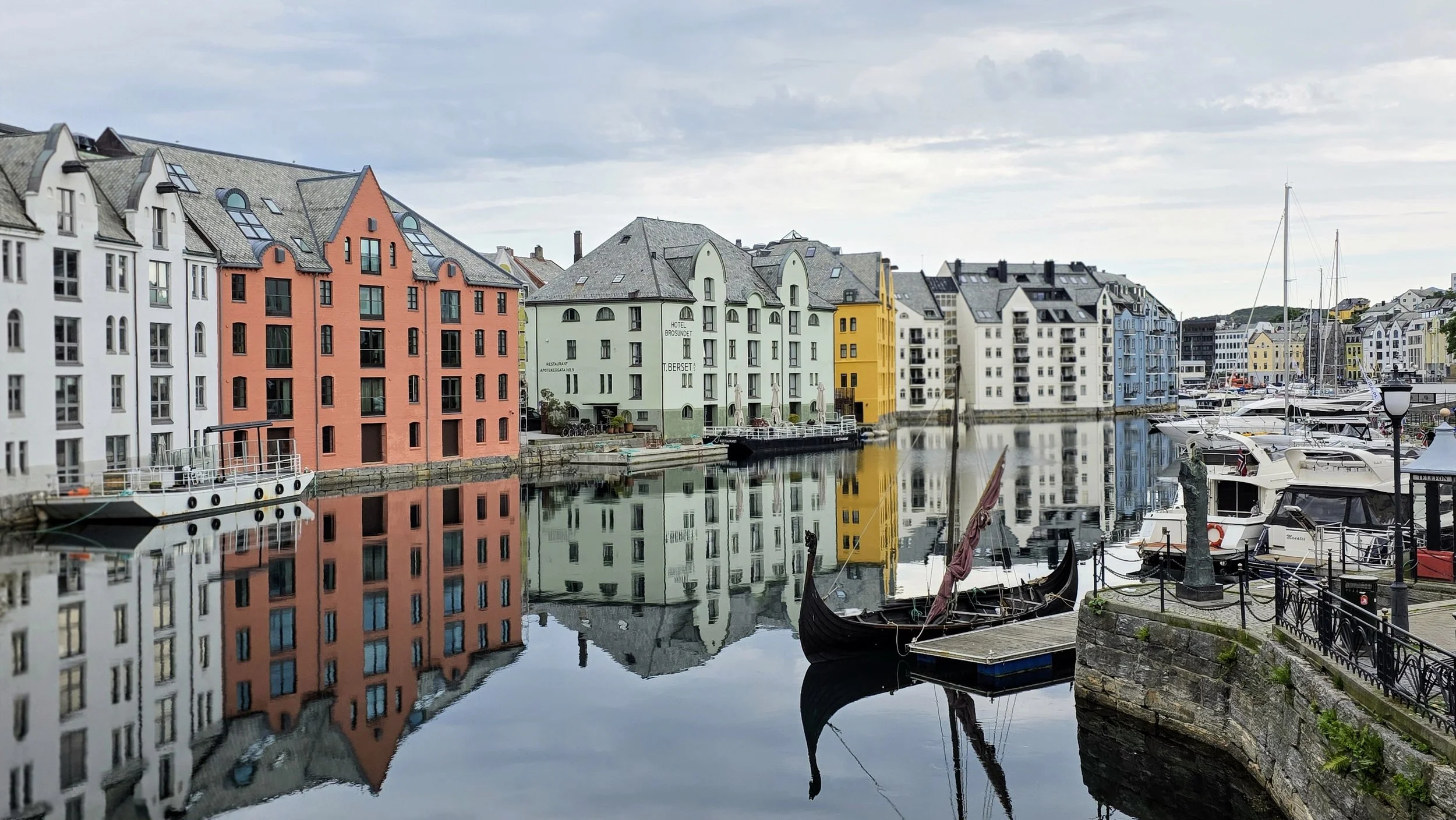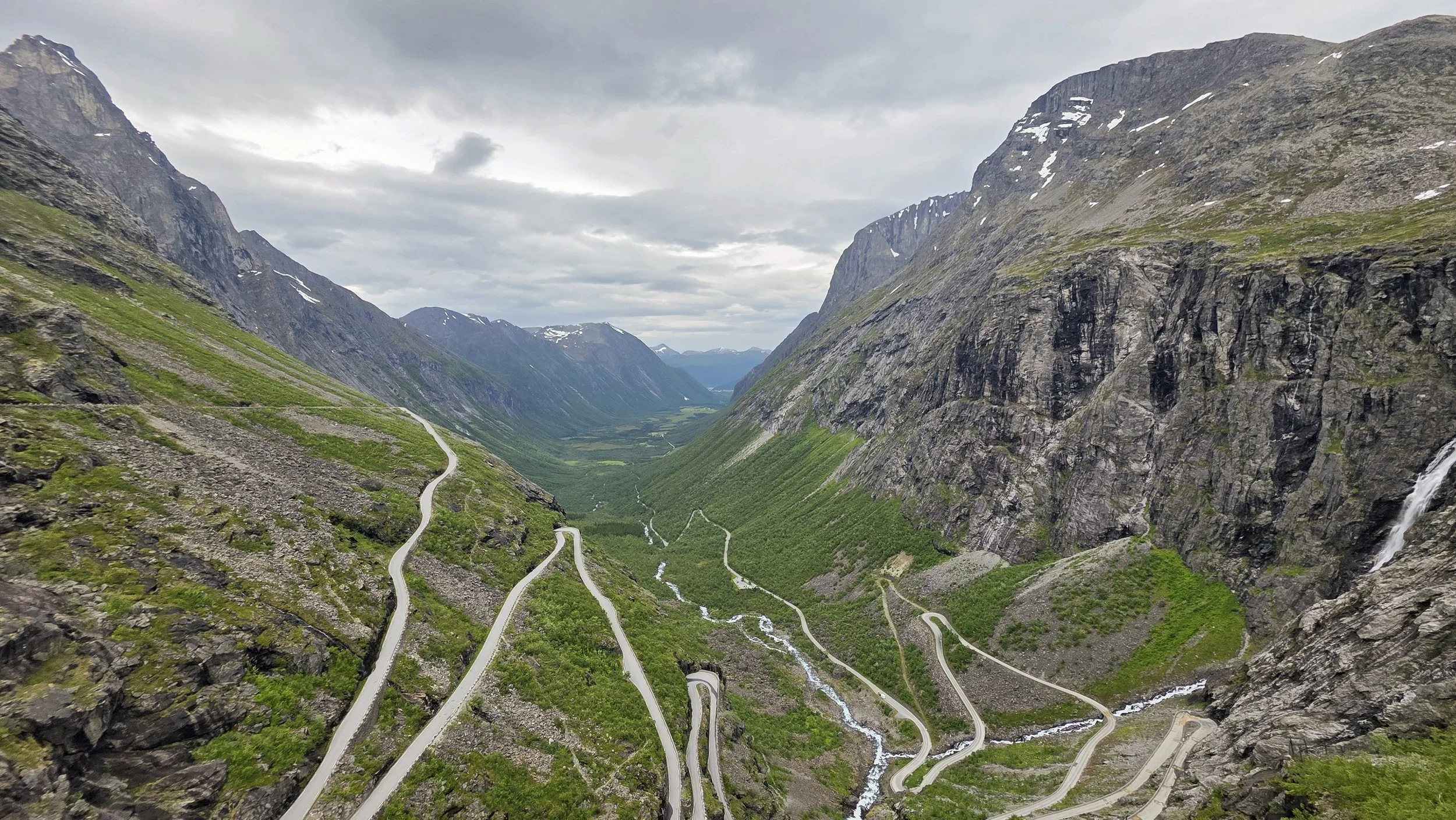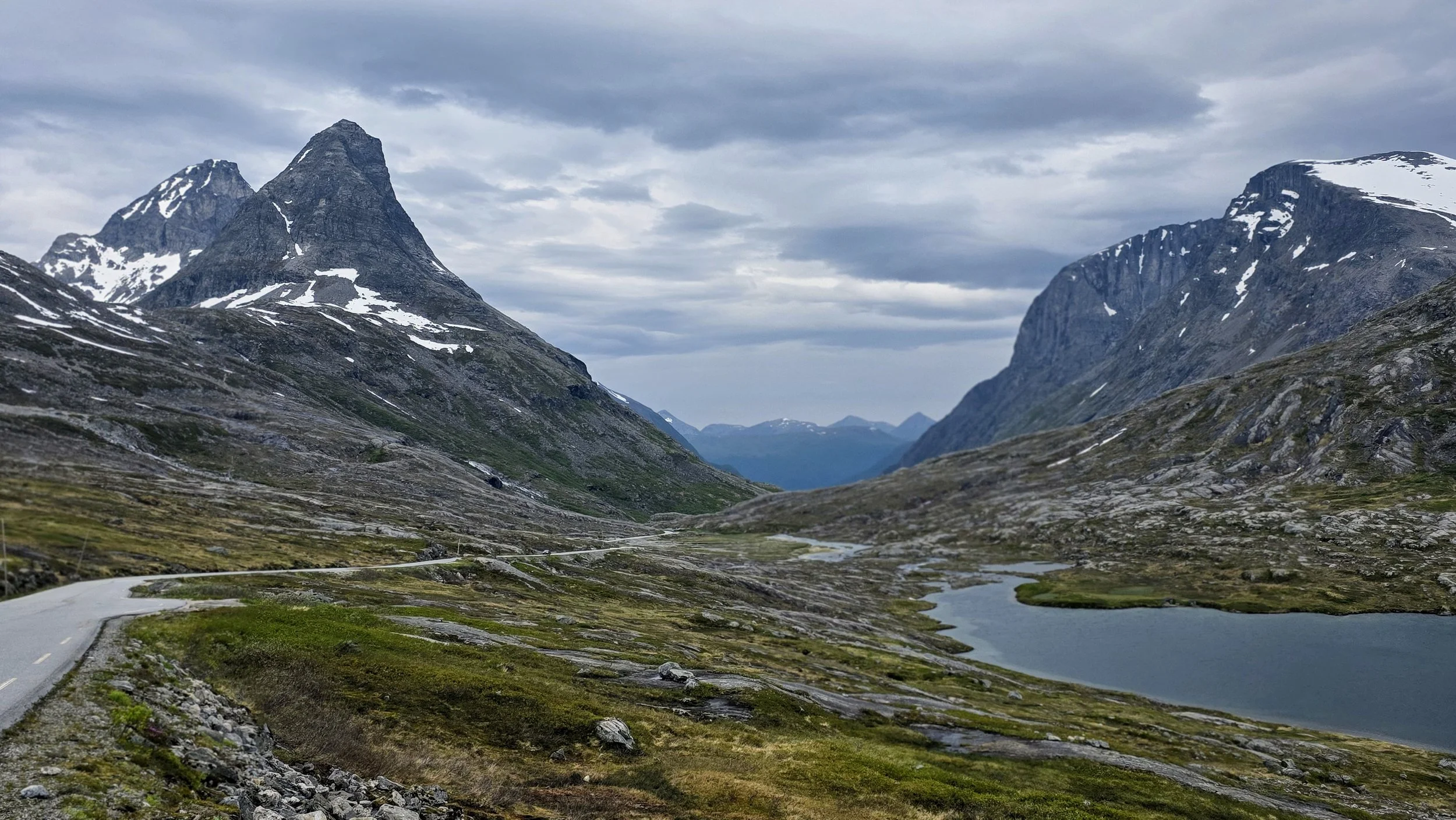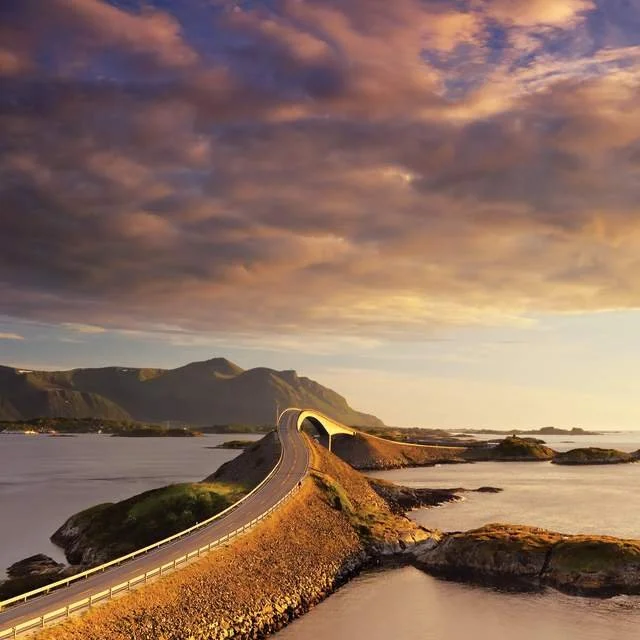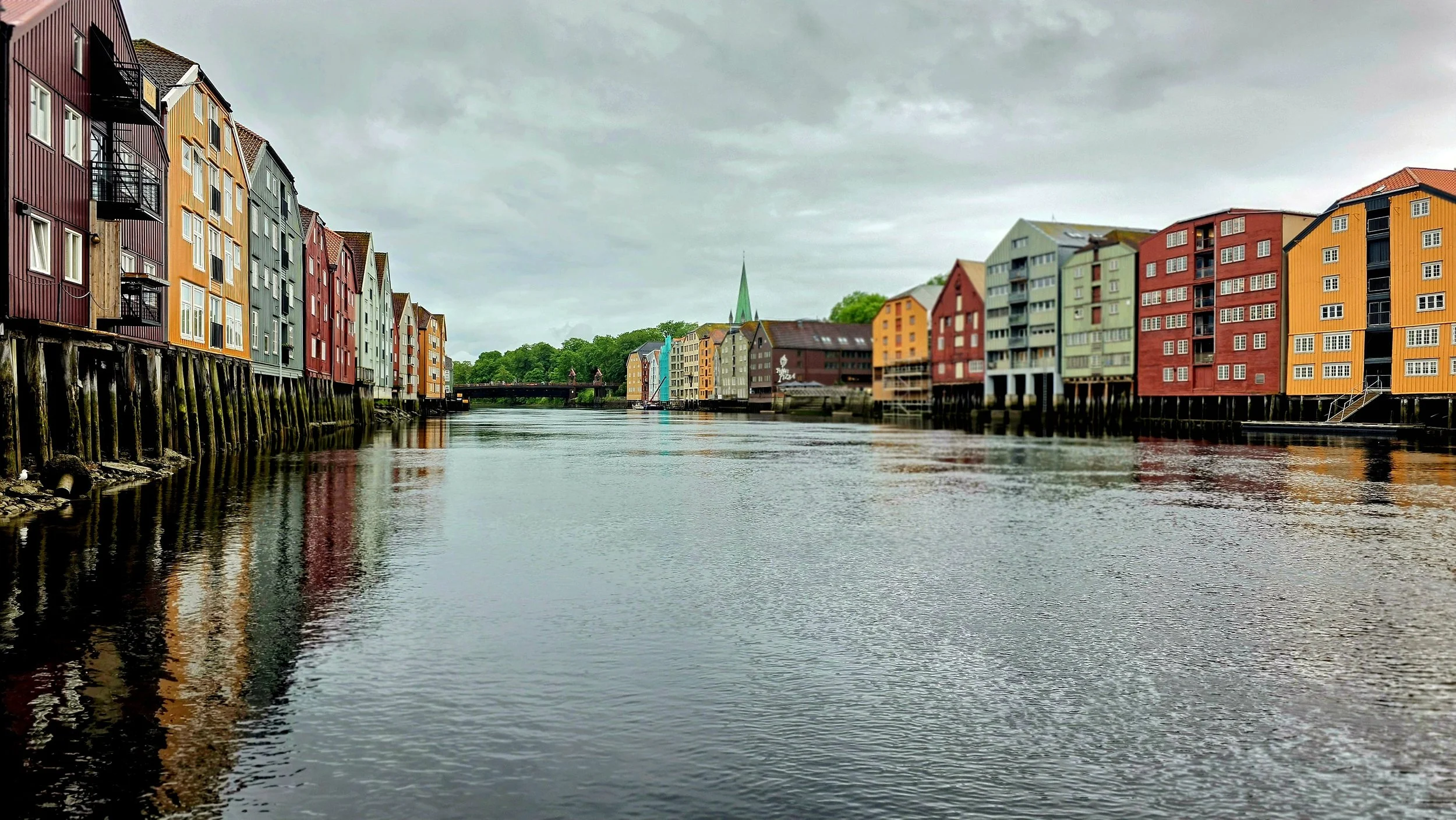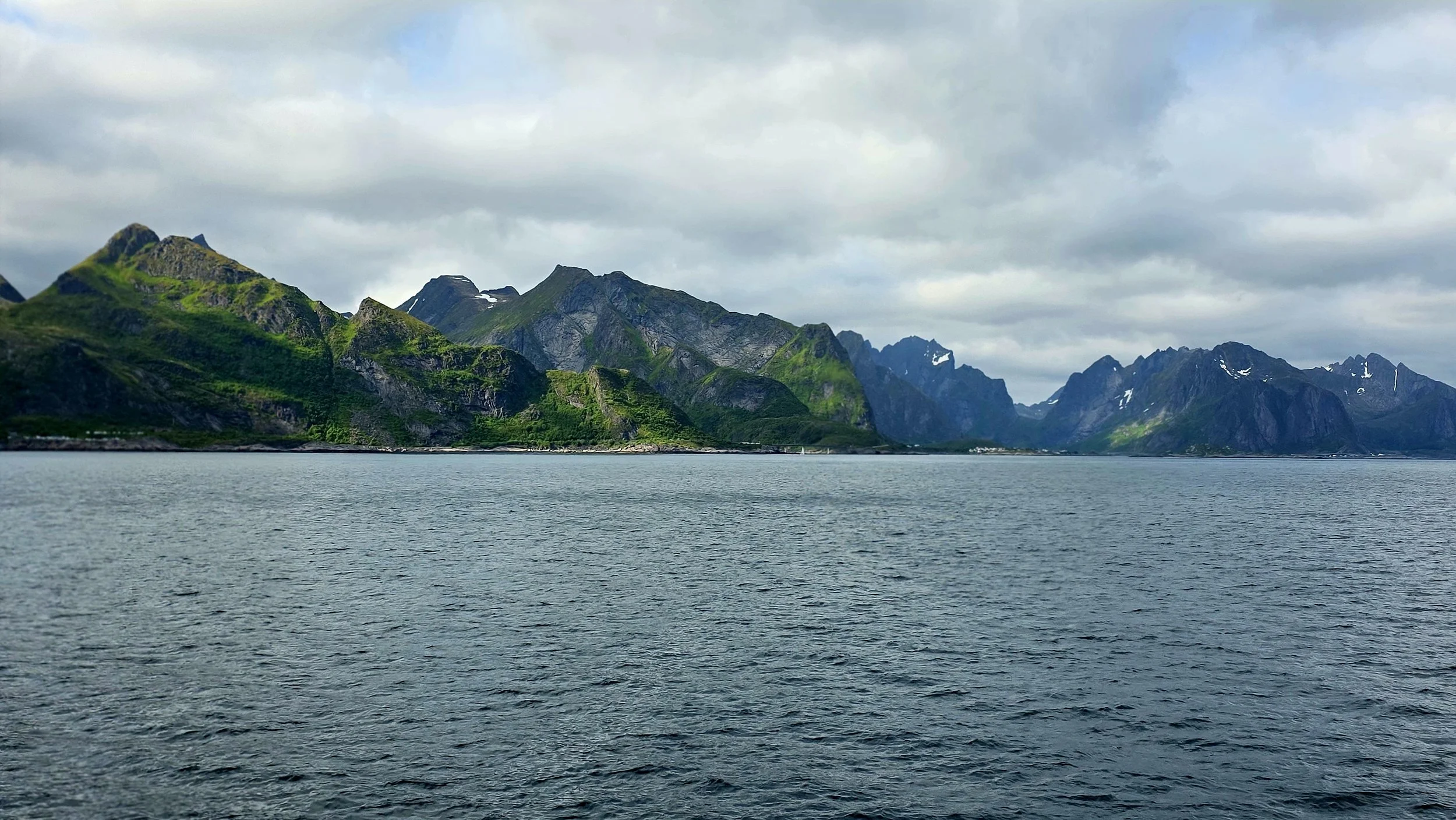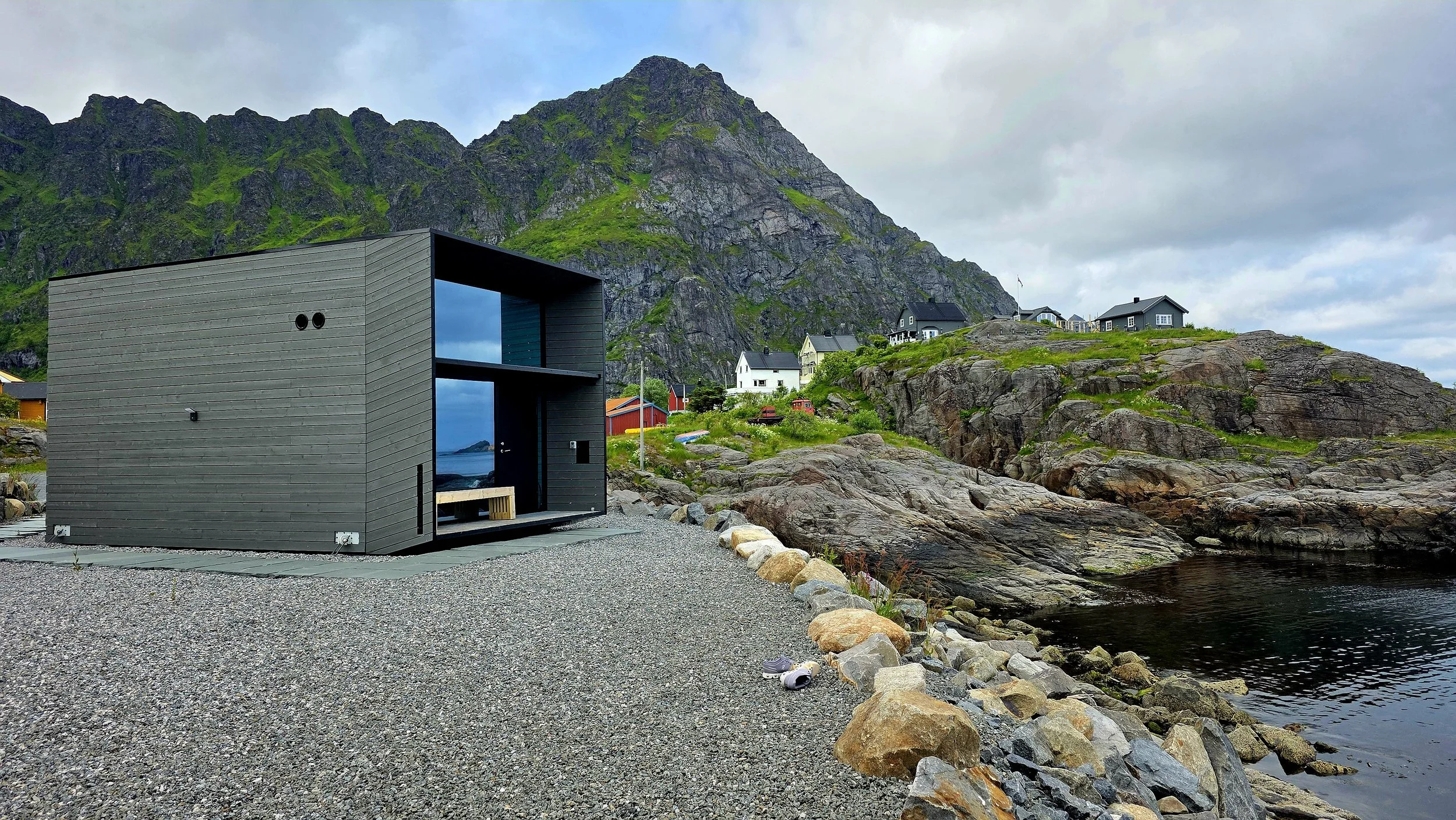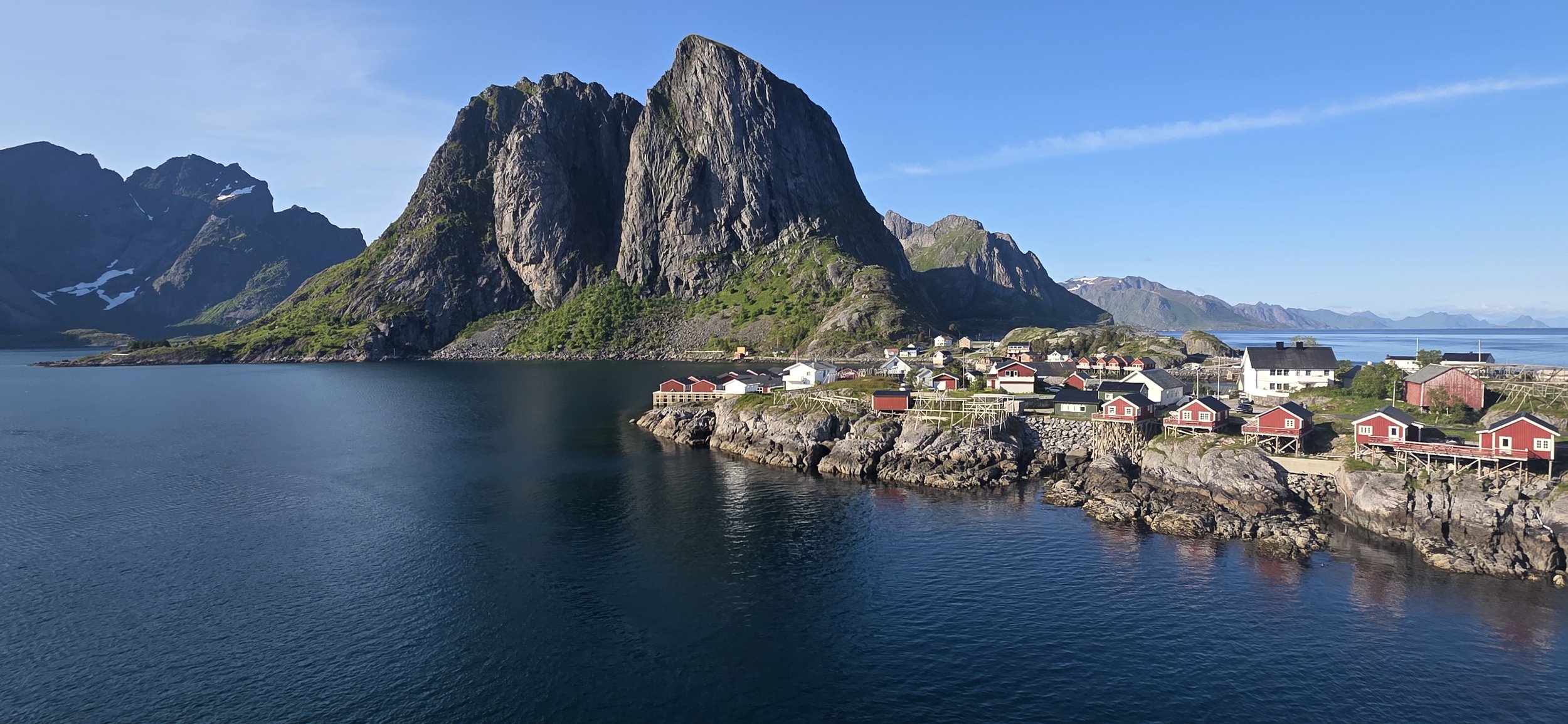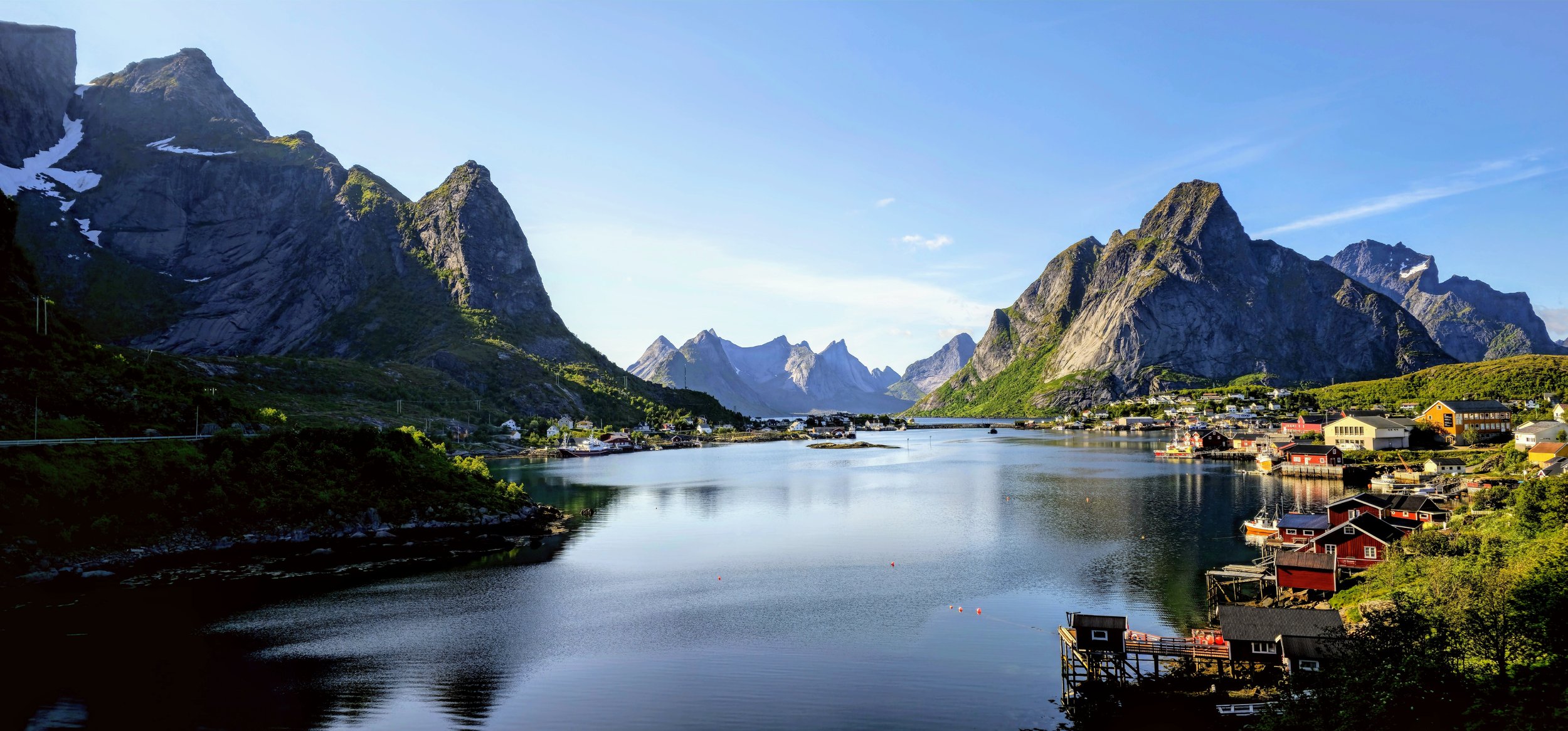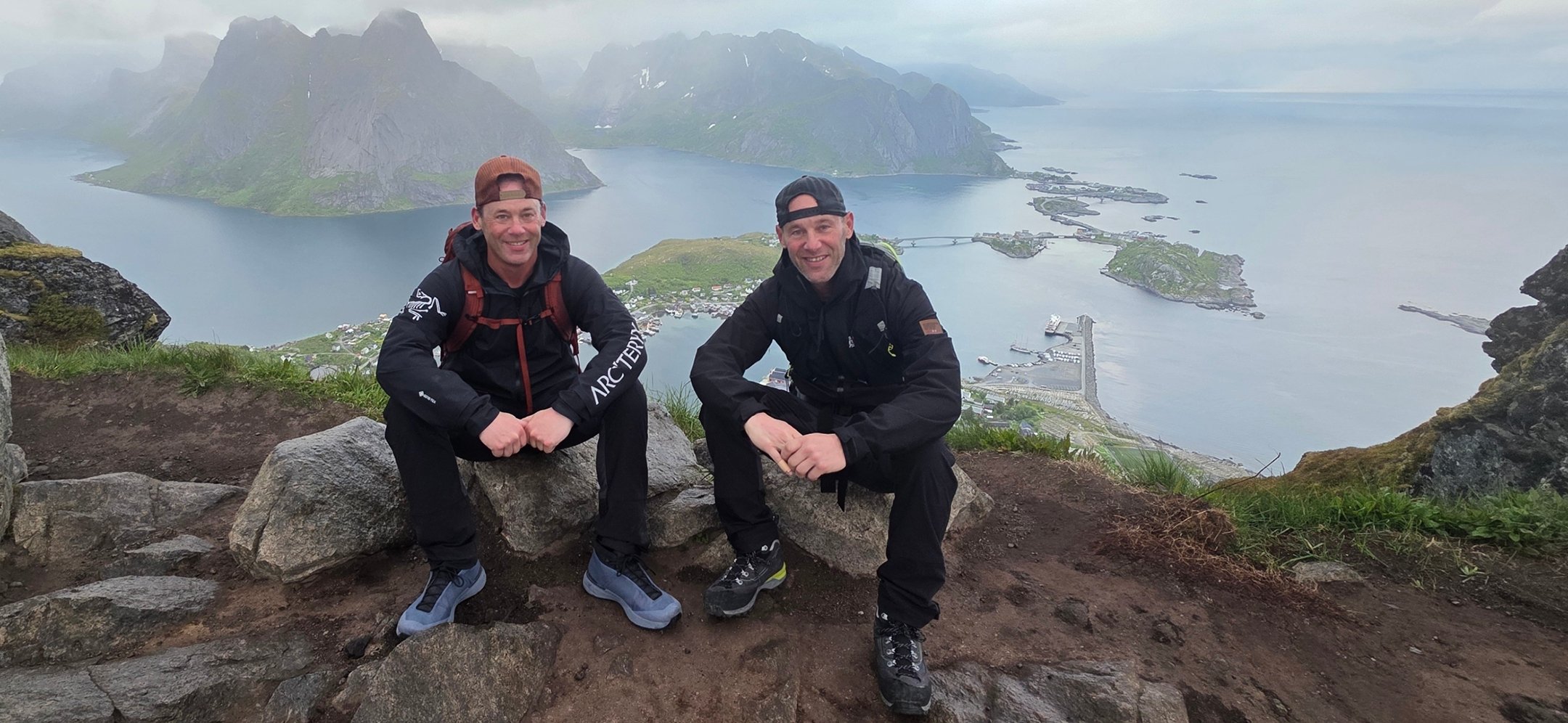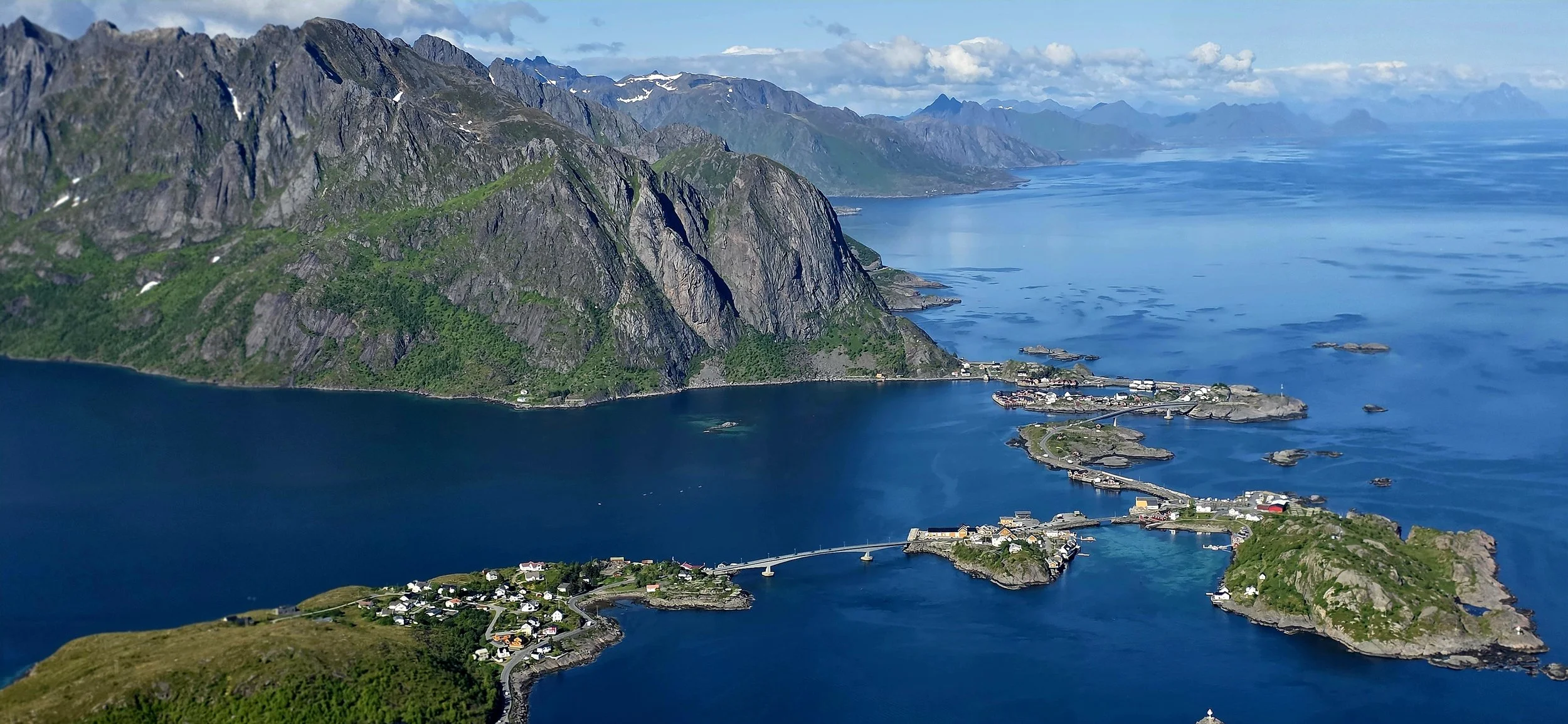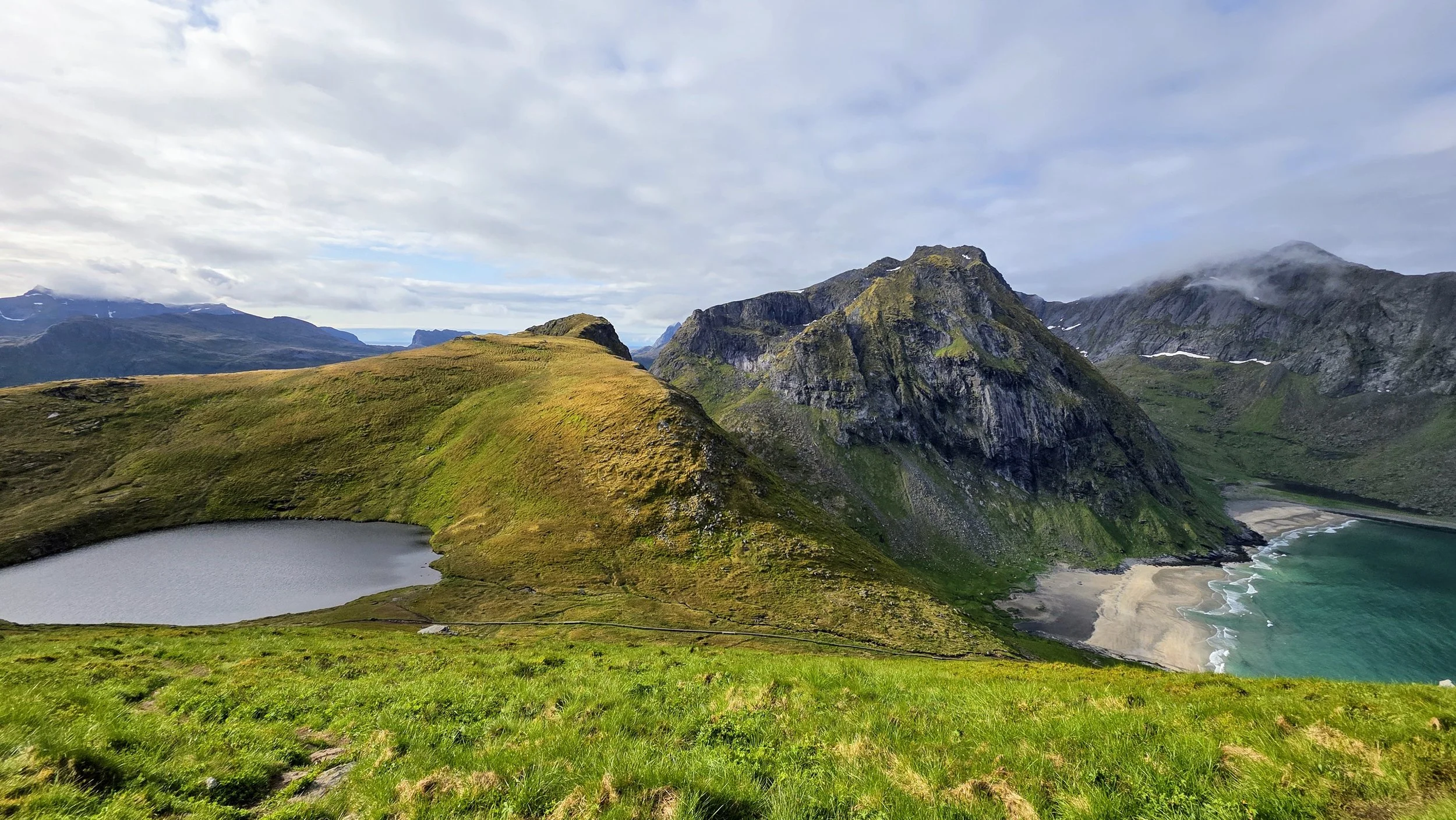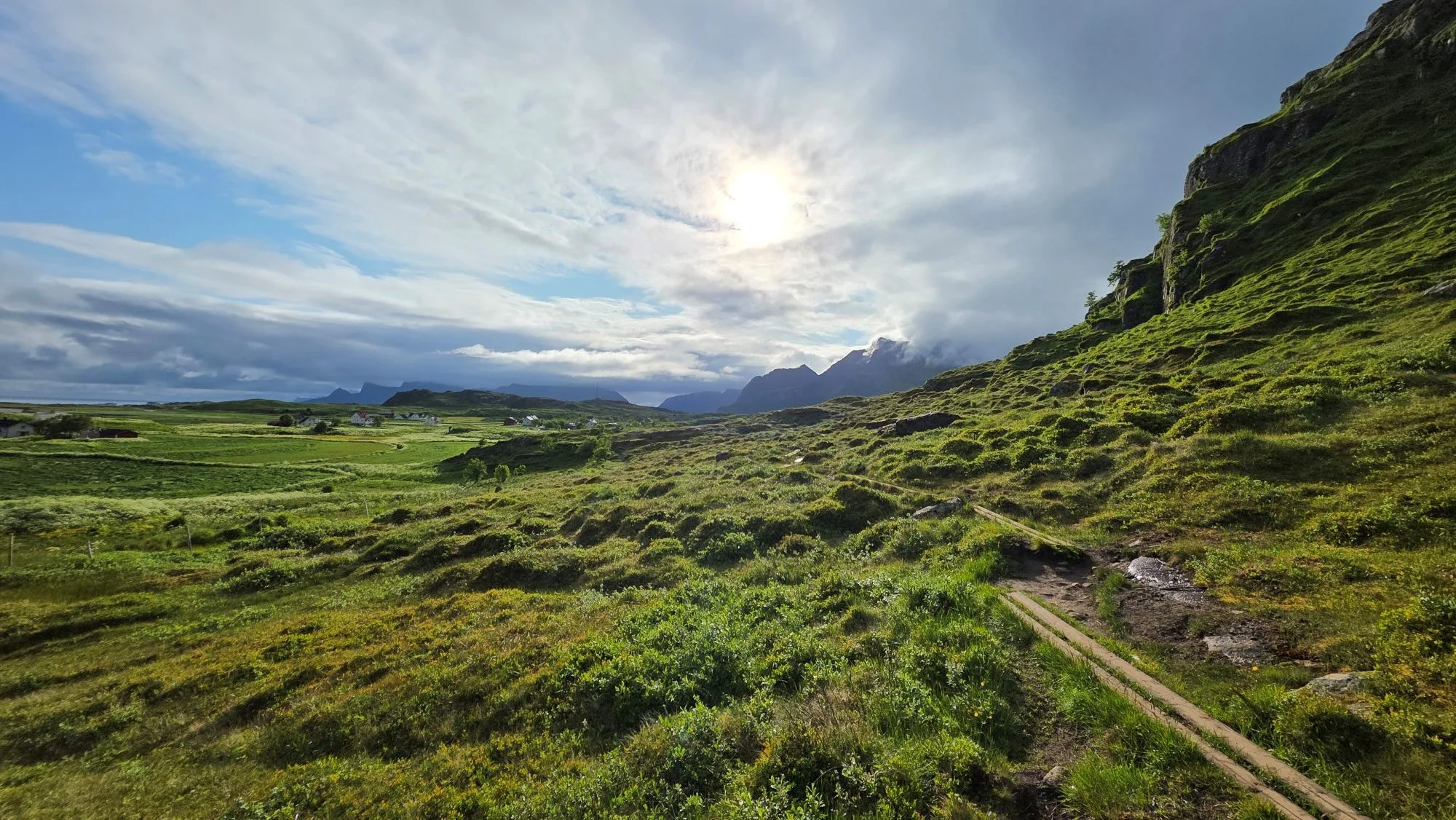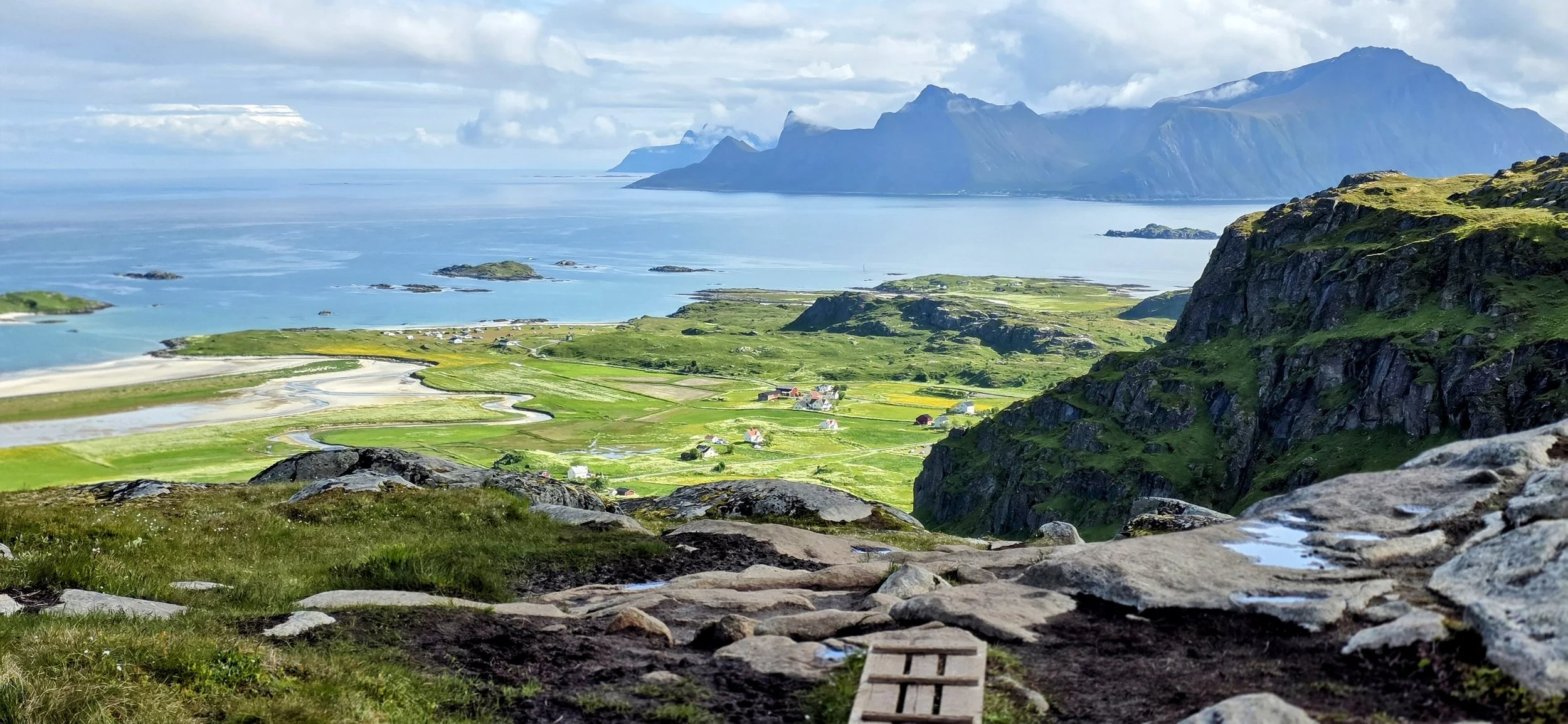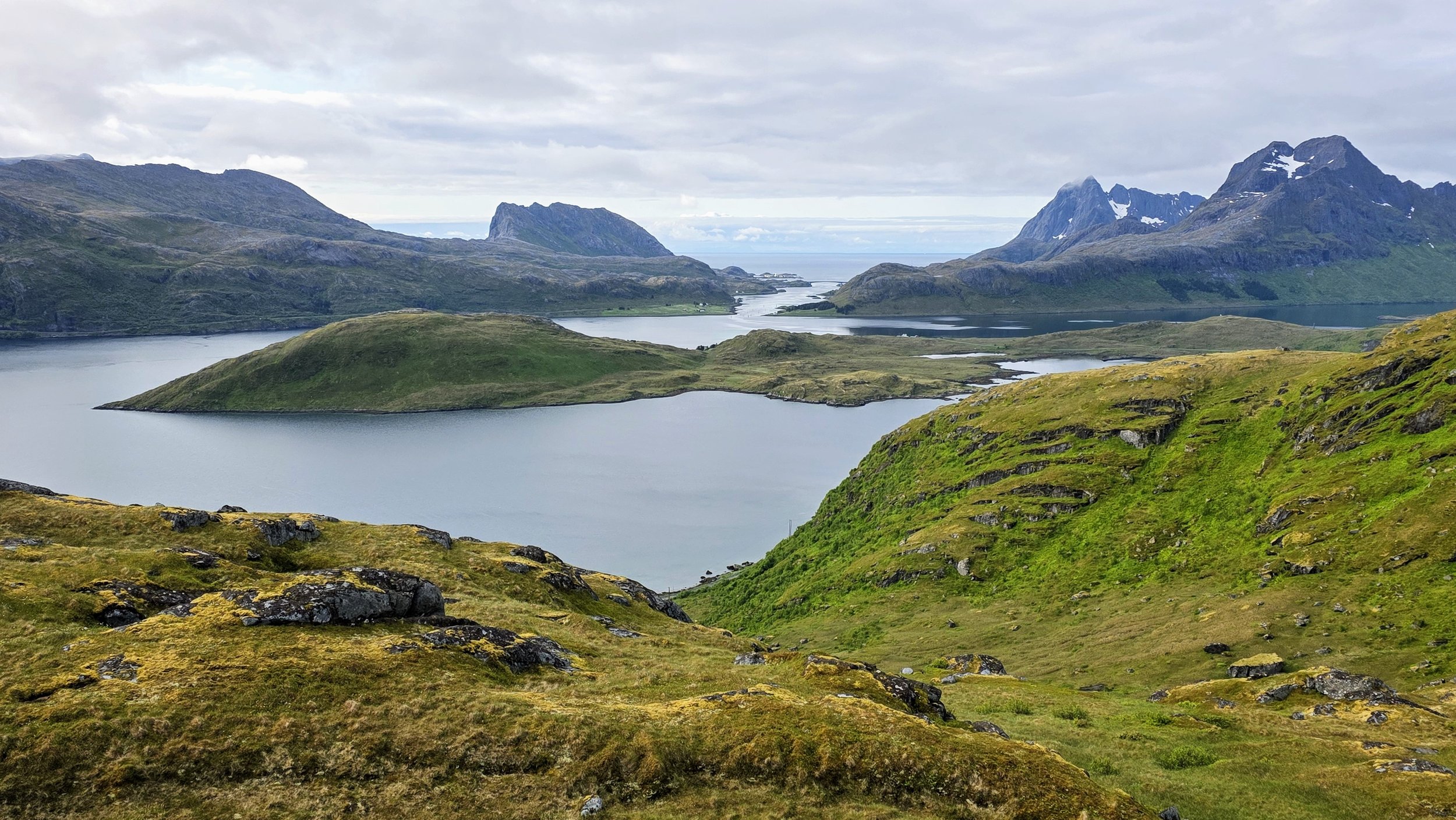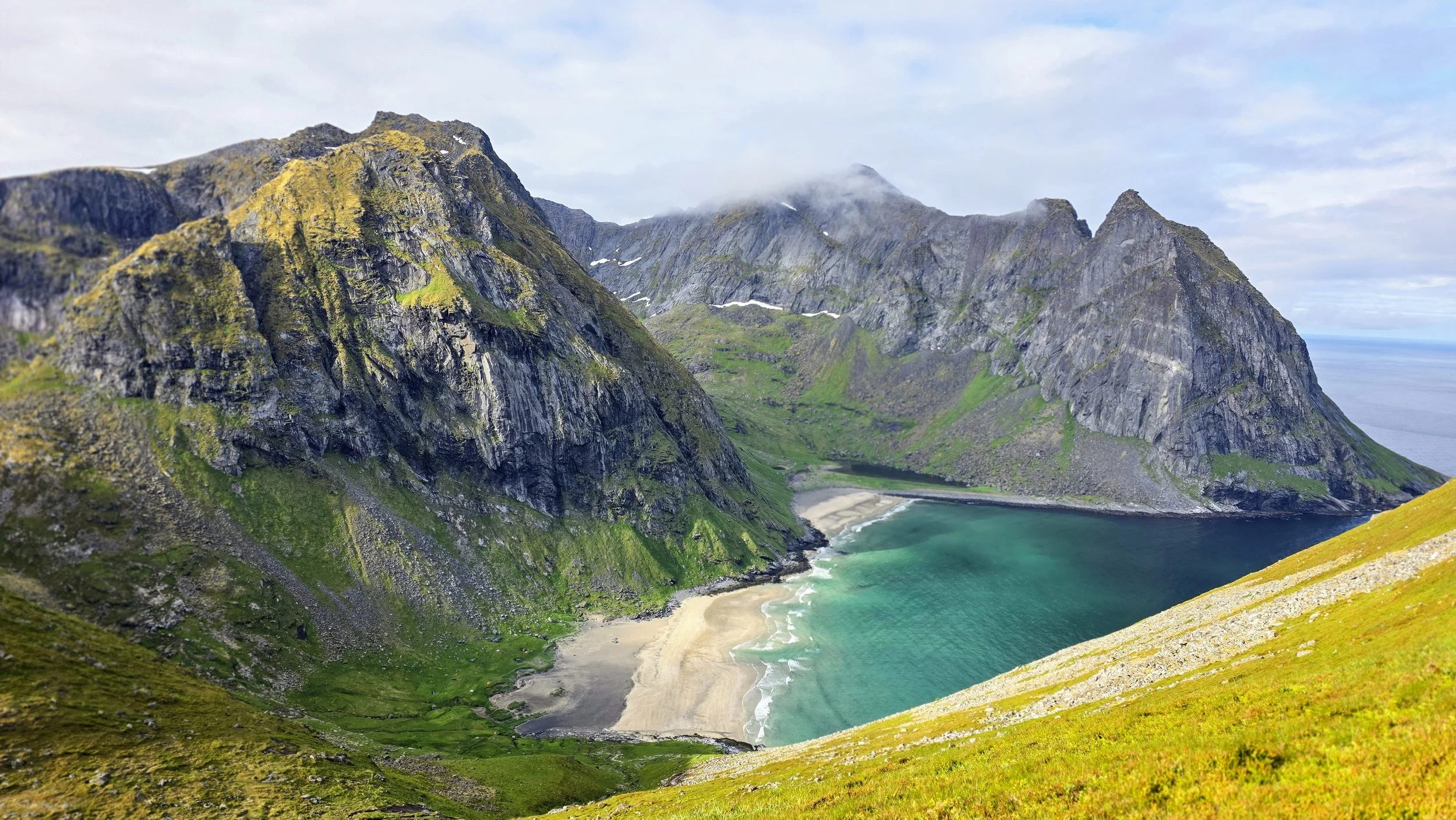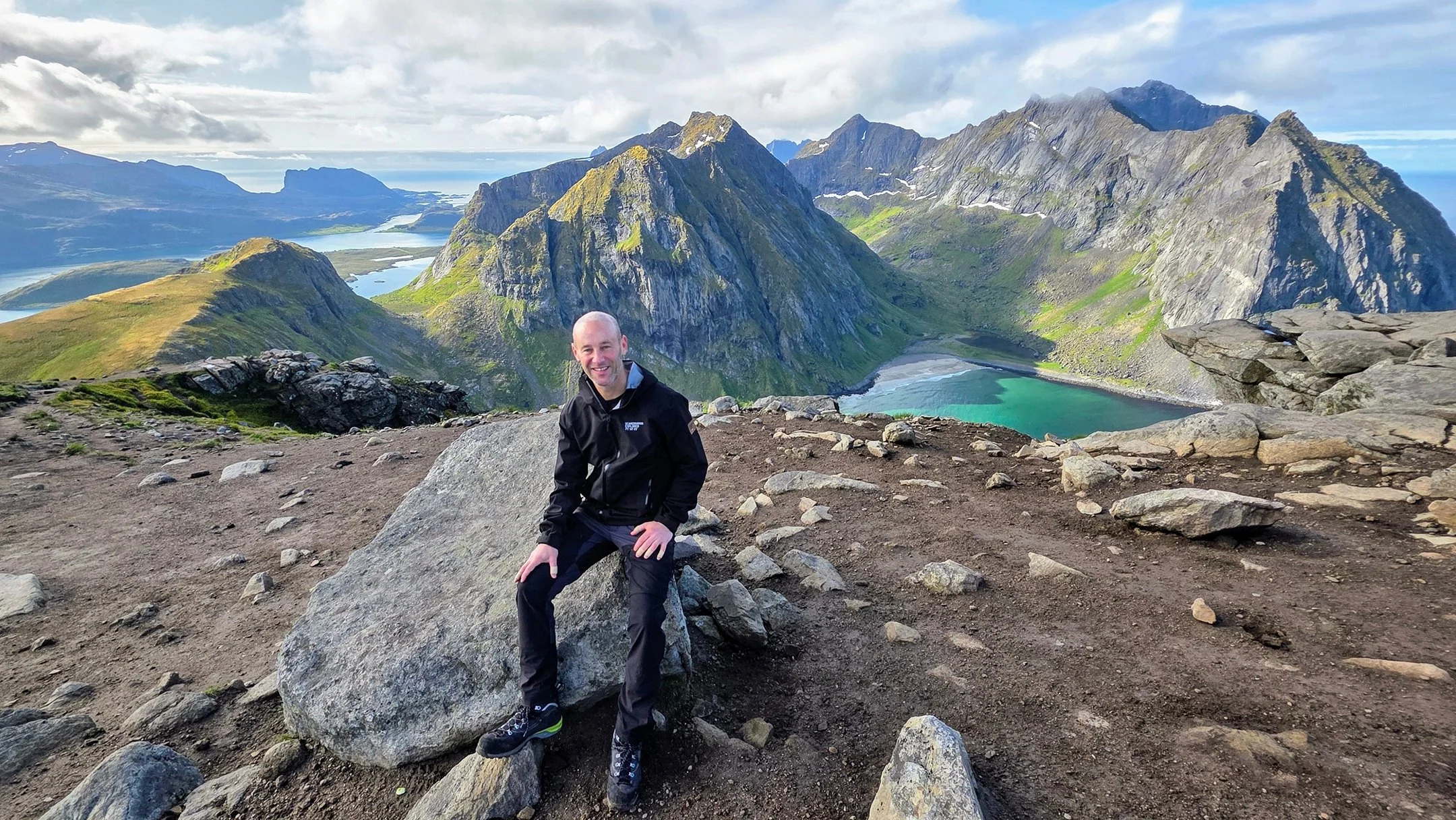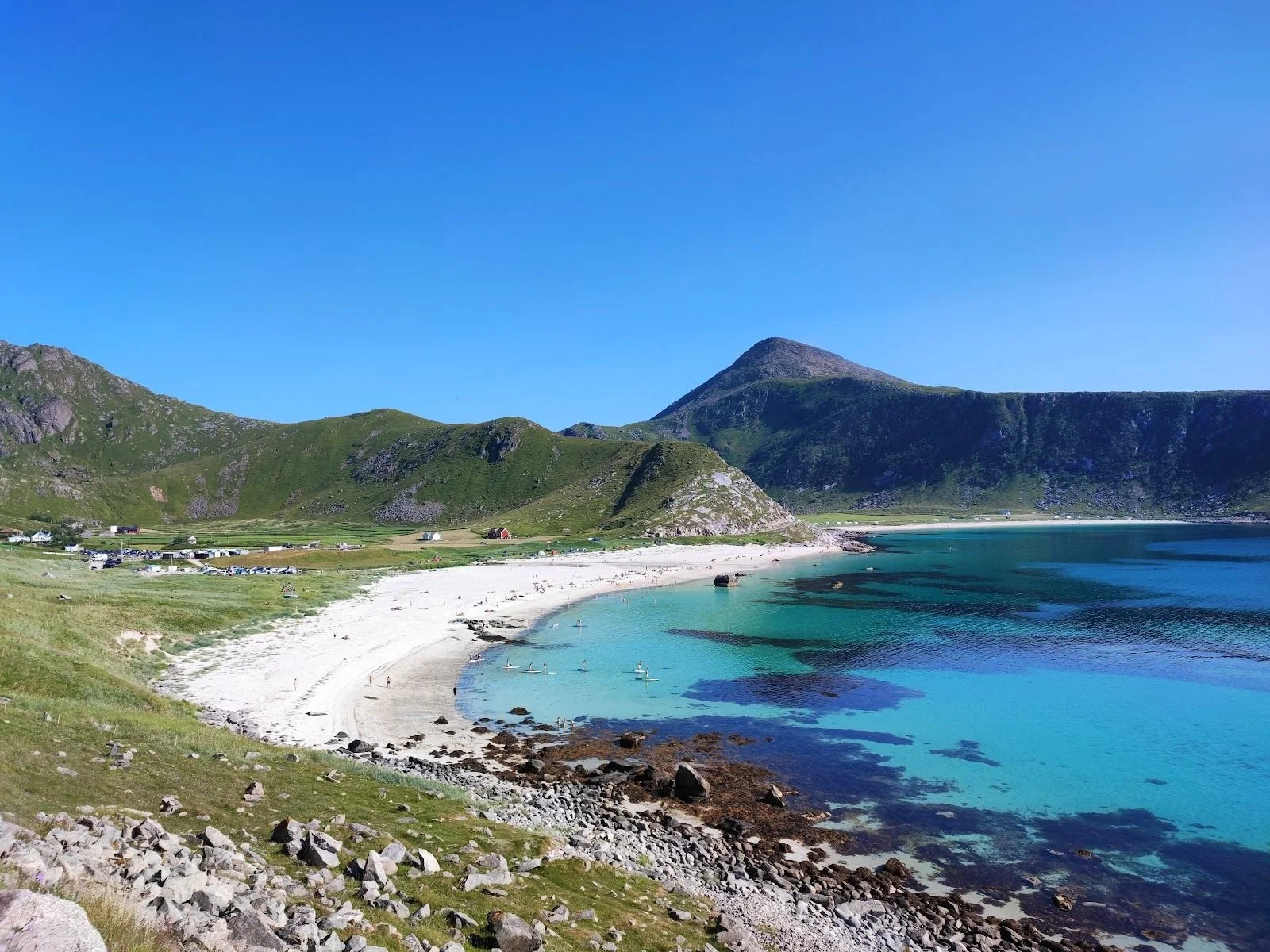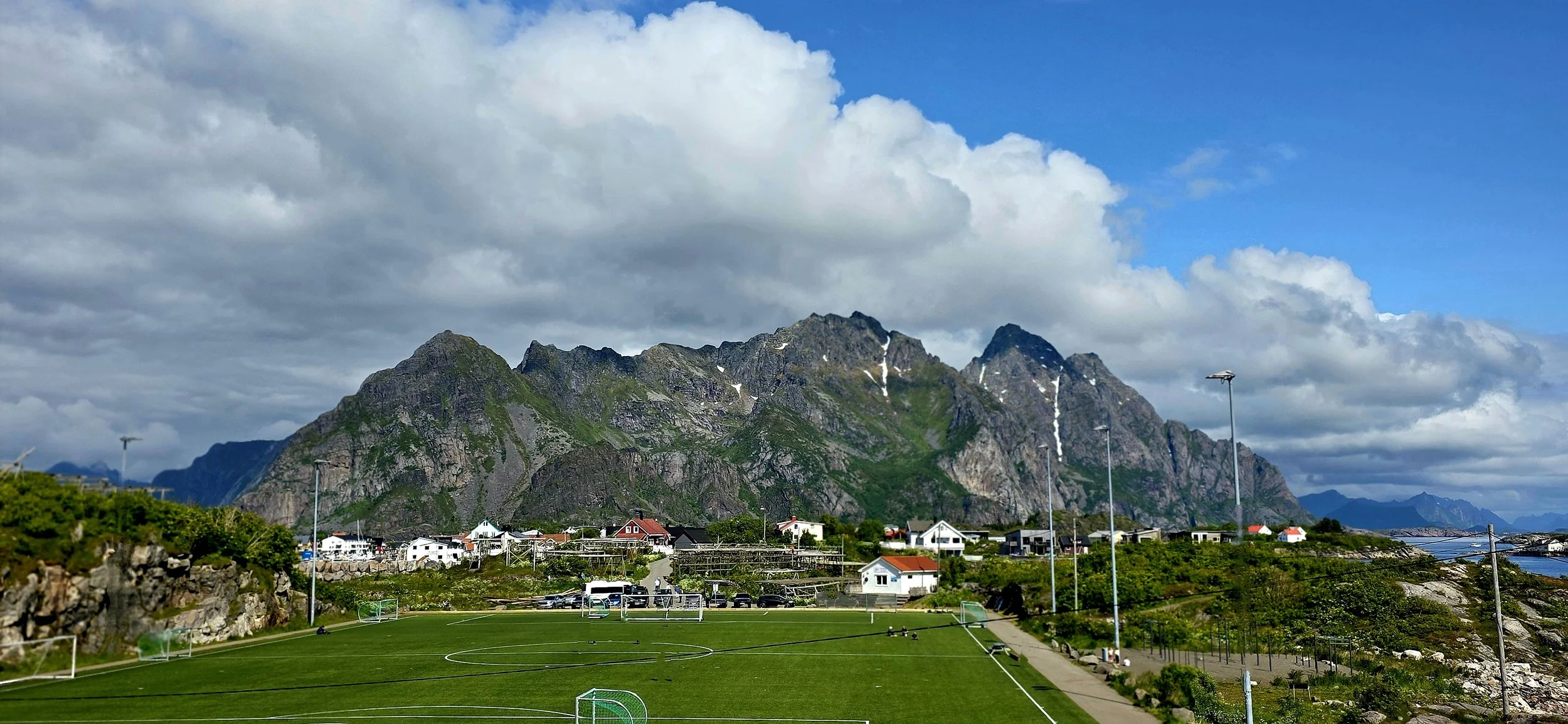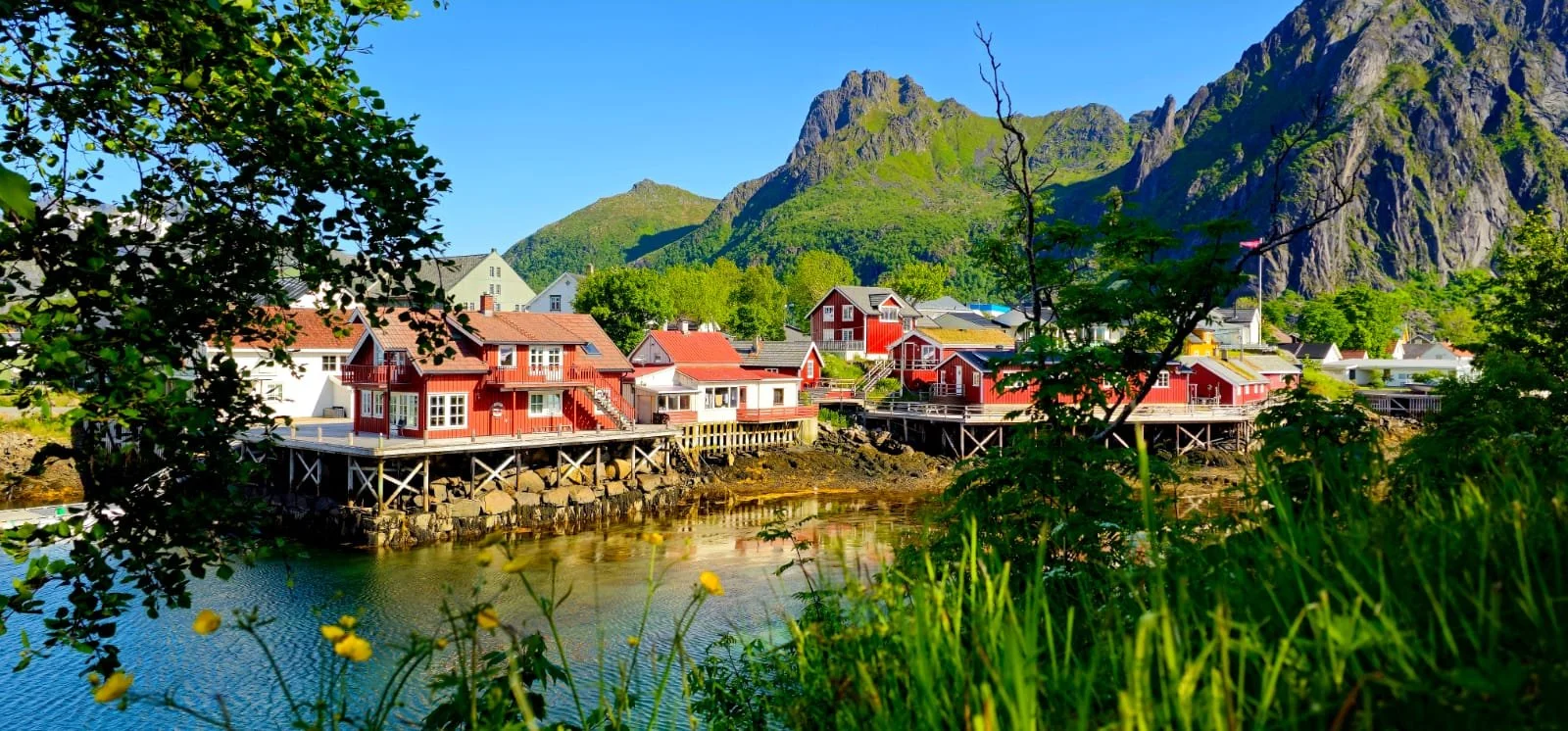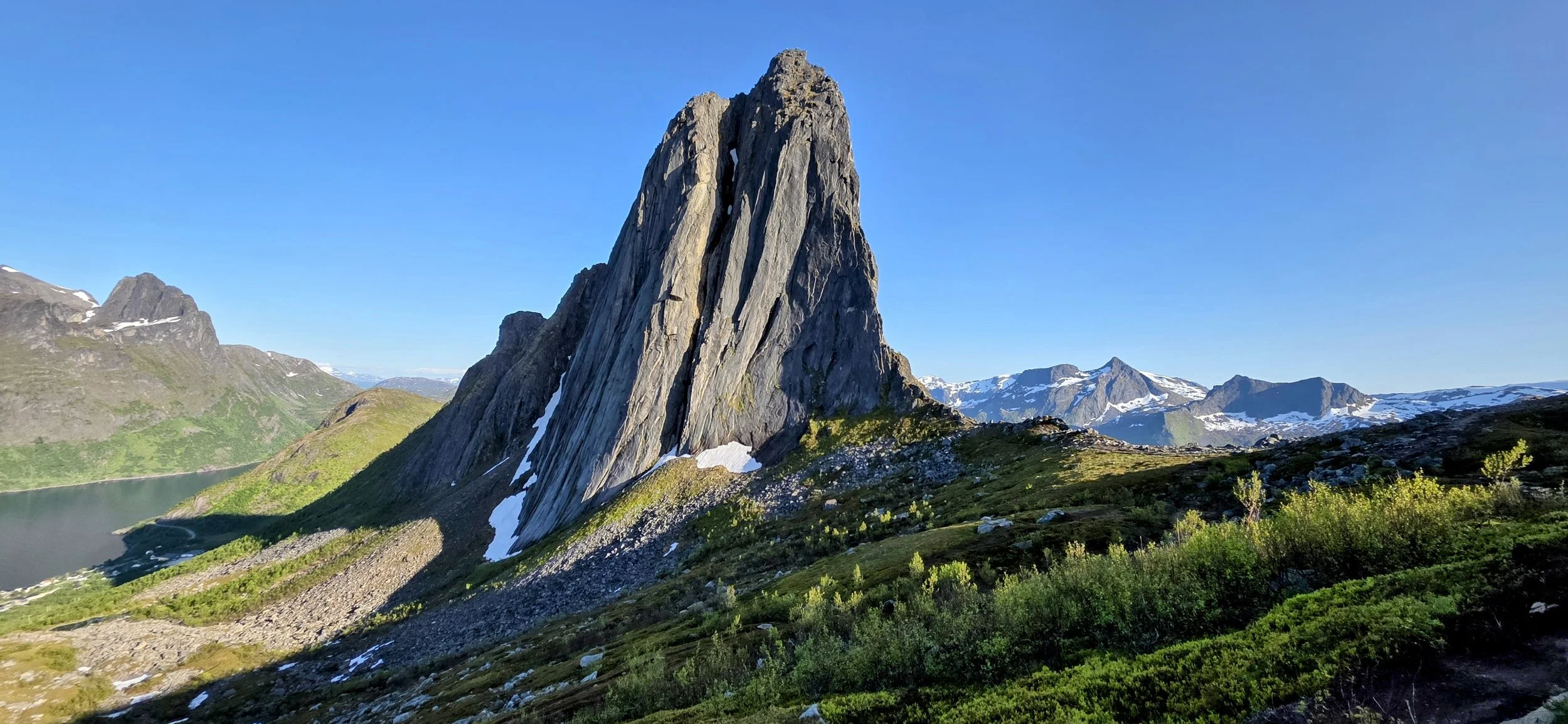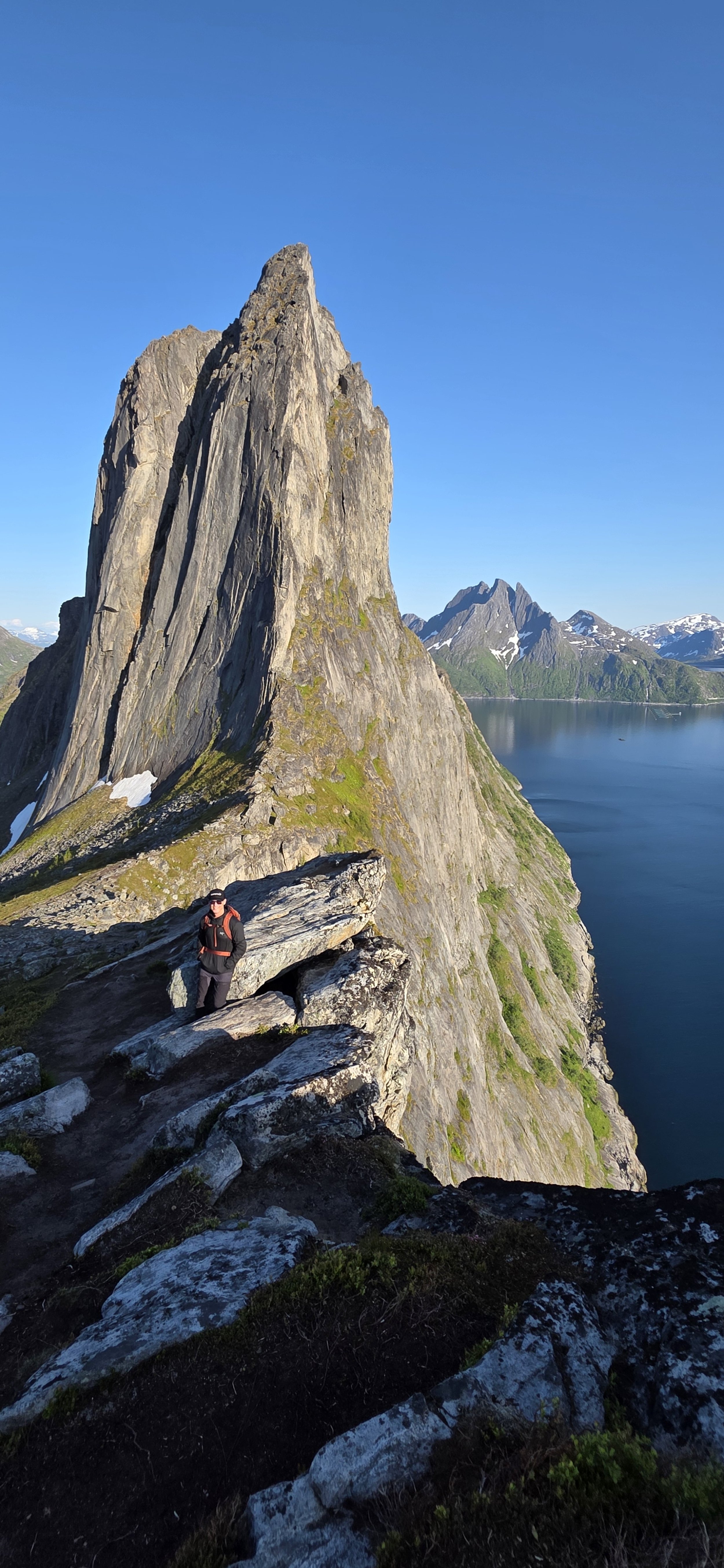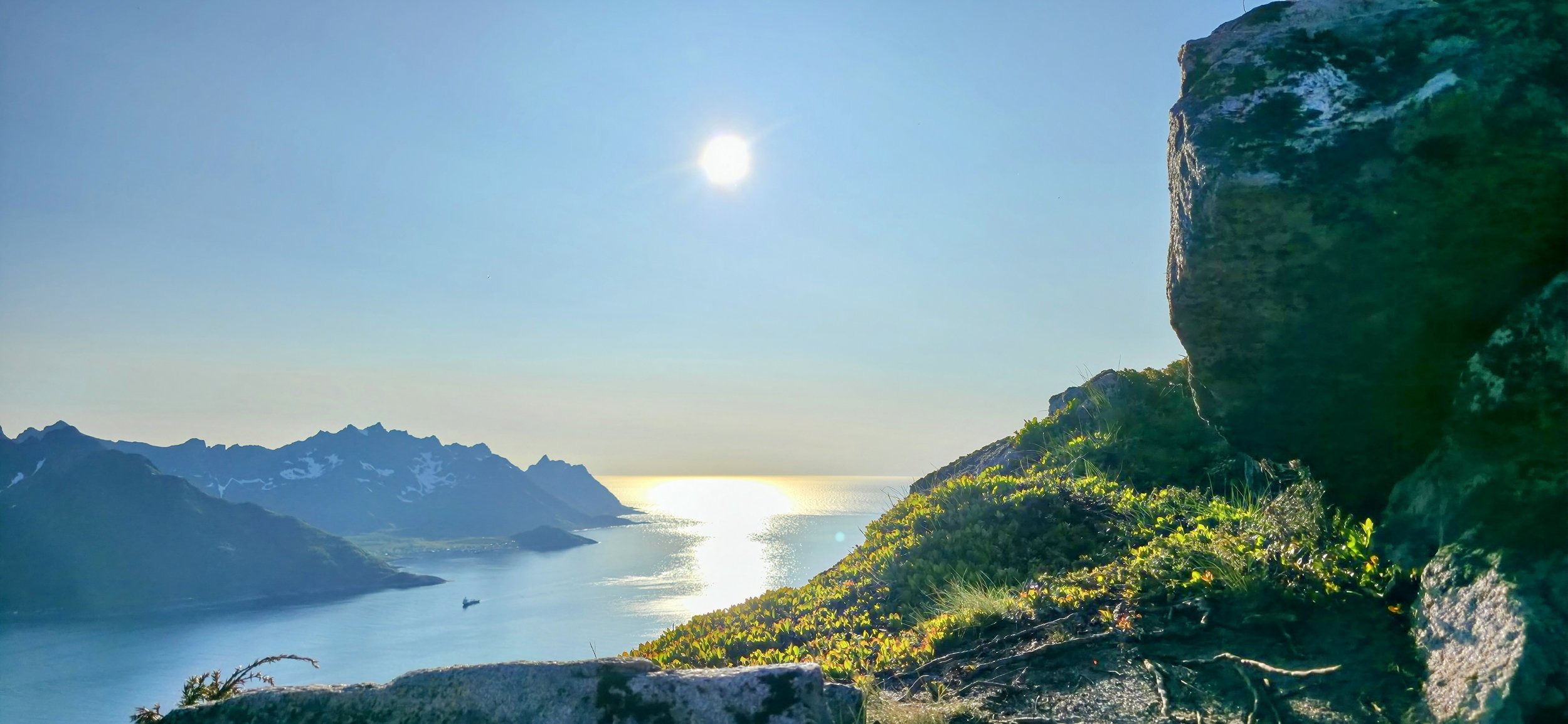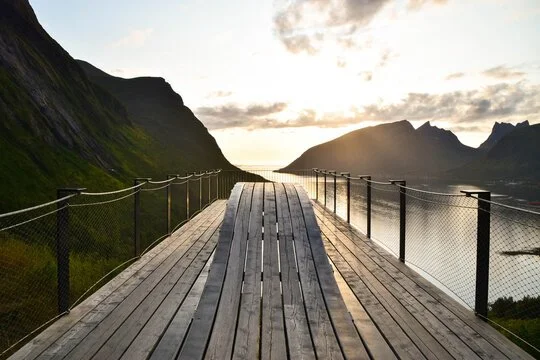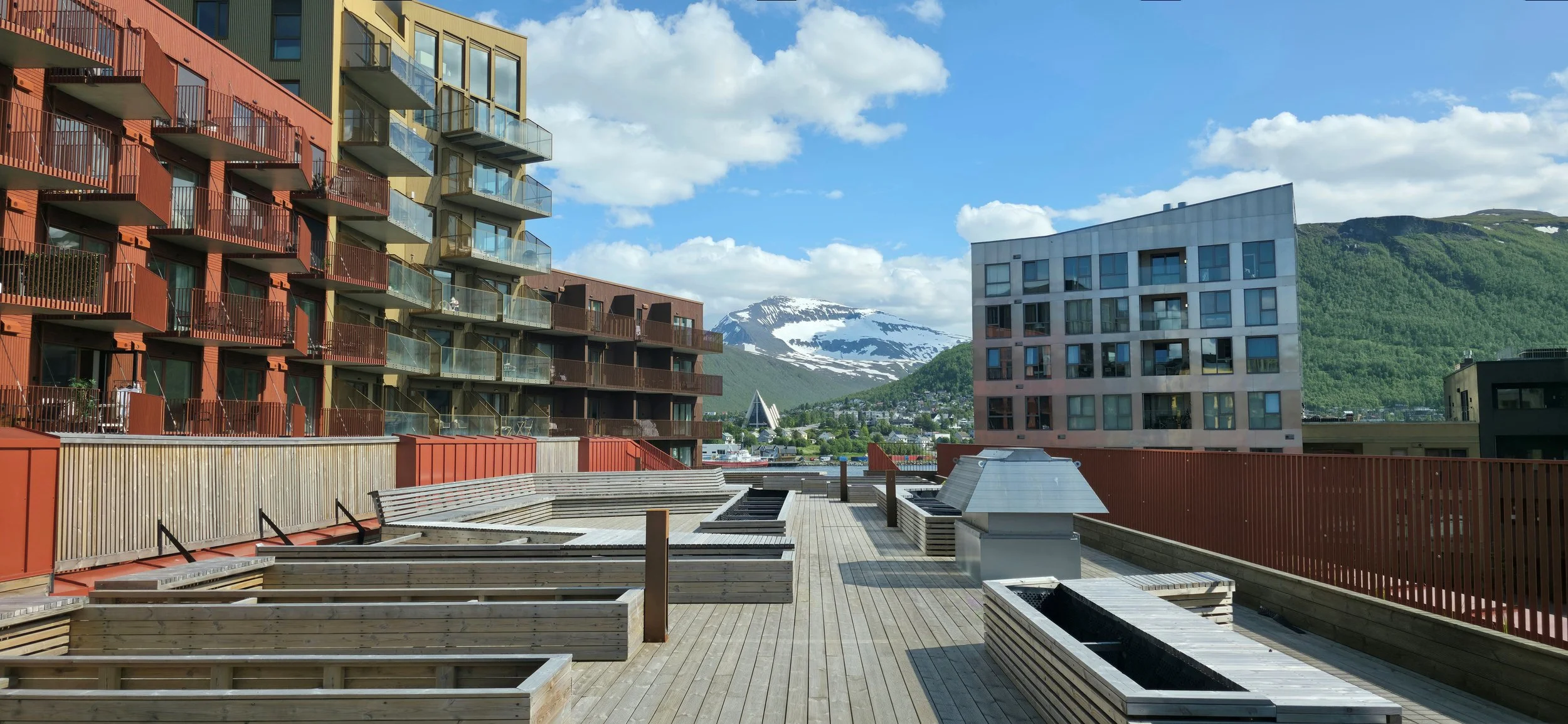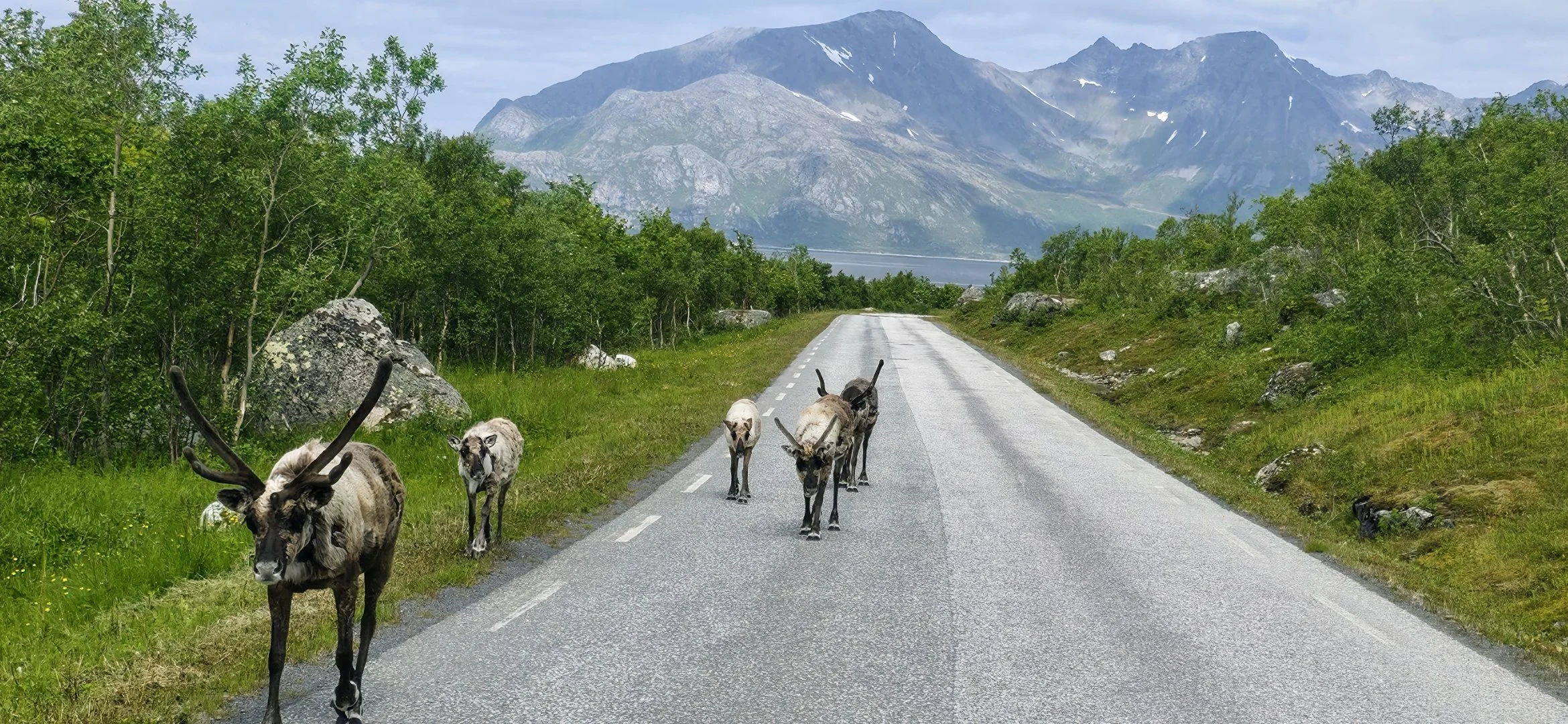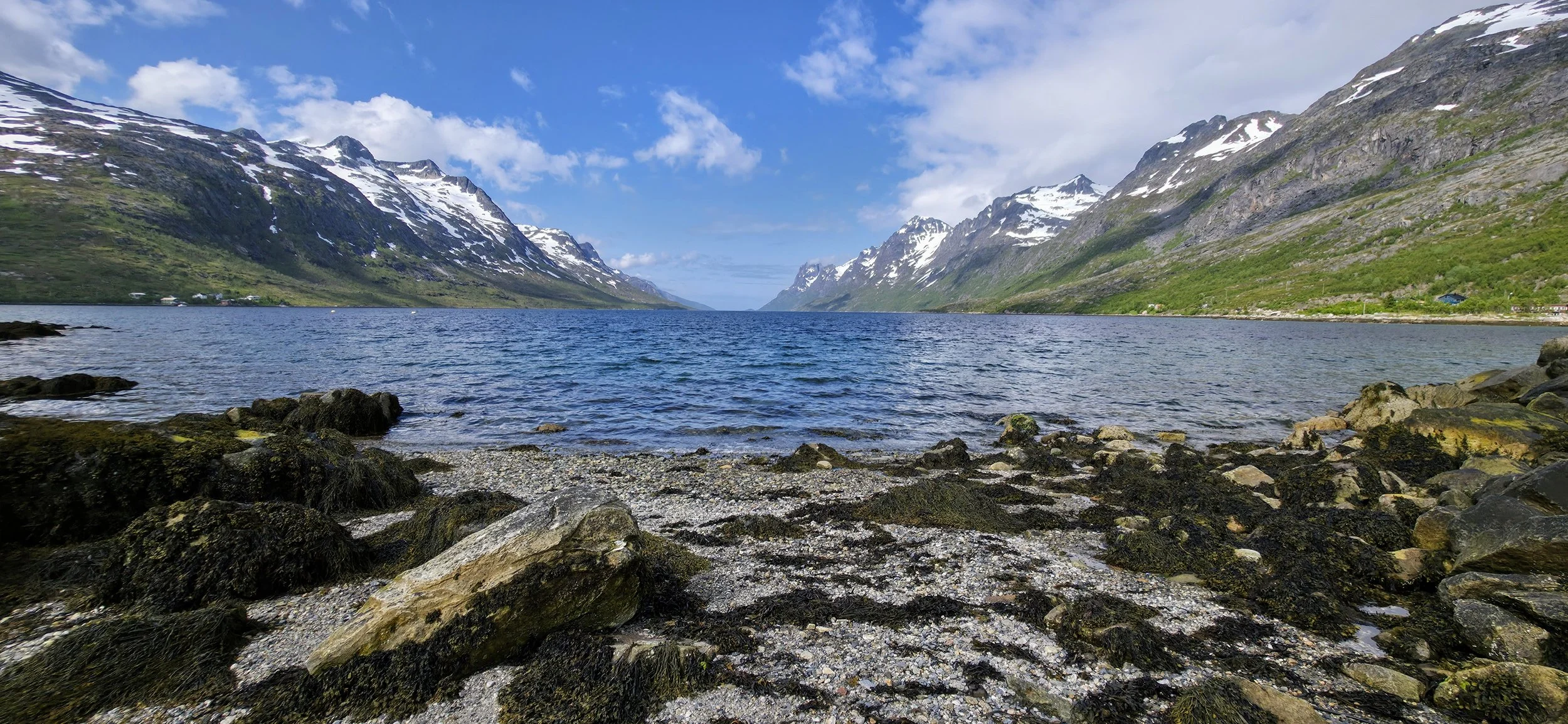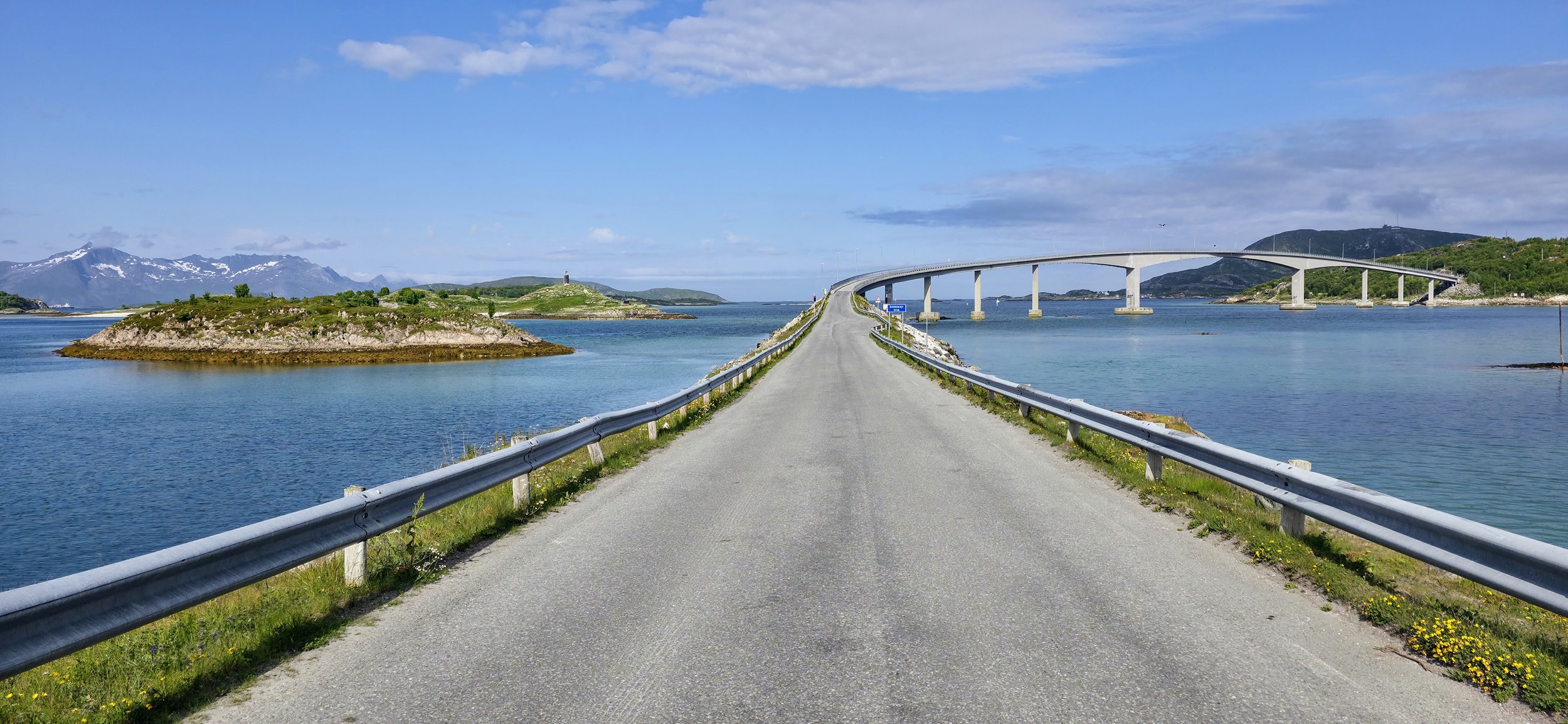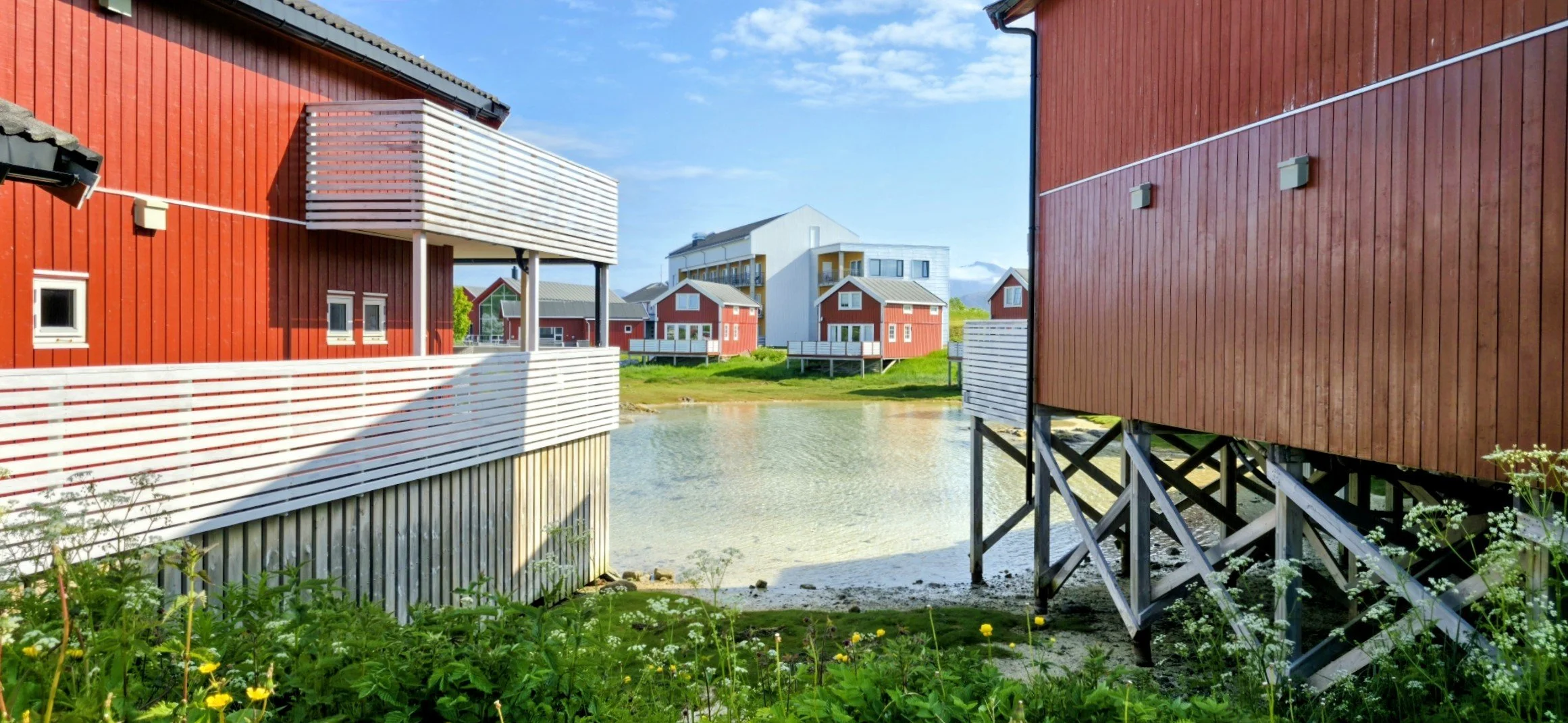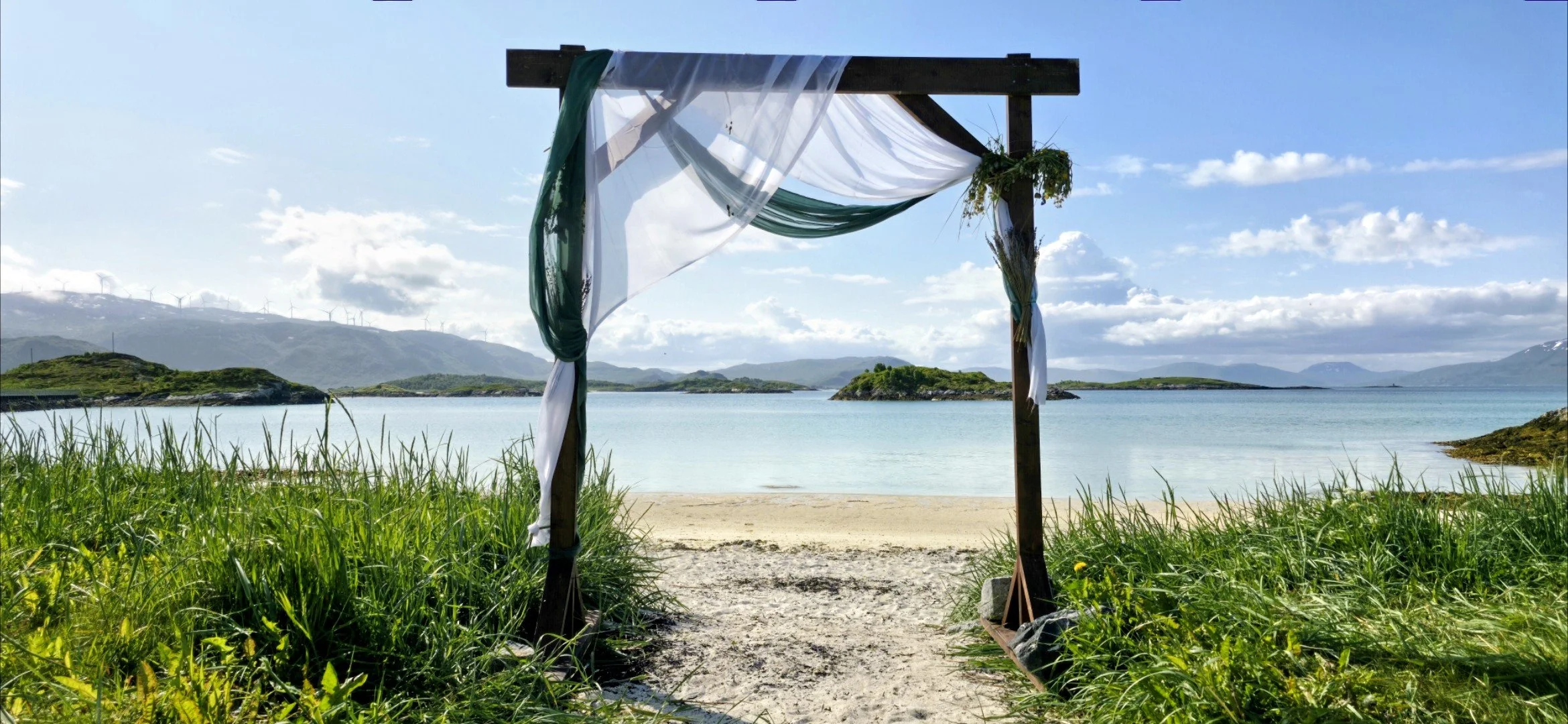Norway
I traveled the entire country of Norway in June and July of 2025. I would keep in mind that my blog only reflects the activities available during the summer months and can vary greatly during winter.
Table of Contents:
The Basics
Oslo
The Pulpit Rock and Trolltunga Hikes
Bergen & Flam
Loen’s Via Ferrata Experience
Alesund, Trollstigen, The Atlantic Road & Trondheim
The Lofoten Islands & Senja
Tromso, Kvaloya Island and Sommaroy Island
The Basics
Border Entry: You should be fine with a valid passport to enter Norway, but double check since regulations can change.
Vaccines: There are no compulsory vaccinations required for entry into Norway
Best Time of Year to Visit: The best time to visit Norway depends on your desired experience, but my recommendation would be the summer months (Jun–Aug) as they offer the best weather and long days for activities like hiking and fjord exploration. Winter (Nov–Mar) is ideal for Northern Lights viewing and skiing. Spring (Apr–Jun) and fall (Sept–Nov) are excellent "shoulder seasons" for fewer crowds, blooming landscapes, and autumn colors. The sun never really sets during the summer months so you’ll have plenty of time to explore.
Visit Duration: Assuming you’re on full vacation mode and not working, I recommend staying for 3-4 weeks minimum if you’re planning to do many of the same activities that I’ll be covering below. As with many alpine locations, the weather can be extremely unpredictable so it’s best to give yourself an extra week in case you need to reschedule an activity— which will almost surely occur at least once. Additionally, the country is larger than you might think and it can often take 5- 10 hours to drive between destinations with many ferries and tunnels along the way. This is one of the trickiest countries that I’ve encountered when it comes to transportation so plan well in advance if possible (more on the transportation below).
Flights to Norway: Most people, including myself, fly into Oslo to start their journey. There are many options for flights, but most will have a layover in Europe. The Oslo airport (Gardermoen) is very modern, cleanly, relatively small and has quick security checkpoints and baggage claims. Oslo is roughly a one-hour straight-forward drive from the airport.
Weather: As mentioned above, the weather can be extremely unpredictable and it rains a lot during the summer months! If you see a few nice days in the forecast, make sure to use them very wisely. The temperature can vary greatly by region and time of day. I’d plan for 65- 75 degrees during the day and 45- 65 degrees at night while in Oslo and other cities across the country. Be aware that the temperature could also drop by 10- 20 degrees (maybe more) in the higher elevations, but I wouldn’t be overly concerned. My recommend would be to pack clothes for all seasons including gloves, leggings, wool hats etc. When hiking in the mountains, it’s best to dress in layers and remove them if it becomes too hot— which will likely occur. Lastly, I strongly suggest downloading the YR App (the logo is light blue) because it’s widely known in Norway as the most accurate weather forecast.
Accommodations: While in Oslo, my recommendation for first time visitors would be to stay in Sentrum (City Centre) because it’s located in the heart of all the action and close to most of the attractions. You can’t beat the location of the 5-star, Grand Hotel Oslo, but it can be a bit pricey. For those seeking a more affordable option, I’d also recommend the Thon Hotel Cecil and make sure that you book the Sentrum location. Once you leave Oslo, you might want to consider exploring Airbnb options as well. The hotels fill up quickly and they can be expensive so make sure to book well in advance.
Costs: As you might have heard, Norway is not a cheap destination. This includes car rentals, gas, hotels, activities, restaurants, shopping and more. Furthermore, you can expect similar prices throughout the entire country, not just in larger cities like Oslo and Bergen. The silver lining? Although Norway is quickly rising in popularity, you won’t find nearly as many tourists compared to other European countries. Of course you can find cheaper options, but they will typically be very tiny rooms/bathrooms and farther further outside town.
Transportation: Although traveling around Norway can be expensive, you’ll still need a reliable vehicle. You can easily get by with your standard 4-door sedan or SUV. Additionally, make sure that your oil is filled and that your tires have proper air pressure before leaving the rental car spot.
I would recommend purchasing car insurance if you don’t already have it, especially if you’re planning to stay in cities like Oslo for extended periods of time. You can easily scrape your car if you’re not accustomed to European style parking garages.
Driving in Norway involves numerous tolls, and avoiding them is difficult. Most tolls are automated, and payments are collected through an AutoPASS toll tag. It’s actually quite easy and requires almost no effort.
There are over 1,200 tunnels in Norway and at times, it felt like we spent more time driving through tunnels than driving outside. Some of these never-ending tunnels of darkness can last up to 25 miles so make sure you’re well rested because it’s easy to want to doze off.
There are over 130 ferry lines in Norway, with a network of more than 100 car ferry connections and many fast passenger and express boat routes— many of them cannot be avoided. Planning around the ferry times can be one of the biggest headaches when visiting Norway. It’s imperative to do your homework well in advance so you know 1) departure & arrival times 2) costs; most (if not all) will be AutoPASS and will require no effort 3) the length of ferry ride 4) do you need to book in advance? One my frustrations when planning Norway was that every blog seemed to have a different name for the ferry, so I had to read multiple blogs to confirm accuracy. In this blog, I will do my best to recall the ferry details, but I would make it a priority to double confirm everything (I will not remember everything).
Although moose, elk, deer and other animals roam Norway, they do not frequently cross the roads so I wouldn’t be concerned about hitting any wildlife.
They say Norway doesn’t take speeding lightly; chances are, you will not see many police cars (if any) once outside of the larger cities. They also say there are cameras everywhere and that warning signs are provided before reaching the cameras. Don’t take my word for it, but I didn’t experience any of this, nor did I receive any tickets. That said, my recommendation would be not to exceed the speed limit by more than 10- 15 mph at most.
Rideshare Apps: Uber exists in Norway, but only in the major cities like Oslo, Bergen, Stavanger and Tromso. Lyft does not operate in Norway. Other rideshare apps exist like Bolt, but you should be fine with only Uber.
Groceries: The most common grocery stores in Norway include Rema 1000, Coop, Kiwi and Joker. Rema 1000 is the larger chain store similar to a Ralphs, Safeway and Publix, while Coop and Kiwi are typically a little smaller and focus on higher quality options. You won’t likely find a store similar to Whole Foods with a hot food bar. Lastly, Joker is Norway’s version of 711 and found in almost every city and town across the country.
Fitness Centers: Outside of the metropolitan cities like Oslo, Bergen, Stavanger and Tromso, you won’t find many fitness centers. Even then, I don’t remember having an easy go when trying to find gyms in Oslo. The safe bet is to book a hotel with a nice gym similar to my accommodations listed above.
I would not expect any of the hotels in the more remote locations to have fitness centers. If you’re like me and can’t live without your weights, I would research Sporting Goods stores prior to arriving in Norway and purchase them directly after leaving the airport. On the bright side, you are surely visiting Norway for the outdoor activities like hiking, climbing and biking so you’re bound to get plenty of exercise one way or another.
Wi-Fi: Connections are strong throughout most of the cities and towns. However, you will lose all signals during the long drives, hikes and in the more remote areas of the country.
Wildlife: You could encounter deer, reindeer, elk and moose while driving between locations and in the more rugged parts of the country. However, they are not as common to spot when comparing to areas of the United States like Colorado, Montana and Alaska. Brown bears and wolves also exist in Norway, but they are typically found near the borders of Sweden, Finland and Russia. I wouldn’t be concerned about running into any dangerous wildlife while hiking in the mountains. Additionally, bear spray is not needed unless you’re visiting the border areas.
Random Recommendations and Thoughts:
Most of the hotels outside of the cities will have very small rooms, beds and bathrooms, leaving very little extra space to move around. Additionally, be prepared for the Scandanavian Sleep Method, which involves each person having their own separate blanket or duvet, allowing for individual temperature control and eliminating blanket-hogging. It sounds like a great idea until you realize the blankets are too small to cover your entire body.
Throughout my travels and in Norway too, I’ve learned a few tricks along the way. One of them being, always book the Via Ferrata, famous hikes, boat tours and scenic drives EARLIER in your trip and/or during the first day of the weekend excursion— essentially any top activity that can be impacted by bad weather. That way, you can always reschedule the activity to another day if needed. Similarly, have backup options ready for those activities that could potentially get canceled.
As mentioned above, the sun never really sets during the summer months! On several occasions, I started the more popular hikes around 11pm to avoid potential crowds and to capture photos during the twighlight hours.
Make sure to grab bug spray and sunscreen when you arrive. Mosquitos aren’t an issue in the cities, but they do become an annoyance while hiking.
The Scandinavian’s love their candy! You will find large, self-service candy bins in almost every grocery store, corner store and gas station. Although I’m not a big candy eater, I couldn’t resist stocking up from time to time before making a few of the long drives.
Last but definitely not least, it’s IMPORTANT to plan your route well in advance. In my case, I started in Oslo and began driving west to Stavanger. From Stavanger, I drove north to Tromso with many detours along the way. This blog will cover each location in more detail and in chronological order so you can easily plan something similar. To end the trip, I chose to drop off my SUV at the Tromso airport and grab a flight from Tromso to Oslo, before catching my flight back to the United States. I made this decision because it gave me a few extra days in case of inclement weather and/or to explore more of the country. However, the tradeoff is that it will cost a lot more money by not returning your rental to Oslo. If you decide to drive back to Oslo (from Tromso), plan for at least two full days of driving using a more direct route versus along the coast. Finally, I’ve left many more pictures at the end of the blog to showcase anything that I wasn’t able to cover earlier.
Oslo, Norway
We start in the capital city of Oslo where you’ll only need 1.5- 2 days to explore with almost everything being walkable. On day one, I would start with the most popular attraction in the city, the Oslo Opera House, located at the harbor. Rather than going inside, most tourists simply walk up the ramp to the top of the structure for the panoramic views. The harbor can be extremely touristy during the daytime hours, so I’d suggest arriving around ~5am to capture a photo without all of the obstructions. This photo was taken during “sunrise” off the path that runs parallel to Langkaia Road, just before reaching the Oslofjord Adventures Pickup Point.
The MUNCH is a hop and a skip from the Oslo House where you can explore 13 floors of iconic works of art. Transparently, museums are not my thing, so I didn’t actually go into it, but most people do spend a few hours touring the exhibits. From the MUNCH, you can explore the neighborhoods of Barcode Project and Sørengautstikkeren. This photo was taken from the footbridge that connects the MUNCH and the neighborhood of Sorengautstikkeren. The bridge is difficult to miss once you’re in the area.
The photo here was taken from the Nylandsveien Bridge behind the Barcode Project. It’s called the Barcode district because of its twelve narrow, high-rise buildings of varying heights which resembles a barcode when viewed from a distance. Taking the photo from the bridge is by far the best spot to capture an up-close photo of the entire landscape. This bridge typically has consistent foot traffic so I’d recommend visiting during off-hours. Additionally, the Barcode Project is a fun neighborhood to explore due to its’ rapidly growing number of trendy restaurants and retail stores.
A short walk from the Barcode Project and you will find one of my favorite neighborhoods in Oslo, Sørengautstikkeren. It’s a popular area among the locals because of its’ stellar view looking over the harbor and ultra-modern architecture. The area is definitely on the up and up and the local restaurants and bars are typically filled with more of a sophisticated crowd. Most of the residential buildings are newly built and teaming with unique photo opportunities. Find the restaurant Mirabel Sorenga and you should find this building in the photo pretty easily.
To finish the day, I would wander Oslo’s main shopping street, Karl Johans Gate. Here you’ll find an endless supply of restaurants, bars, shopping and more. The flagship stores for Norrona and Helly Hansen are located in the Karl Johans district and are a few of the all-time best places to find outdoor clothing gear. I had to buy a second suitcase to fit it all! Keep in mind that most of the stores will be closed on Sunday’s (maybe Monday too, I can’t remember exactly) so plan accordingly. The photo here was taken near the Grand Hotel Oslo, early morning ~5am to avoid all of the pedestrians and car traffic. The Royal Palace can be found at the end of the street (in this photo) and is surrounded by a nice park. If you walk in the other direction via Karl Johans Gate, you will eventually run into one of Oslo’s most lively intersections, Jernbanetorget station. Here you’ll find more shopping and many street performers. Lastly, go get lost in the many streets of Sentrum, there is a lot more than meets the eye and I’m sure that I missed a lot myself.
I wanted to add one more unique photo opportunity while you’re exploring the Barcode Project. The train track running parallel to the street, Dronning Eufemias Gate, is covered in emerald, green grass and is best taken from near the 162 (road) looking back towards the Oslo House— it will make sense when you look at a map. Taking this photo during sunrise will give this photo much more vibrance.
Starting day two, I would recommend touring the Akershus Fortress, a castle originally constructed in the 1300’s. The fortress also contains two military museums. Entry to the grounds is free and you can wander the outside areas to see the architecture and panoramic views looking over the harbor. However, special events inside the fortress require a separate ticket. Transparently, I never entered the museums so I unfortunately can’t offer any assistance here. Upon finishing the fortress, the neighborhood surrounding the castle is also worth a quick stroll. In regard to the photo, this is one of a few that I didn’t take because it was too difficult to capture the full landscape without the use of a drone or from one of the boats nearby.
From the Akershus Fortress, you’ll want to make your way to my very favorite Oslo neighborhood, Aker Brygge Wharf. In my opinion and I know my stuff; this area is a MUST-DO for photographers, those interested in ultra-modern architecture and anyone seeking many of the trendiest restaurants in a vibrant shopping district. If you get lucky, you might encounter a cultural pop-up event or concert during the weekend. You could easily spend a few hours snapping photos of the Wharf. However, this particular photo was taken from the street, Bryggegangen, just before crossing the bridge— it’s easy to spot once in the area.
At the end of the Aker Brygge Wharf looking over the fjord, you’ll also find the Astrup Fearnley Museet, which is one of Scandinavia's most notable and popular museums for contemporary art.
In summary, you could easily see most of the main Oslo attractions in 1.5 days if you’re consistently moving and want to make the most of your time in Norway. However, I know there are many other attractions and activities that weren’t mentioned which could easily fill two full days.
The Pulpit Rock and Trolltunga Hikes
The Pulpit Rock and Trolltunga hikes were two of my very favorites in Norway, but they also required a lot of endurance and planning. Before moving into the details, here are a few things to keep in mind.
Plan for potential inclement weather— meaning, give yourself an extra day if possible. Even if it’s not raining, heavy cloud cover is often present and can totally ruin the hike. Look at the weather forecast by hour in advance and plan accordingly.
Bring bug spray and sunscreen— the mosquitos can be pretty aggressive, especially in the area of the Pulpit Rock hike. Additionally, the Trolltunga hike is extremely long so you’ll want to be protected from the sun all day.
Plan your parking well in advance— I’ll go into more details shortly, but don’t neglect the parking because it will save you a few hours, specifically for Trolltunga.
Finally, be in shape. Both Pulpit and Trolltunga have lengthy and strenuous inclines; you don’t want to get so exhausted that you to have to return before reaching some of the most epic views of your life.
PULPIT ROCK: It’s 7-hour drive from Oslo to Jorpeland, the closest town to the start of the Pulpit Rock trailhead. Like almost every route in Norway, it’s a long scenic drive through many forests, tunnels and photo opportunities. You’ll eventually pass through Stavanger, the 3rd largest city and where you should stock up on food and snacks for the hike.
I recommend booking the Preikestolen Hotel & BaseCamp because the hotel is steps from the trailhead. However, aside from the small hotel restaurant and snack offerings, there aren’t any food options nearby. Additionally, be prepared for very small rooms, a trade-off for the unbelievable location. The photo here was taken from the large hotel balcony in the early evening. In theory, you could potentially do the hike this same evening if weather permits, but my recommendation would be to rest up and start super early in the morning. As a reminder, it never truly gets completely dark during the summer months.
If you’re staying at the Basecamp, you don’t need to plan ahead for parking. If you’re not staying at the Basecamp, I would recommend booking the parking online in advance or arriving before 6am because the lot will sell out by late morning.
The trail is open 24-7 and well-marked so you don’t need a guide. I highly recommend starting the hike around 4-5am to avoid the crowds and for better photo lighting. My brother and I had the entire Pulpit rock for ourselves, but it becomes much more busy by the late morning hours. Most people will say that it takes 1.5- 2 hours to reach Pulpit Rock. However, you can definitely get there sooner if you’re consistently moving at a brisk pace. Keep in mind that it could be colder at the top of Pulpit Rock, but nothing too crazy.
The first ~30 minutes of the hike is a steady incline via hundreds of steps. Once you reach the top of this first leg, it will flatten out and you’ll pass through a few small meadows before starting another climb. You’ll pass through various types of terrain including a few small creeks and lakes, littered with fun rock scrambles along the way.
Once you reach Pulpit Rock, don’t hesitate to start taking pictures because the clouds could swoop in at any moment or more groups of people could appear, getting in the way of your camera.
If you’re looking for that iconic picture, then there is one spot to get it. As you walk towards the point for the ledge, you’ll see the viewpoint for that iconic picture, it’s another small ledge. Someone needs to stand there, while you walk over to the main ledge. The Pulpit Rock platform is larger and safer than this photo may appear, but you still need to exercise extreme caution. You won’t find many guard rails or fences in most of Norway.
There is a plethora of fun photo opportunities to be had. This particular picture was taken whilst standing on Pulpit Rock, looking back towards the fjord. However, the clouds weren’t working in our favor. I would encourage everyone to roam around this adult playground by climbing the rocks and getting off-the-beaten-path. After exhausting your camera, you can start hiking back to Basecamp which shouldn’t take more than an hour without any long breaks.
TROLLTUNGA: The Trolltunga hike is one of Norway’s most popular hikes and one of my favorites of all time. Most hikers stay in the small town of Odda before embarking on the Trolltunga Hike. The drive from Jorpeland (Pulpit Rock) to Odda is ~4 hours and passes through some incredible landscapes. We stayed at a 3-bedroom Airbnb called the Trolltunga Fjord View which was a little difficult to reach because of the very narrow road that snakes up a steep incline. However, you’re rewarded with a pretty view of the Fjord from the Airbnb’s balcony.
Parking: Skjeggedal is the most common starting point for the hike (parking lot P2). If you take the shuttle bus to the upper parking lot, P3 Mågelitopp, or have reserved one of the few parking spots here, then your hike goes from 27km to —> 20km! You need to book P3 parking well in advance because it’s a small lot that gets booked up quickly. I forget the cost (maybe ~$30, but it’s worth the money and you will thank me later! The only downside to P3 Parking is that you need to pass through a gate at P2 which does not open until 6:30am. That said, you won’t be able to start the actual hike until 6:45- 7am unless 1) you get lucky and find someone earlier to open the gate which happened to us, or 2) you park in P2 and walk to the trailhead— my guess is that it takes 30- 40 minutes to walk from P2 to P3 and it’s all uphill.
Scouting: If you arrive a day prior to the hike, I strongly recommend driving to P2 that day to do some scouting (we did). The road to P2 is extremely narrow and is a steady incline that winds through mountain side cliffs. It’s not for the faint of heart, especially when cars are coming from the opposite direction with little room to spare. You can also scout out the parking area, the gates, and visit the Trolltunga Active store to ask the staff any pending questions (we did). You will feel much more comfortable on the day of the hike by getting familiar the day prior. Leaving super early in the morning for the hike will also make the drive much easier because there will be very few cars driving from the opposite direction.
What to Wear: Unlike Pulpit Rock, Trolltunga could be a bit chillier during the summer months. I would recommend wearing multiple layers and bringing a wool hat, gloves, comfortable hiking boots and a raincoat. Don't be deterred if it rains because it's the wettest part of Norway and rains almost every day.
When to Start: The earlier you can start, the better, because the iconic photo opportunity at the end of the hike will have a line by late morning. We started the hike around ~5am, walked at a brisk pace with very few breaks and had the entire trail to ourselves. We even had the world-famous tongue (photo above) to ourselves for ~45 minutes. I highly recommend starting the hike no later than 6am if you want to have more time to yourselves for creative photographs without a ton of people in your photos.
Guides: Fyi, the trail is not heavily signposted, but it's generally easy to follow. Don’t let Trolltunga Active talk you into a guide.
Fitness Level: This is a very long and strenuous hike with many steep inclines that will last all day. I’d like to say that we accomplished the entire hike in <6 hours, but only because we moved at a very quick pace and took very few breaks. Most sane hikers will take 10- 12 hours, stopping many times for snacks and photos. This hike pushes many to their limits so if hiking long distances is a struggle, start training a few weeks ahead of time. That said, you will be rewarded with a full memory card of unique and amazing photographs.
Via Ferrata: Trolltunga Active, the store at P2, offers a Via Ferrata tour to the tongue and might try selling you on excursion if visit their shop. However, I recommend keeping the hike and save the Via Ferrata opportunity for the town of Loen (more on this later in the blog).
The start of the hike is the easiest because it’s relatively flat terrain that includes a few small bridges. We actually slow-jogged this part of the trail to stay well ahead of other potential hikers. In fact, we jogged most of the flat areas of the hike. After ~25 minutes, you will reach the first strenuous incline which seemed like hundreds of rocky steps. Take it slow and steady because this climb is no cake walk. Once you are beyond the steps, you’ll need to start paying closer attention the trail markers (long polls) a little more carefully. As you continue the climb, you’ll be making your way onto more of a rocky, flat surface that is often covered in a few inches of snow and ice, but nothing super concerning.
There are many unique photo opportunities during the early stages of the hike, but the trail really show-off after ~2 hours of trekking. Once you reach the location in the photo above, your camera might be in hand for the remainder of the hike.
The photo of my brother standing on the hill and the following few photos are all within 5-10 minutes of each other. As a reminder, I wouldn’t relax in these areas for too long because you’ll risk having to share Trolltunga’s tongue with many other hikers. Instead, take some quick photos and be on your way. You can always snap more on the return back.
The photo here was taken by my brother from the hill in the prior photo.
Lake Ringedalsvatnet is ~5- 10 minutes from the previous photos and if you choose to spend a little more time in one of these areas before reaching Trolltunga’s tongue, the lake is definitely the most impressive.
The weather will get a chillier as you get closer to the final stretch of the hike. You will almost surely hike over a few snow patches, but again, nothing concerning.
Once you reach this particular rock, the terrain becomes more unworldly, and you’ll have to navigate through a gauntlet of water streams and rock formations. However, you’re now only ~30 minutes from the glory shot.
And before you know it, you’ll realize that the ~13 kilometer hike to Trolltunga’s tongue was well worth the reward, showcasing one of Europe’s most epic viewpoints ever! As I’ve stated before, do not wait to get your pictures because there will surely be more hikers arriving soon and a line will form. There is a small ladder that drops you onto the tongue (not visible) and then you’ll slowly walk to my location in this photo. The tongue is wider than the photo suggests, but you still need to be incredibly careful— there are no fences or nets below. Side note, Norwegians have no fear of heights, so you’ll likely see many taking some very risky and nail-biting photos. From here, you’ll start the journey back to your vehicle using the same path as before. However, it should be much quicker given it’s mostly downhill!
Bergen is the second largest city in Norway and is a ~3.5 hour drive from Odda (Trolltunga). The drive includes a ferry at Jondal which starts at 5:20am and takes ~20 minutes but do your homework to be sure. Bryggen is the historic harbor district and the most touristy by far. We stayed at the Magic Hotel & Apartments, a very short walk to the historic center and the city’s best shopping. The photo
of the colorful red, orange, and white Hanseatic Houses was taken from the dock area behind our hotel and is the best location for this iconic picture.
Mount Floyen is the second most popular attraction behind Bergen’s historic center. I recommend going during sunrise or sunset by hopping on the Funicular (railway) for a 10-minute ride to the top of the mountain or you can do the 1-hour hike. Once at the top, you’ll have a spectacular view of the city.
You might also read about the Mount Ulriken viewpoint, but it’s higher up and more difficult to see the city. I wouldn’t waste your time if you’ve already done Floyen and have limited days.
Lastly, you can spend several hours walking through the colorful neighborhoods where few tourists roam in Bergen. However, it rains 230- 240 days of the year, making it one of the rainiest cities in the world so plan accordingly. Some people may tell you to stay in Bergen for 2-3 days, but you can definitely do most of it in 1 day if you’re consistently on the move and the weather is nice.
From Bergen, it’s time to make the ~8 hour scenic drive to Alesund with a few stops along the way. The first stop are the tiny towns of Flam and Undredal, and the Stegastein Viewpoint— roughly ~2.5 hours from Bergen. The Heimly Pensjonat Inn is the most popular hotel to stay at in Flam and a few minutes’ walk to the railway. The Flam Railway is often described as one of the most scenic train journeys in the world and lasts 2 hours. I would recommend taking the earliest train at 7:20am because there will be less tourists, better photo lighting and you’ll have the rest of the day to explore a few other spots in the area. I would book the tickets in advance to secure your spots, but you can also buy them onsite. If I’m remembering correctly, I believe that sitting on the left side will present better photo opportunities. The train photo was taken from the Myrdal stop where you’ll have ~10 minutes to disembark before staring the return trip to Flam.
Overall, I’ll be honest and say that the ride and photo opportunities were very underwhelming, but it’s still a good experience.
After completing the Flam Railway, I strongly recommend taking a 15 minute drive to the remote, postcard town of Undredal. You won’t find many tourists here, if any— mostly because Flam is a cruise ship destination and nobody has cars. You can walk around the tiny village on the fjord without taking too much effort. To get this picture, you’ll want to park in town and then find Hjollavegan Road. You’ll then walk up the hill for about 10- 15 minutes where you’ll find the “unofficial” view overlooking the town.
To cap off your day, I highly suggest taking a ~30 minute drive from Flam to the Stegastein Viewpoint during sunset— avoid the daytime hours when it’s heavily populated by tour buses. This is a very scenic drive through the quaint town of Aurland and running along the fjord. The road will become very narrow as you start the windy incline so use precautions. Once at the viewpoint, there are various photo angles to mess around with, but the one in my photo was the most popular among tourists.
In summary, you can easily accomplish the Flam Railway, Undredal and Stegastein Viewpoint in 1 day.
From Flam, you have several routes to choose for the next leg of the journey, so find what piques your interest and don’t assume that my route is your best option. I would consider this more of a road trip day, and I chose to head north on E16 to the 5 and then to the 55. This route takes you through the Lærdal Tunnel which is the largest road tunnel in the world at 24.5km. It also snakes around the Jostedalsbreen National Park on the Sognefjellet scenic mountain road, which reminded me a little bit of Patagonia and very under-the-radar.
Roughly 2.5 hours into the drive and after climbing ~4k ft in altitude, you will reach the viewpoint called Nedre Oscarshaug, offering spectacular views of valleys, peaks, and a hairpin road. The rest area is named after a trip King Oscar II took over the mountain in 1860.
From the lookout, you’ll continue north through another unworldly, snowy wonderland with families of sheep hugging the roadsides— keep in mind, it’s the middle of the summer. You will eventually take the 15 north towards Geiranger, an extremely popular town with an iconic fjord nearby. There are several popular outdoorsy activities in Geiranger ranging from the Ørnevegen Viewpoint, the Flydalsjuvet Rock and kayaking on the fjord. However, we chose to skip Geiranger because a few of the hikes looked very similar to Trolltunga and we wanted to spend more time in Loen to do the Via Ferrata. I also read that the town itself isn’t anything special and that it can often get overrun by cruise ships (my worst nightmare). Up next is the town of Loen and it would be out-of-the-way to come here if you’re not doing the Via Ferrata— and in that case, it would definitely be worth staying in Geiranger since you need to return this way anyway after visiting Loen. Hope that makes sense!
You’ll continue the journey west passing through diverse landscapes and eventually the small, hipster town of Stryn, before finally reaching the remote village of Loen. Loen is an outdoor paradise for those that love to hike, climb, bike and try wingsuit flying, just to name a few. It’s also home to Norway’s most infamous Via Ferrata which starts at the base of Mount Hoven.
Loen’s Via Ferrata Experience
Before anything, make sure to book the Hotel Alexandra while staying in Loen. It’s a large and lively hotel with all kinds of top-notch amenities including a Vegas style breakfast and dinner buffet (a bit classier and healthier). Most importantly, it’s steps from the start of the Via Ferrata. For those unfamiliar with the term, a via ferrata is a protected climbing route that combines elements of hiking and rock climbing, allowing people without technical climbing experience to ascend steep cliffs. Loen Active is the main tour company in the area, and its’ office is a short 5-minute walk from the hotel. We did the group tour starting at 11am and it was just the two of us and a family of four— booking a smaller group is better (if possible) because one struggling person can definitely slow down the rest. Depending on your level of fitness, the climb up can take ~ 3-4 hours and you’ll probably spend ~ 1 hour at the top taking photos, watching the people on the zipline and bridges, and of course the insane wingsuit jumpers. Oh, and the restaurant at the top on a clear day has one of the best views in the world (the photo above). For those who are not interested in the Via Ferrata but still want to enjoy the views from the summit, the Loen Skylift is one of the steepest cable cars in the world and lifts you a thousand meters almost straight up (open 9am- 10pm). Everyone, including those that do the Via Ferrata takes the Skylift down the mountain.
A few more things to know before booking the Via Ferrata include:
If you are not an experienced climber, I do not recommend doing the Via Ferrata on a rainy day— trust me, you will regret it.
Loen Active will describe this tour as beginner level. Trust me again, it is not! If you cannot do 5- 10 consecutive pull-ups or you have any fear of heights, do not attempt this climb and I’m being generous. Once you get past the halfway point, there is no turning back. I don’t want to scare anyone off, but this is not a hike for the faint-hearted. You will encounter several very scary and tactical points of the climb so don’t look down and just keep moving.
Know this, Norwegians are crazy and have 0 fear of heights— they grew up with the Via Ferrata’s in their backyard. In other words, on a scale from 1-5 with 5 being the most difficult, our 5 would be like their 2!
You will need to bring your own lunch, snacks and water. Also, be very careful of your phone and/or camera because you can easily drop it and there is no recovery.
All that said, the sense of accomplishment once at the top is an incredible feeling, especially for those who have never done anything like this before.
After meeting your guide at their office and reviewing the safety procedures, you will embark on a ~45 minute walk up a steep hill to the start of the actual Via Ferrata. For the next ~30 minutes, your guide will ask you to practice climbing the level A cables which are considered the easiest. For reference, I believe the expert levels are F or G and our climb had several C and D cables. Once the group is feeling comfortable, the journey begins!
Fast forwarding through a few hours of torture (I kid, I kid), you will reach the last ~45 minutes of the climb. This is the area that becomes more tactical and could become a little scarier for those afraid of heights. It’s also the area in which you’ll see crazy Norwegians doing crazy Norwegian things. You might also be lucky enough to see a wingsuit fly by in epic fashion.
Just before reaching the summit, your guide will give you the opportunity to attempt their suspension bridges, zipline and level F & G cables (if he thinks you can handle F&G). We did the main suspension bridge because that isn’t optional, but we did not participate in the more difficult bridge — essentially, you’re walking on a rope and that was a bit past my limits of stupid. If you complete this bridge or F & G cables, I will bow down to you because that takes major guts. For now, I’m going to leave a few more pictures and videos below that capture this once-in-a-lifetime experience!
This is considered the mandatory and “easier” suspension bridge, but it will still get your adrenaline pumping.
Needless to say, this is the scarier suspension bridge (optional)
Here is another panoramic photo right before reaching the summit.
I definitely recommend trying the zipline at the top!
And finally, take a drive through the surrounding towns and you’ll find dreamy landscapes that feel like you’re in a movie. This photo was taken off the Fv724 road near the small village of Laukifossen.
My recommendation would be to leave the next morning at ~5am (from Loen) so you make it to Alesund to take the iconic photo during sunrise. There are a few routes to Alesund, but I think the E39 is the fastest at ~2 hours and includes a ferry. Upon arrival, you should immediately head to the Aksla Viewpoint (also known as Fjellstua Viewpoint). It offers an amazing view over Alesund and the surrounding islands and where you’ll get the iconic view of the city and its colorful buildings. If you follow my advice, you should have the entire lookout to yourself, maybe a few others. If you wait until the late morning or daytime hours, chances are that it will be overrun by cruise ship tourists— at which point, it might be worth waiting until the evening. You can either drive to the top through residential streets (which I recommend) or you can walk from the city center through a park and up 418 steps to the top. If I’m remembering correctly, I believe the viewpoint is open 24-7 and costs like $1 to enter.
We stayed at the Hotel Brosundet for 1 night which is a higher-end, modern hotel situated on the water in the heart of the city and liked it a lot. Transparently, there isn’t much to do in Alesund, but walk through the city streets. This photo was taken from Tafjord Kraft Varmebenker— look it up on a map and it’s easy to find. Alesund busy during the daytime when the cruise ships are nearby, however becomes very quiet at night.
From Alesund, consider waking up very early and driving 2 hours east to the Trollstigen Pass (there are no ferries). Trollstigen is a famous, scenic mountain pass in Norway known as "The Troll's Ladder" that features 11 steep hairpin bends along a dramatic mountainside. It is a major tourist attraction and is known for its spectacular views, especially from the viewing platforms at the top, which overlook the road and the Stigfossen Waterfall. There is no fee to visit the platforms. Before making the drive to Trollstigen, you should also verify whether the road is open because it’s often closed due to falling rocks. That said, it’s still worth the visit even if it the road is closed and that’s because 1) the viewing platforms should still be open and 2) the drive to Trollstigen is a fun experience. This photo is from the platform furthest down the hill which is easy to find if you just keep walking.
Trollstigen Road itself, is located in the Reinheimen National Park which is visible in the picture above. This photo was taken from the 63, ~5 minutes before reaching the visitor center, which then leads to the hairpin turns. Valldal is the nearest southern village where many people stay for the night before entering the park and continuing the drive. If you have extra time available, driving to the Rauma Valley (route 136) is also supposed to be a another extremely scenic road that’s located nearby, but we never made it there.
If you’ve completed the Trollstigen Road and the surrounding areas by late morning, you might be ready to start the long journey to the northern part of the country with a few stops along the way. If you’ve done any research on Norway, you’ve probably heard of the Atlantic Road. The Atlantic Road is ~2.5 hours from Valldal and is a 5-mile scenic coastal highway, known for its dramatic views of the Norwegian Sea and its eight bridges, including the distinctive Storseisundet Bridge. It’s extremely famous and widely recognized as one of the world's most scenic drives. The weather in this area can be unpredictable so make sure to monitor the forecast. That being said, this was one of a few destinations that we had unfortunate luck and the clouds covered most of the landscape. I added this photo from Visit Norway to show what it’s supposed to be like. The best photo opportunity is from the Seefahrer Denkmal area, but it’s also the most touristy so get there early if possible. If I’m going to be honest, I was very underwhelmed for the amount of hype this road receives and I don’t think it would have been in my top 5 recommendations even if the sky was clear. However, I’m sure you could capture some amazing photos with a drone.
Depending on your time, you could stay in nearby Kristiansand which is a 30-minute drive north. However, we chose to go a bit further (~3 hours) and stay in Norway’s 3rd largest city, Trondheim. I forget which hotel we stayed at since visiting Trondheim wasn’t preplanned, but it’s a very walkable city so you can’t go wrong with anything in its’ historic center. The photo here is from one of the docks on the eastern side of the river. However, the best photo opportunity which is featured at the top of this blog is from the Gamle Bybro Bridge. The Bakke Bru Bridge is another very popular photo spot. If you take the Gamle Bybro Bridge to the eastern side of the river, you’ll find our favorite old-city neighborhood which is littered with small coffee shops, cafes and boutique stores. You can easily walk the entire city in half a day.
The drive from Trondheim to Bodo, which is the gateway to the Lofoten Islands, is ~9 hours. You can either take the scenic route on 17 (longer than 9 hrs) or the more direct route on E6. We chose to do 17 to Bronnoysund because we heard good things and were ahead of schedule and then rejoined E6 further north. Even though there are many noteworthy places to see on the path to Bodo, you’ll definitely want to save as much time as possible for Lofoten and beyond.
Bodø is a vibrant town with a rich history, interesting art & culture, and impressive natural surroundings. One of the main attractions is the Saltstraumen. This small strait has one of the strongest currents in the world and is home to the world’s largest maelstrom (whirlpool). You can visit the maelstrom on a boat tour, but it didn’t seem worth the time in my opinion. I recommend staying at the Scandic Havet Hotel for the night because it’s right on the water and has beautiful views of the whole city from Roast Restaurant on the 17th floor. Transparently, this was another underwhelming city that you could walk in a few hours. The photo here was actually from the Bodo ferry just before reaching the Lofoten Islands.
THE Lofoten Islands & Senja
Arguably, the most iconic and unforgettable adventure destination in Norway, the Lofoten Islands will bring a huge smile to your face every day of your visit! This is an outdoor paradise, a magical playground that will make you feel like a child again when waking up for your birthday. The easiest way to reach the Lofoten Islands is by taking a ~3 hour ferry ride from Bodo to Moskenes which costs around $75 per car. I would definitely purchase your ticket well in advance because they often sell out. I would recommend planning at least one week to cover the Lofoten Islands, Senja and the drive to Tromso.
You can find many unique accommodations in the Reine and Hamnoy (5 min drive apart) when booking in advance and if you’re going to splurge on one area of the trip, this is a great spot to do it. We stayed at the High End Sea Cabins at Å in Lofoten for a few nights (photo) and a few nights at Reinefjorden Sjøhus. While the Sea Cabins were a super unique experience, it was a bit farther from the trailheads so I would try Reinefjorden if your budget permits (it’s expensive). The stay at Reinefjorden is in the heart of all the action and has absolutely incredible views. As I’m covering the next activities, it’s important to keep in mind that we had much more free time than most visitors. Your trip could be a lot different than ours. I recommend prioritizing your most desired spots and creating a plan of attack. As a reminder, the weather can be very unpredictable so give yourself an extra day if possible. Additionally, keep in mind that it never gets completely dark so you can attempt the hikes at night as well (we did a few).
When you arrive to the islands, it will likely be late morning or early afternoon. You could spend weeks hiking all of the trailheads, but there are two hikes that cannot be missed— The first is the Reinebringen Hike which is by far the most popular, and second, the Ryten Hike which is ~30 minutes north of Reine.
Many people go straight from the ferry to Reinebringen before even checking into their stay. However, weather, photo lighting and many tourists could dictate your schedule. For example, we chose to check in to our hotel and scope out the trailhead parking and best photo locations in Reine and Hamnoy first. We’d then go on the hike in the evening for better lighting and to avoid the crowds. The photo here was taken in the early evening from the Hamoy Viewpoint and is one of the most iconic pictures in the area. It’s difficult to see, but the Reinefjorden Sjohus hotel is located in the distance so imagine waking up to that every morning!
This photo was taken in Reine from Reineveien road directly off the E10— it should say “Reine Photo” on Google Maps.
As mentioned above, the Reinebringen Hike is the most famous trail in the area and it will most likely be crowded through the early evening. The trailhead is a little hidden, but it’s listed on Google Maps and located directly next to a small tunnel. Most people park on Reineveien Road and walk 15 minutes to the trailhead. The hike is only 2 miles roundtrip, but it’s not to be underestimated. It’s a hard, steep, challenging hike on long, stone staircases and muddy, rocky trails. You definitely need to have a good level of physical fitness to reach the top. Like many other Norway hikes, be extra careful if you have a fear of heights or get dizzy easily. This photo was taken from the summit, but the weather had limited our visibility. Therefore, I returned to do the hike the following day since it was perfectly clear and I was able to get a much better photo (find above).
Once you reach the final point at the top where we are sitting in the picture above, you’ll notice that the trail continues up for another 20- 30 yards. I would be a little more careful in this area, especially if it’s been raining. However, the picture just below the title of this section was taken after walking those extra yards.
The Ryten Hike (Kvalvika Beach)
For your second day, I would recommend rising super early and starting the Ryten Hike at 6am. This hike is spectacular, but much less touristy because most hikers don’t have transportation or the means to get there. Even though it’s not as steep as Reinebringen, it’s significantly longer, mostly uphill and requires good strength and endurance. The drive from Reine is ~30 minutes and the hike is ~4 hours roundtrip (6 miles). However, you can make this hike into an all-day excursion by extending it further (more to come). The parking situation is a little odd and you’ll fine multiple methods online, but we drove to Yttersand which is the "direct hiking route” and used the first parking lot. To get here, cross the Fredvang bridges, follow the signs to Yttresand, and stay straight when the road turns off to Fredvang. The road curves to the left and then you will see a large, grassy parking lot on the left hand side of the road. This is simply part of someone’s yard that was turned into a small parking lot. It costs NOK 100 ($10) cash to park here. If you are wondering about the climate, you’d be comfortable in a hoodie, light rain jacket, hiking pants and boots
You’ll be trekking through grassy pastures and eventually a manageable incline for the first ~45 minutes. The trail is a little awkward in places, but you should be fine by following the manmade, wooden beams shown in the photo here. This photo was taken ~20 minutes into the hike in the direction of the parking lot. It’s not my best of this blog, but I thought it was something unique at the time.
As you continue to gain elevation, you’ll be greeted with a panoramic view of the green valley, ocean and mountain skyline, but it’s just getting started.
The landscape begins to appear like you’ve landed on another planet halfway through the hike. The trail becomes more difficult to navigate from here and you could easily take the wrong path like we did. However, just know that all options will lead you to the same point before starting the final climb. Funny enough, I thought that by missing the correct path and hugging more of the water, we were presented with much better photo opportunities — I know this because we returned the correct way which included steel ropes, and it wasn’t as cool. It’s very difficult to pinpoint a location for this photo because there are no legit viewpoints and I couldn’t find it on Google Maps, but this location isn’t easy to miss.
You will eventually reach the start of the final ascent, and you’ll know when you get there because the beach will become visible and the path will appear like more of a steep hill. From here, you should see 4-5 narrow trails running parallel to each other, all leading in the same direction. The paths to the far left have more scenic views and unique photo opportunities, but they can also be a lot scarier. We started to the far left and gradually moved more inland as it became riskier.
Once on top of Ryten, you will find one of the most jaw-dropping views in Norway. We had the entire summit to ourselves around 8am, but it will get busier (not crowded) by late morning. There is a large rock that juts out which you can see to the right of me, with Kvalvika Beach in the background. If you get the angle right, you can take photos that make it look like you are standing or hanging from a rock with nothing underneath of you. Just note, that it is located near the edge of a cliff, there is still the chance that you could fall, if you are not careful (we didn’t take the risk). From here, you can start the journey back to your vehicle or continue going further. Many people camp at the beach and it looks absolutely amazing, but it adds a lot of extra distance, time and elevation gain. There are a few other directions to explore while at the summit, but we made the decision to turn back and get to the next destination.
The Drive to Senja
The scenic drive from Reine to Senja is ~8 hours, but there are many stops along the way and I’ll touch on a few of my favorites in the next few photos. Heads up that all of the following stops can be accomplished in one day. Your first stop should be Haukland Beach and Uttakleiv Beach, ~1 hour north of Reine.
Just north of Leknes, turn right onto Leiteveien from highway E10. Follow the narrow road out to Haukland Beach. Most people would say that Uttakleiv Beach is prettier, but we both thought Haukland was more photogenic.
From Haukland Beach, take the road through the tunnel and you emerge out into Uttakleiv Beach. You can park in the lots and then walk out on the beaches, taking time to enjoy the view. However, I don’t recommend spending too much time here— it’s more of just a pitstop to give your legs a break and check the box. This photo was taken from the southern area of Haukland Beach and is a ~10 minute walk from the parking lot.
After visiting the beaches, you’ll drive another hour to your next destination, Henningsvaer. The artsy, picturesque town of Henningsvaer is small (500 people), but its’ boutique stores and cafes are buzzing all week from tourism. I would recommend parking anywhere and taking 1-2 hours to stroll the streets.
Additionally, Henningsvaer is famous for its’ soccer stadium which is most photogenic in the morning or at night. It is known for its stunning natural surroundings, framed by jagged mountains, the Arctic Ocean, and traditional fish-drying racks. It hosts amateur games for the local community and has become a popular destination for tourists and photographers. You can visit the stadium 24-7 and there is no fee to enter. In order to find this photo location, you need to hike around the stadium and then climb a few rocky boulders. However, it’s virtually impossible to get the iconic photo (visible online) without the use of a drone.
From Henningsvaer, you’ll drive 40 minutes north to Svolvaer where you can stay for the night— I’d book one of the Thon hotels since they are always the most reliable across Norway.
Svolvaer is one of the largest villages in the Lofoten Islands and most people visit to hike Fløya, the mountain that forms the backdrop of the town. From the top of Fløya, you can look over not only the town of Svolvaer, but over nearby mountain peaks and islands off in the distance. It’s supposed to be an incredible 4-hour roundtrip hike, but we decided to hold off in order to have more time in the Senja region— and because we had just completed two exhausting hikes. If you are interested in this hike, I believe the trailhead is located next to the Svolvaer cemetery. Similar to Henningsvaer, I would suggest spending a few hours walking around the town, especially the waterfront and Svinoya Island, aka Pig Island. Svinoya Island is a 10-minute walk from the waterfront and this photo was taken from its’ main street, Gunnar Bergs. Another very popular Svolvaer activity is to take the Trollfjord Cruise, either the Silent Electric or Rib Boat. However, we chose to skip this as well, mostly because we had other priorities.
Senja’s Hesten Hike
The drive from Svolvaer to Senja (for the Hesten Hike) takes ~6 hours with no ferry. There isn't much emblematic to see on the drive, but it's still really scenic as with every drive in Norway. Your goal should be to start the hike in the early morning or during the evening hours for better photo lighting, so plan accordingly. Senja is considered off-the-radar compared to the Lofoten Islands so it should not be as touristy. If you’re seeking a unique hotel experience, I would recommend researching the Norwegian Wild which located ~75 minutes south of the hike. We were supposed to stay there, but we were ahead of schedule and opted to wing it (more to follow). Within 45 minutes of the trailhead, the landscape gives you a feeling as if you’re in a very remote national park. During the last 20 minutes of the drive, your signal will likely disappear so plan accordingly. After turning right onto the last road of the journey (Fv275), you’ll travel through a long, narrow tunnel that’s so dark, you’ll barely be able to see five yards ahead. This tunnel can get your nerves pumping, especially when a car is coming from the opposite direction so go slowly. Once you’re in daylight again, the tiny town of Fjordgard is only 5 minutes away and will be your final destination. The easiest place to park for the hike is up the hill at the school, Senja Montessoriskole— I believe it’s ~$10 and it’s a short walk to both trailheads.
There are two famous hikes in Senja (Hesten and Segla), and both share the same trailhead. However, it’s the Hesten Hike that is most popular because of its’ iconic view. The hike takes ~3 hours roundtrip to complete, but you can easily make this into an all-day excursion due to the number of trails and photo opportunities. The weather is very similar to the Lofoten Islands so bring multiple layers.
The path to Hesten is not signposted nor marked, but it is easy to follow once you find the trail head and because you can see others in front of you. It’s mostly uphill but it’s much less grueling than many of the hikes covered earlier in the blog. Once you reach the main area, there will be a lot of photo opportunities from different vantage points, especially if you continue climbing further up the ridge. Transparently, my brother wasn’t in the mood to take more risks, so our options were somewhat limited. The photo here was taken ~70% through the hike, but it’s farther than it looks to reach that final spot.
To capture this photo, I had scrambled higher up on the ridge, but it starts to become dicey the further you go— and it’s a straight drop into the water with one misstep. The iconic photo that many travel here for can be taken by sitting on the boulder that my brother is leaning against and facing the direction of the tower— then have your hiking buddy climb the ridge for another ~50 yards to snap a horizontal photo. It’s an amazing picture, but one that’s served with a tiny adrenaline rush on the side.
Upon more contemplation, I decided to climb a bit higher without my brother and was able to capture a different perspective by crawling on the ridge and leaning towards the end of the wall. Unfortunately, the “sunset” had turned the mountains into shadows, but it would be a fantastic opportunity at any other time of day. On a side note, you will most likely see other hikers trekking to the very top and walking along the ridgeline. I’m sure it’s an unbelievable experience if you’ve got the time and courage. Lastly, there is a supermarket in town called Nærbutikken Fjordgård and it’s open 24-7 without any staff on duty. It’s a pretty neat concept and worth visiting if you’re looking to grab a quick bite after the long day. They even offer a fully stocked kitchen with seating! As for hotel accommodation options in town, I didn’t research this, but I’m sure that you would need to reserve your stay well in advance.
As I mentioned above, we did not stay in Fjordgard after the hike. It was a perfectly clear evening (~9pm) and we decided to take advantage by driving the Senja Scenic Route (aka Route 862) from Botnhamn to Gryllefjord. The drive takes ~1.5 hours (63) miles and winds through diverse oceanic landscapes. We planned to make the drive to Gryllefjord and sleep there for the night. A few of the noteworthy stops on the route include
1) The Tungeneset Viewpoint, a coastal viewpoint where you can walk out on the wooden walkway to the beach for a stunning view of the jagged Okshornan mountain range 2) The Bergsbotn viewing platform which is a wooden and metal platform that offers nice views of Bergsfjord (picture). To be honest, it’s an extremely nice drive, but not the end of the world if you can’t make it. We ended up sleeping in our car because there were no hotel or Airbnb options in Gryllefjord and woke up early to catch the ferry on our way to Tromso.
Finishing the Trip in Tromso
The drive from Senja to Tromso is ~3 hours and becomes very scenic as you approach within an hour of the city. Tromso is the largest city in nothern Norway and the third-largest city north of the Arctic Circle in the world. We stayed at the Clarion Hotel The Edge which was a luxury hotel, perfectly situated in the heart of the city. The harbor is a great place to spend the afternoon and have dinner before having a night out in Storgata to participate in their famous nightlife scene. Tromso is a small city so you only need ~2 days to explore the streets and surrounding areas. This photo was taken from one of the new modern apartment complexes in the harbor just before reaching the bridge (it’s easy to find).
What to do in Tromso?
Take the Tromso Cable Car during midnight sun for best views of the city. The cable car was closed during our visit but typically costs ~$30 roundtrip and operate 9am- 12am.
The Arctic Cathedral is the real image of Tromso and is on every postcard. It didn’t seem worth paying to enter (~$10), but this photo is from its’ balcony— beware, it can be very touristy.
Polaria is a combination of an experience center and an aquarium where you will learn all about Arctic nature and animals. Honestly, it’s very underwhelming for adults.
There are many hikes in the Tromso region, but the Brosmetinden hike is supposed to be the most scenic and is a ~1 hour drive from the city. We never went because of other priorities but heard it’s relatively easy, well-marked and has a fantastic view of the ocean and neighboring islands.
Lastly, you’ll find several funky museums like the Troll Museum and Ice Bar, but nothing mind blowing.
There are a few super cool places to visit outside of the city and they all can be accomplished in one day. My recommendation would be to take a 30 minute drive to Kvaloya Island as your first stop. The drive is very remote and there is a good chance of encountering wild reindeer since they seem to like hanging out on the roadways.
The next stop should be Ersfjordbotn, a beautiful fjord surrounded by jagged mountains that run straight into the the sea, located on Kvaloya Island. You’ll have to meander through the tiny neighborhood to find the photo location. Once you do, park your car and it’s a quick walk to the rocky beach where you’ll likely have it all to yourself.
A short drive from Kvaloya is the final destination for the day, the tiny fishing village of Sommaroy. Sommaroy was our favorite spot because it was surrounded by white sandy beaches and the azure, blue ocean. This photo was taken just before driving over the bridge to the island.
There are a lot of great photo opportunities when driving around Sommaroy Island. However, I recommend stopping at the Arctic Hotel and walking the property where you can find these last 3 photo spots. Not only that, but the hotel also has super cool interior design and a tasty restaurant. You will see the photo location of the red buildings by looking across the water from hotel’s rear balcony area.
The photo of the wooden gate was also from an area walking distance to the hotel. Just walk the beach area and you will eventually run into it.
Before taking our ~2 hour return flight to Oslo to catch our final plane back to the US, we dropped off our car at the Tromso airport. As a reminder, this option will cost a lot more compared to returning the car to Oslo, but you’ll gain a few extra sightseeing days. Even though it felt like we conquered all of Norway, we did miss a few popular destinations including the Vesterlan Islands and Svalbard Island. That concludes my Norway blog, and I hope that it serves as one of your main resources when planning your own trip! Don’t forget to subscribe to my newsletter and follow me on social media to get notified when new adventures are released!

